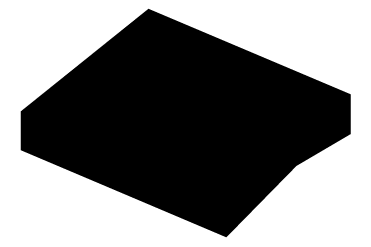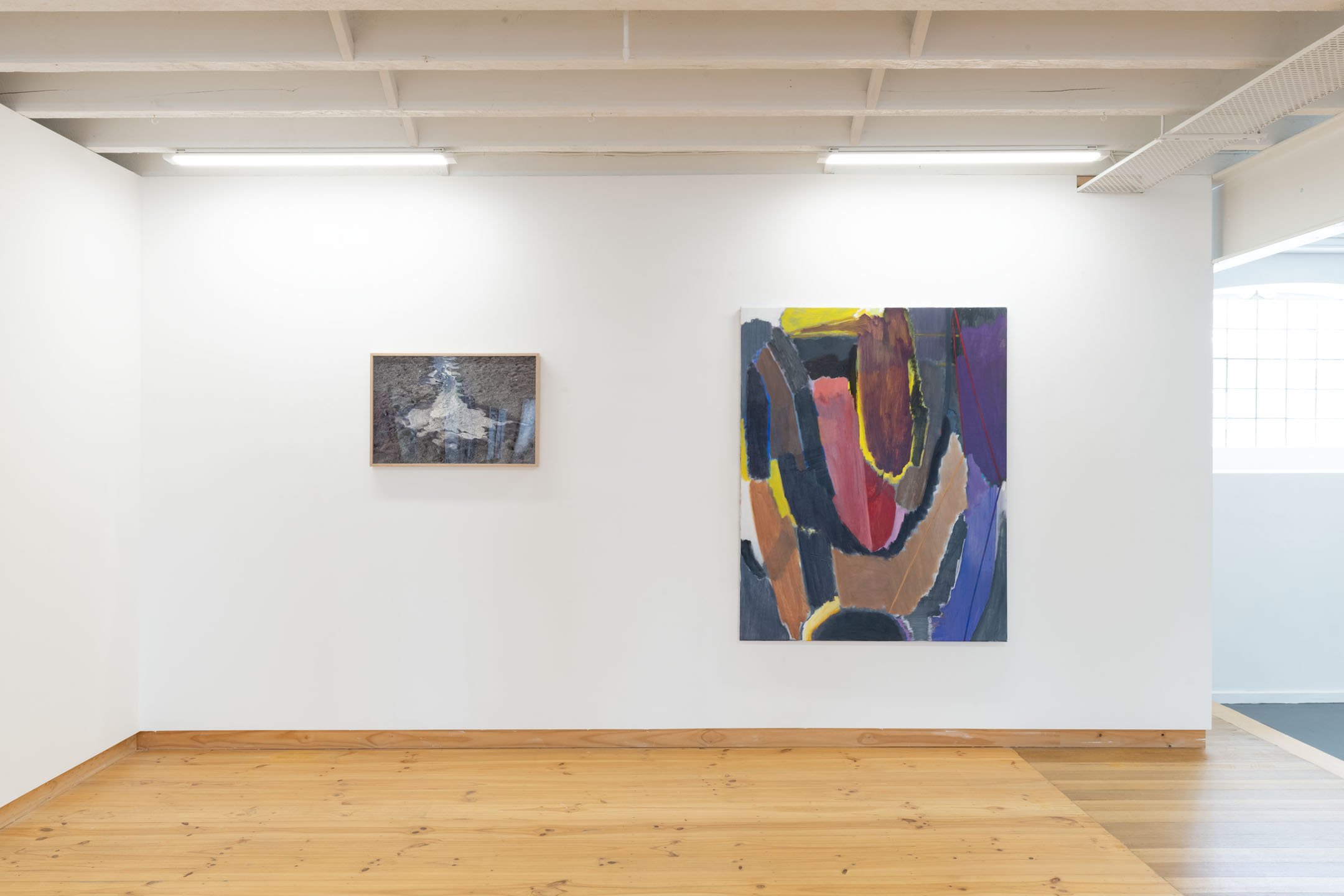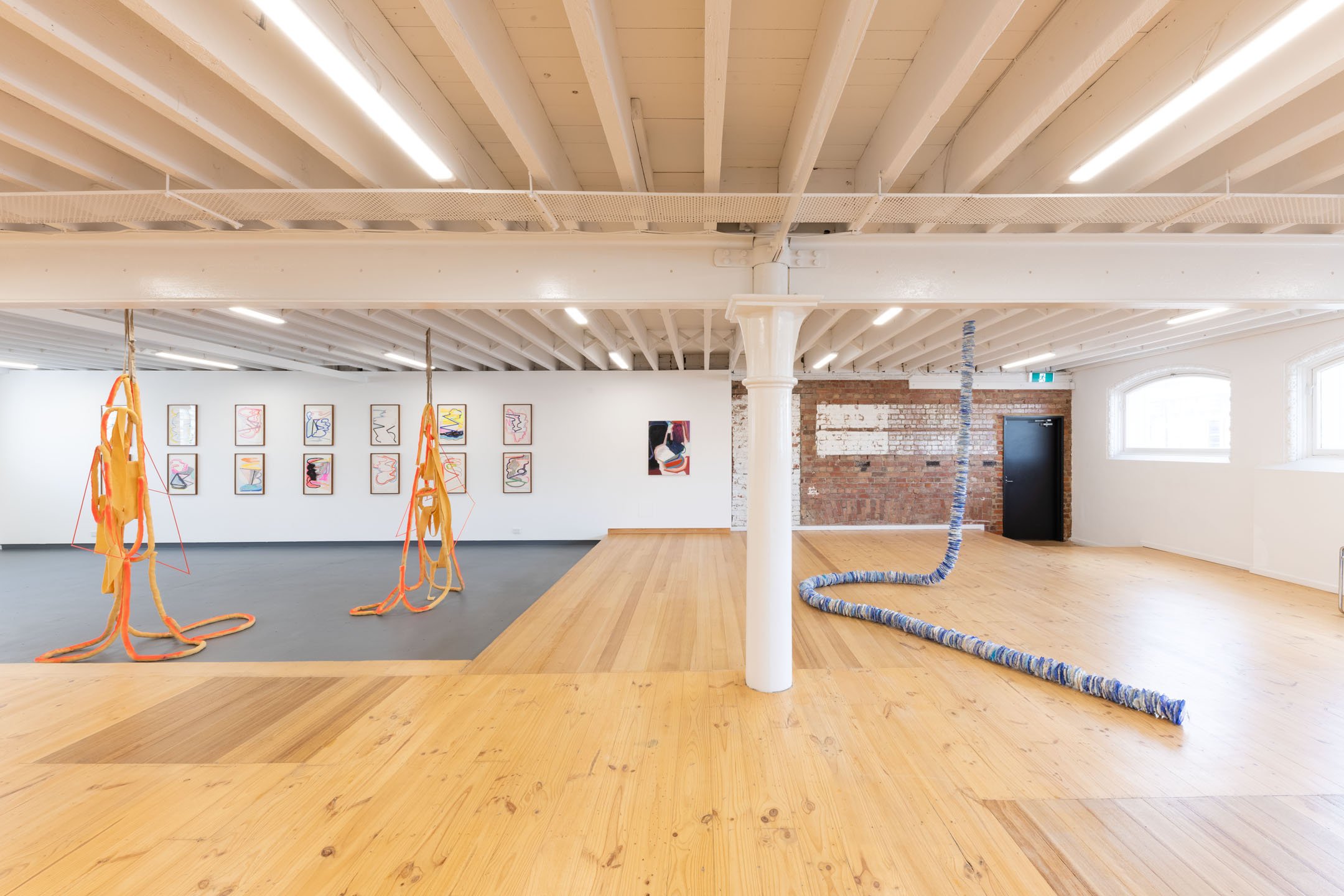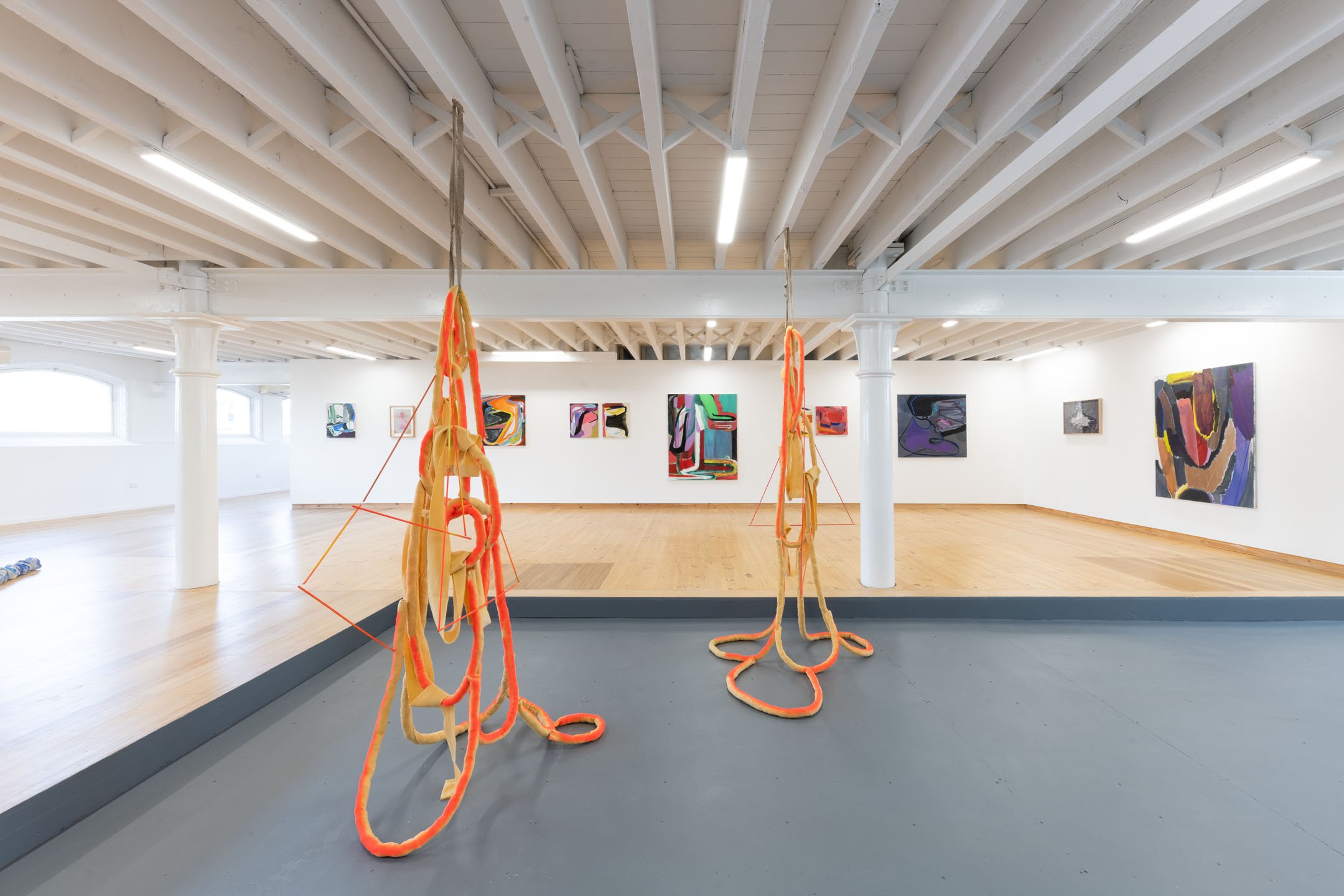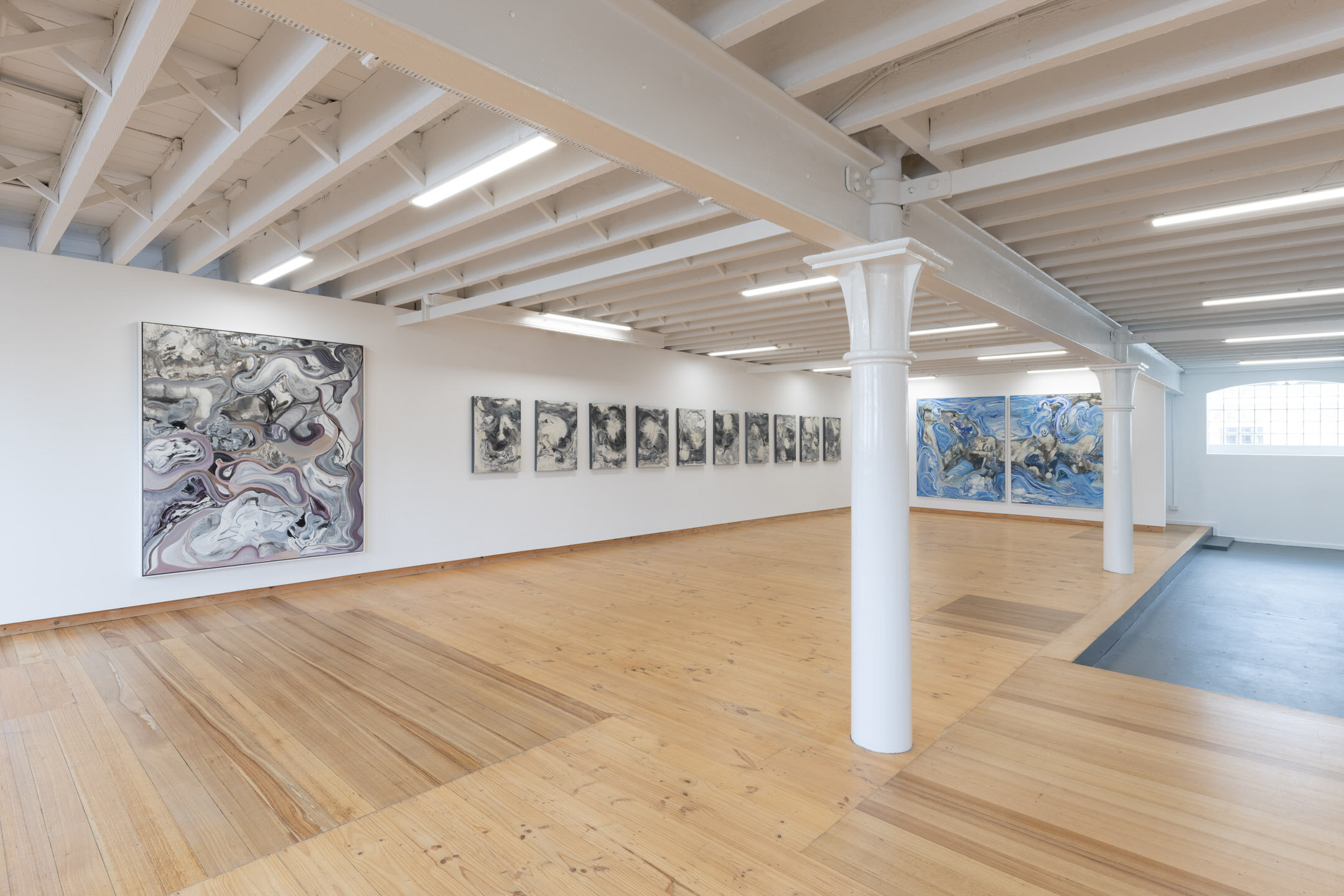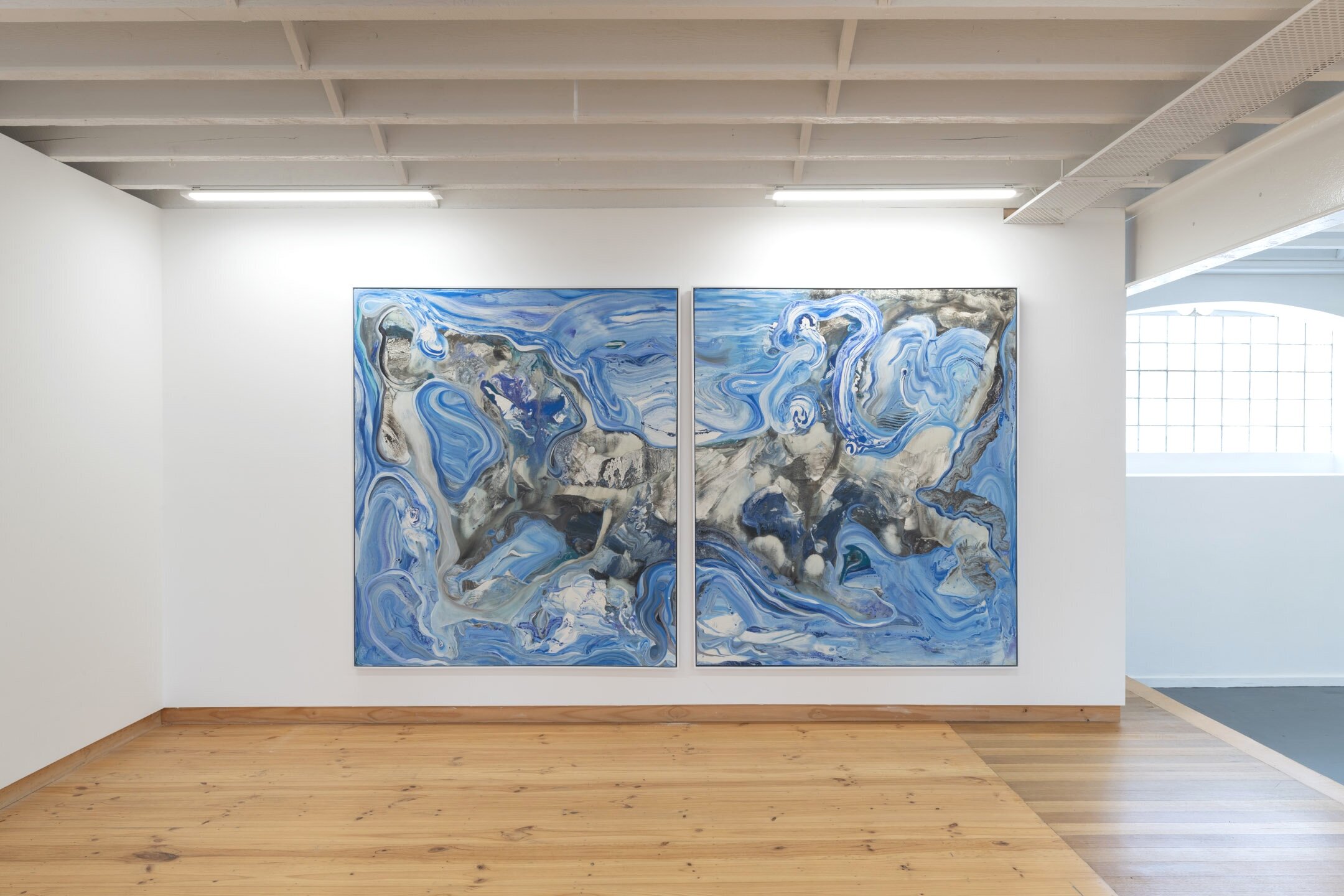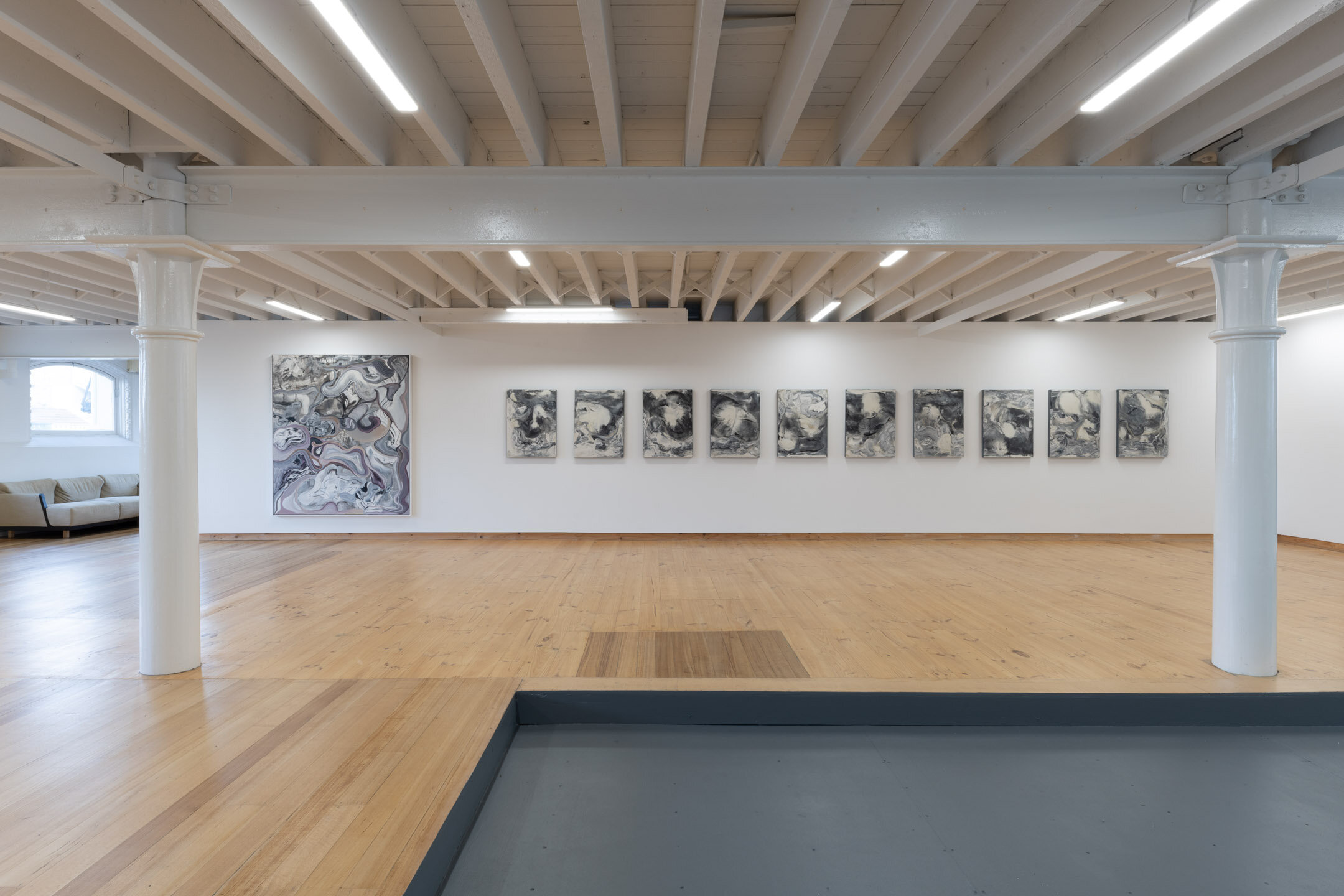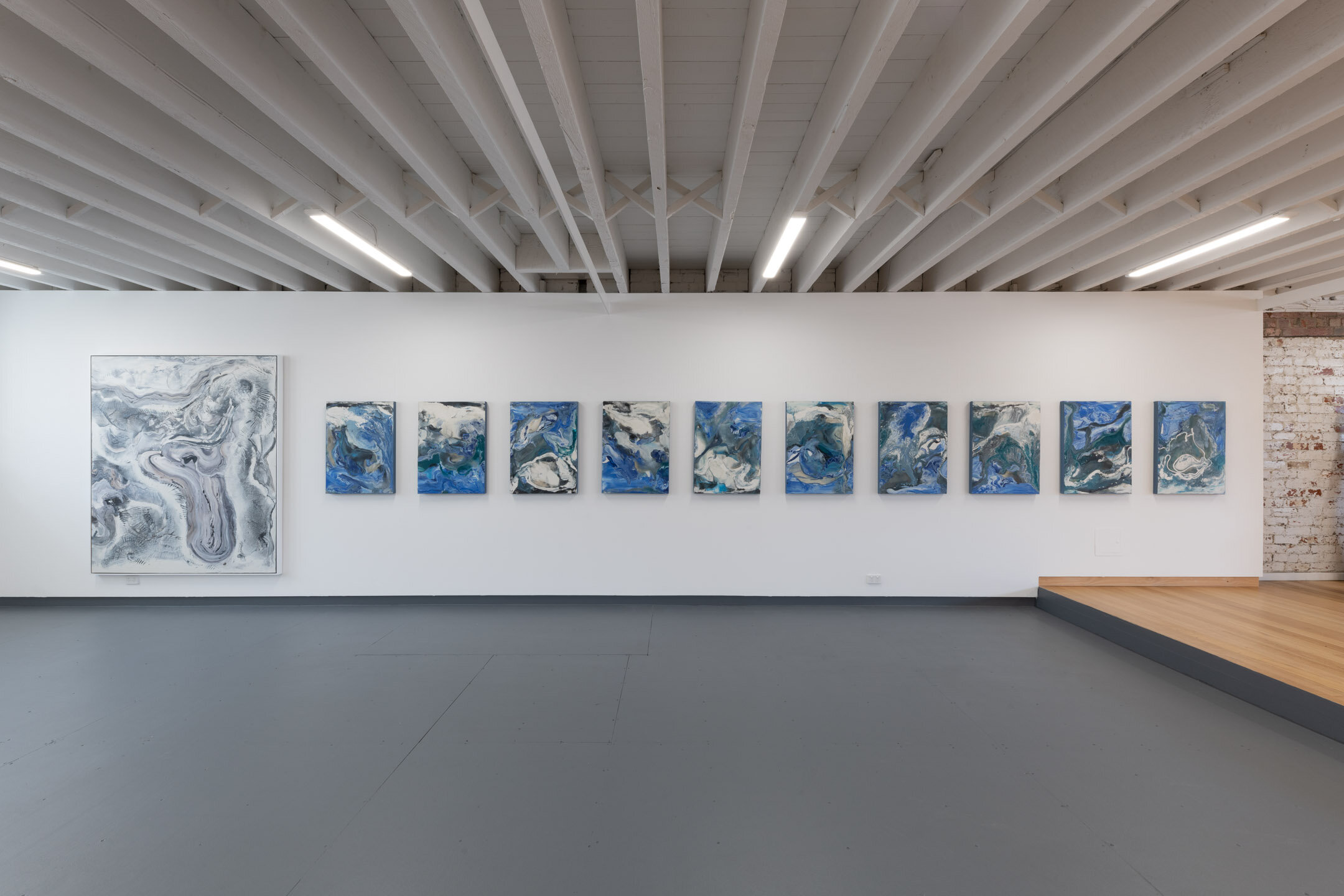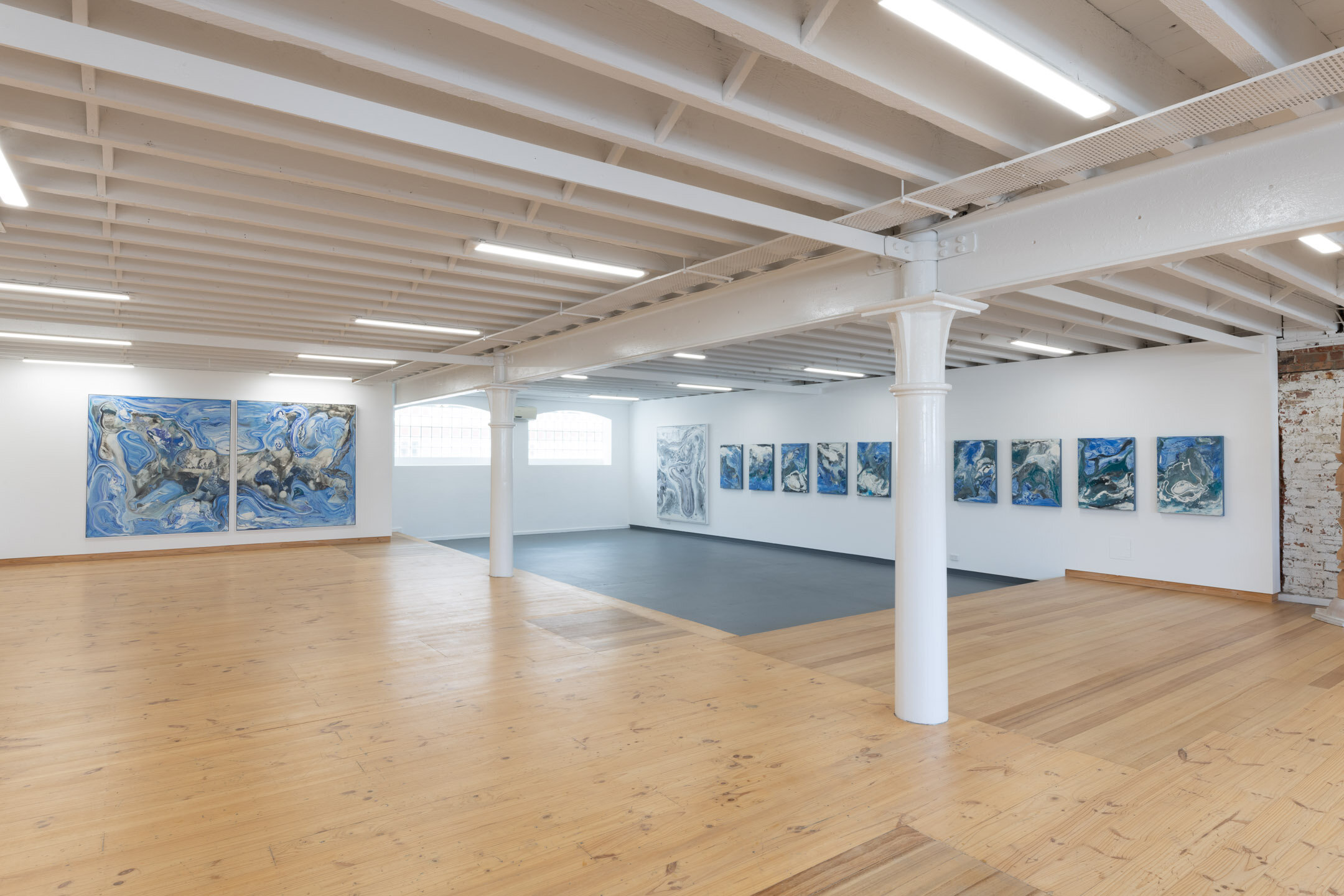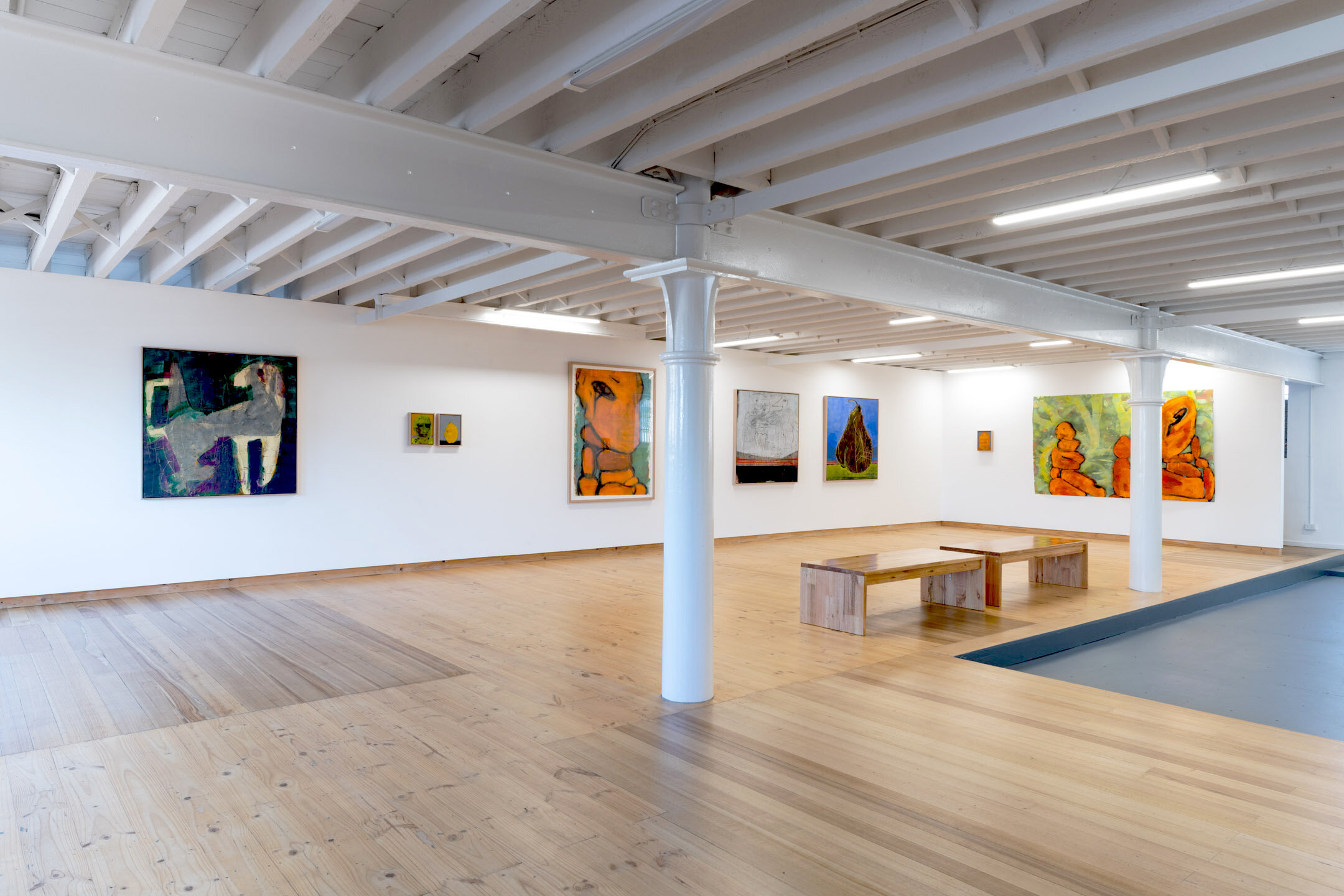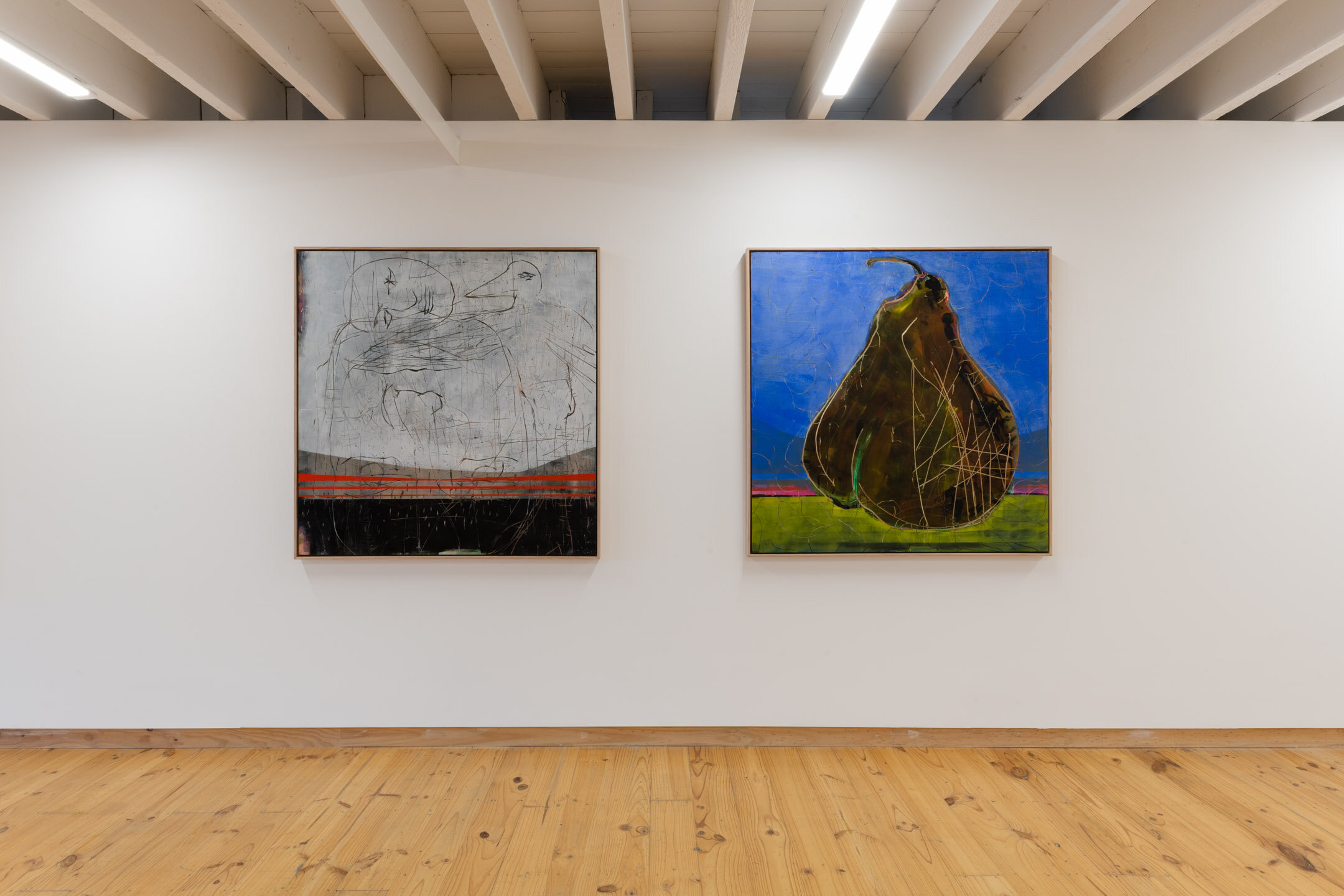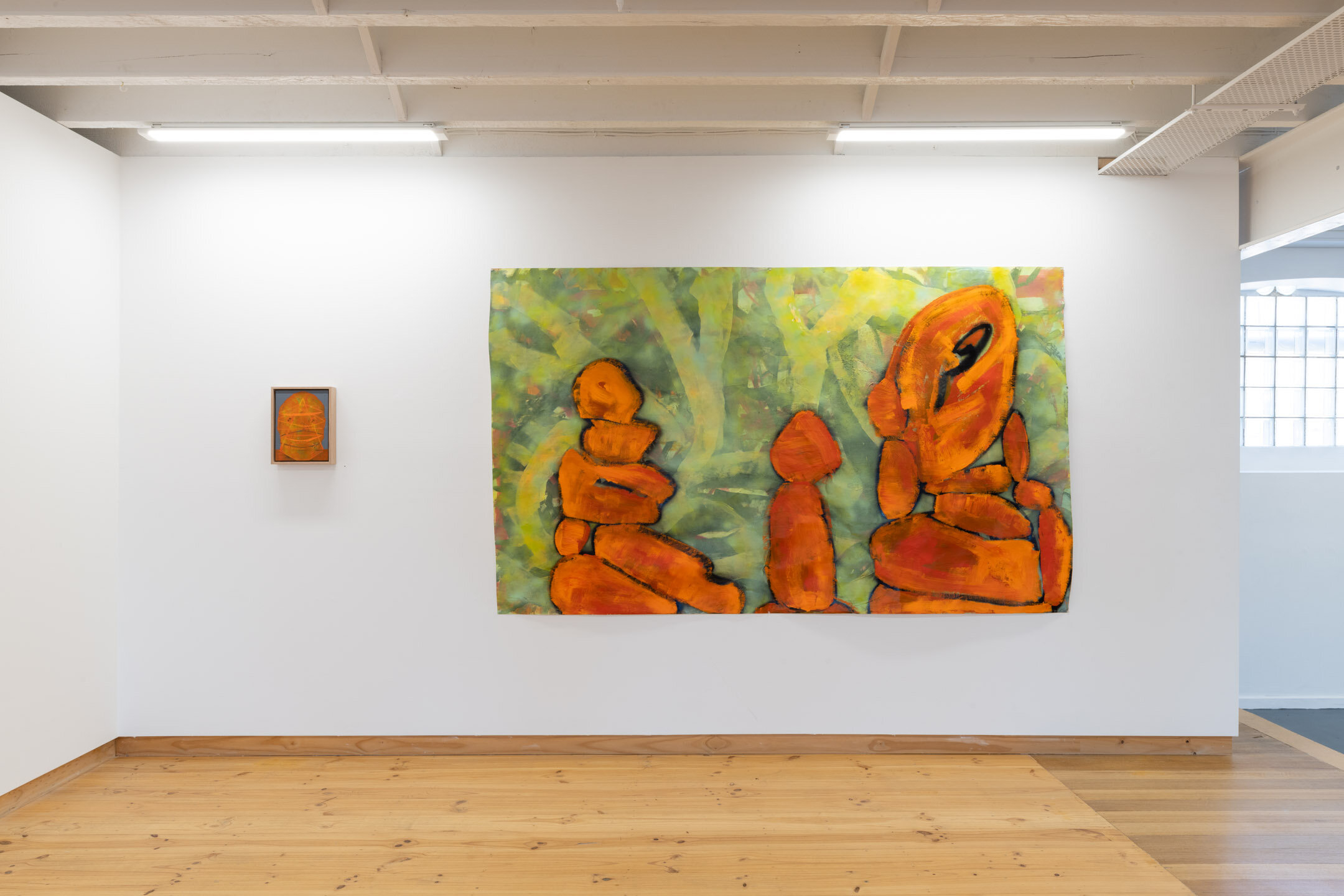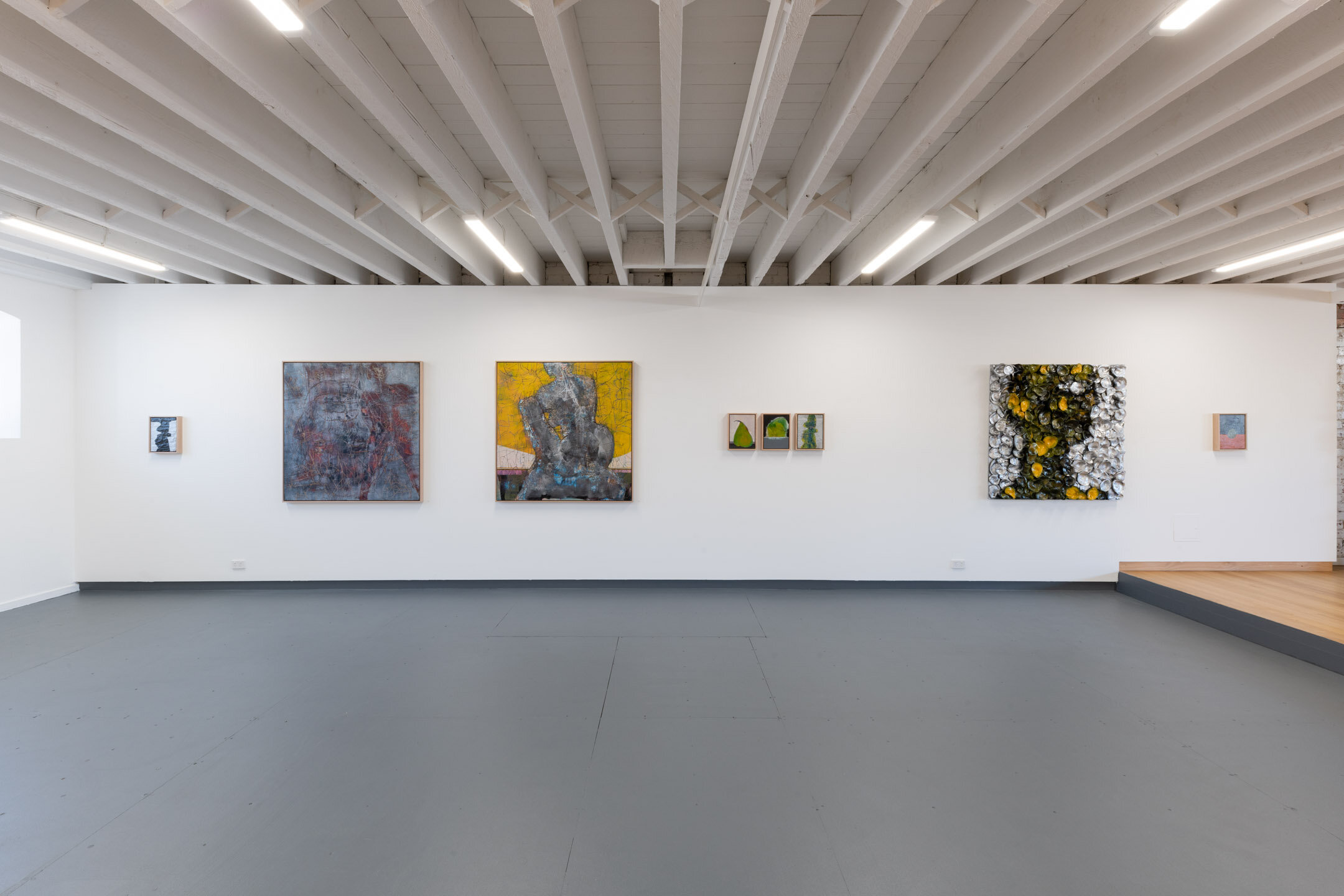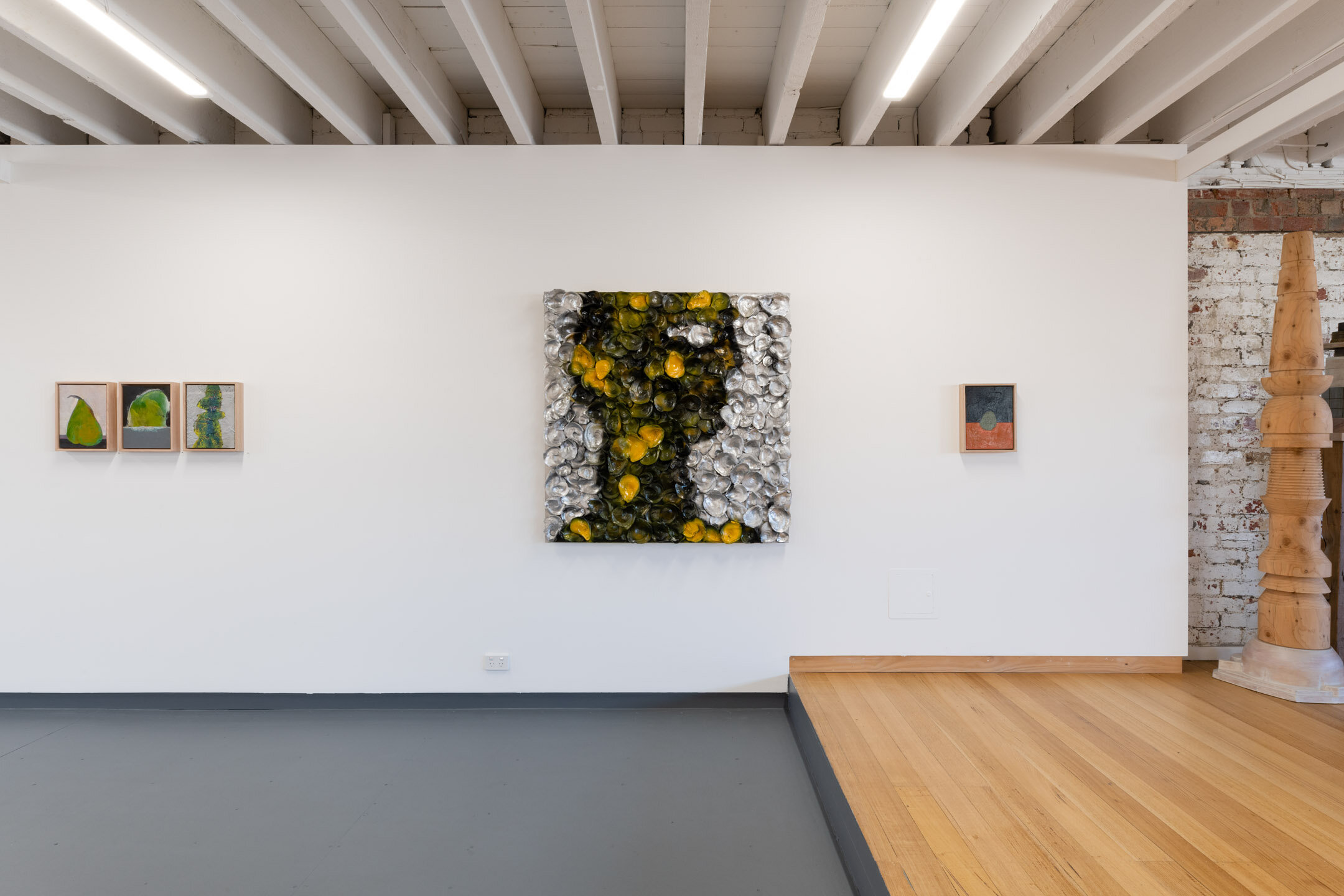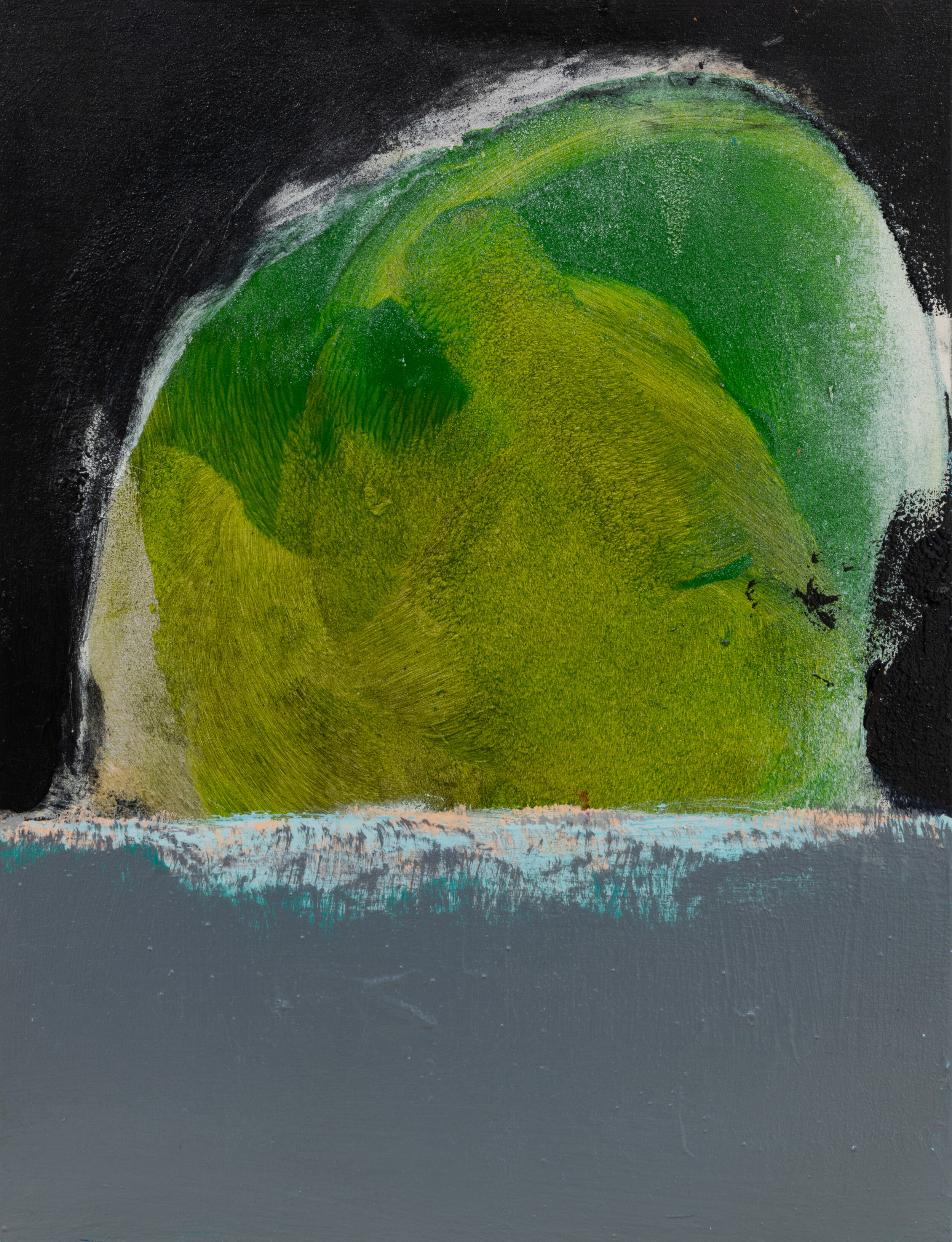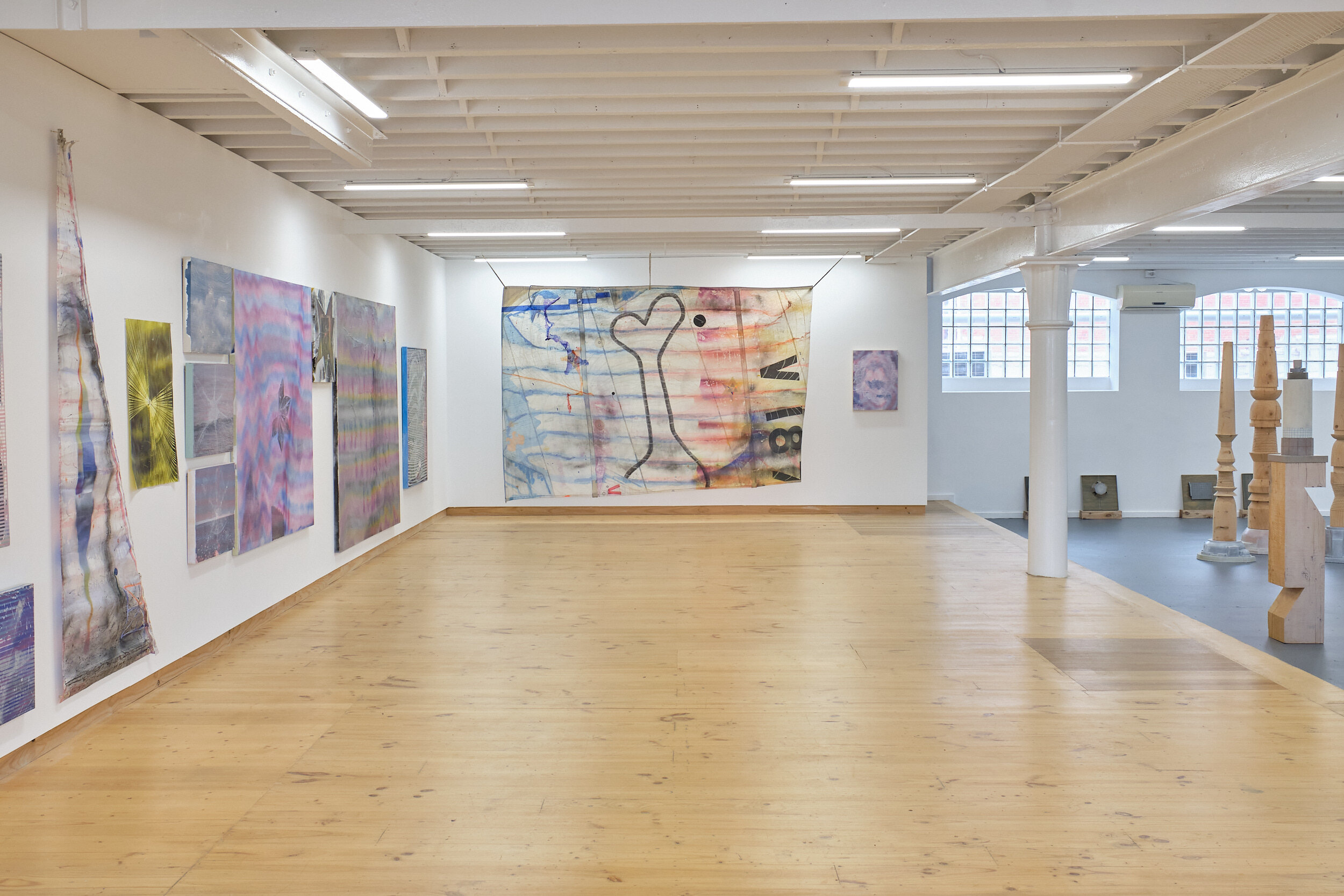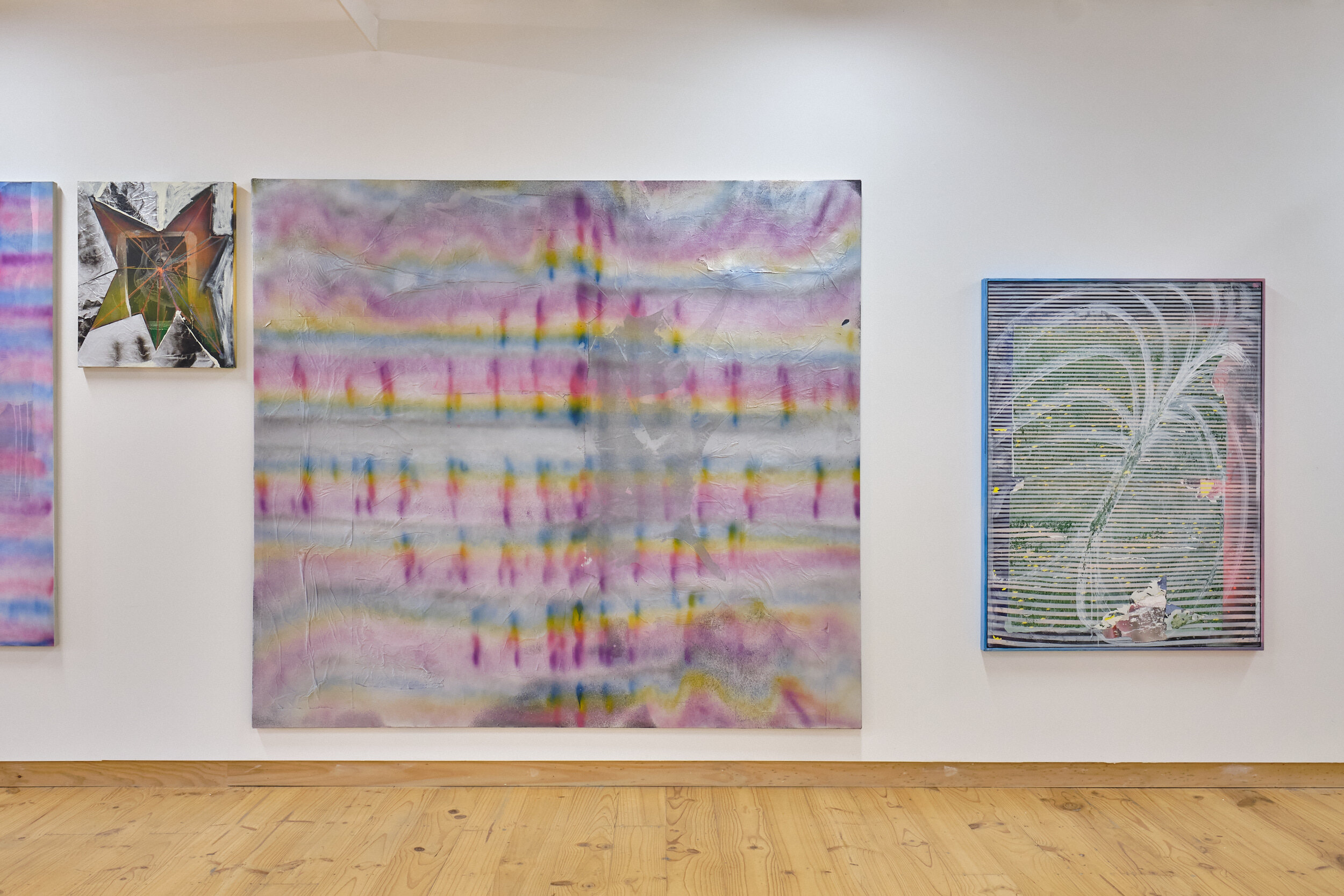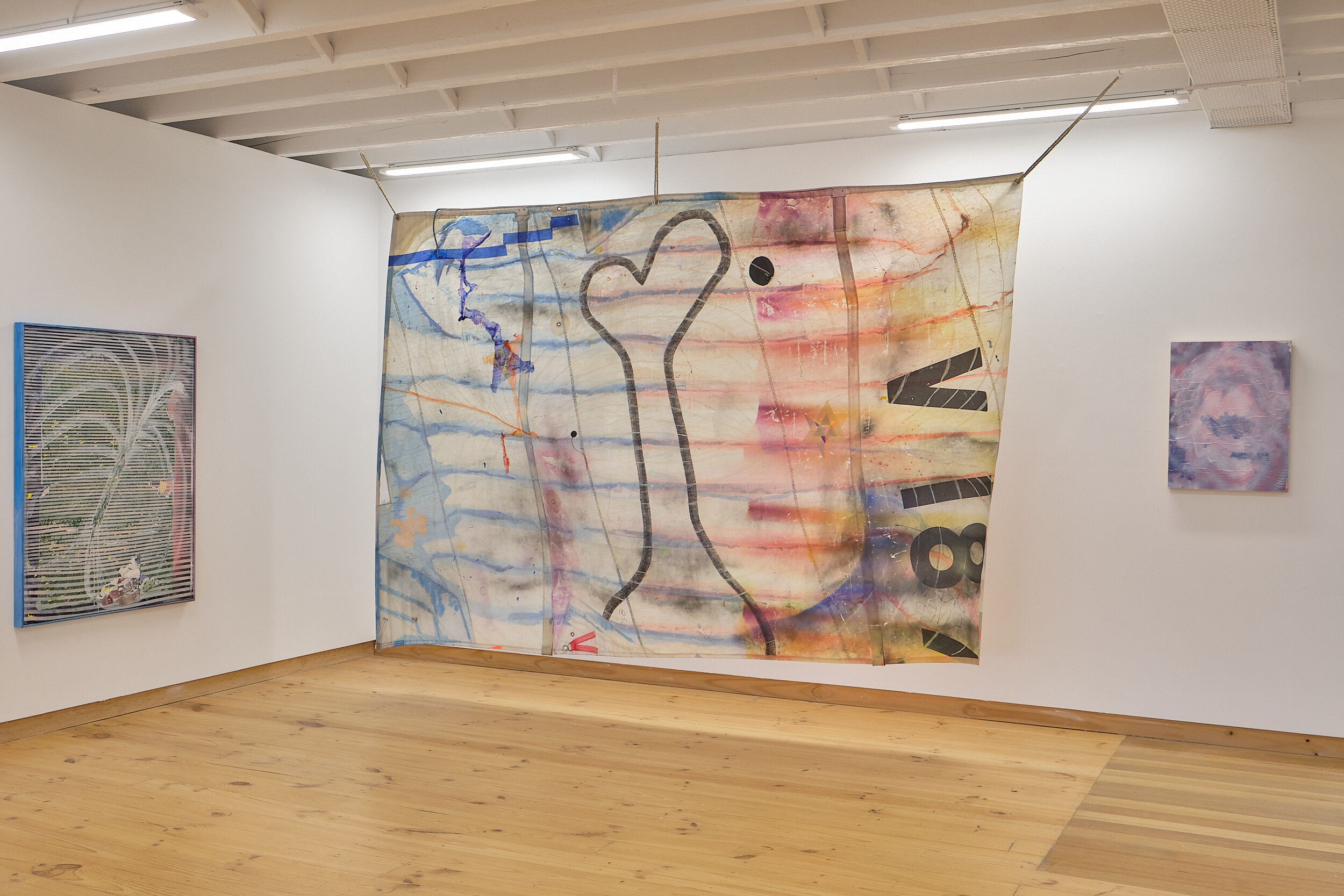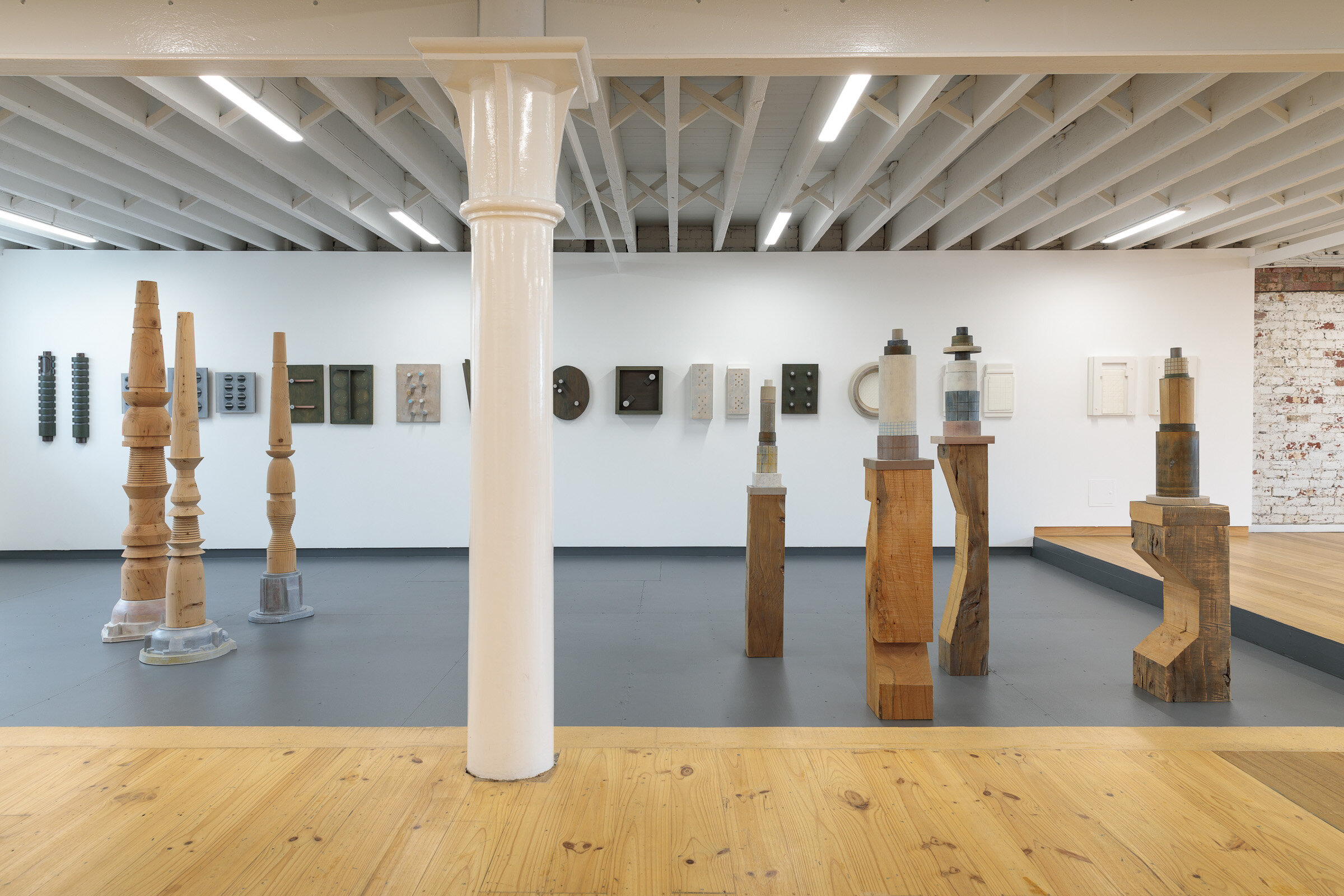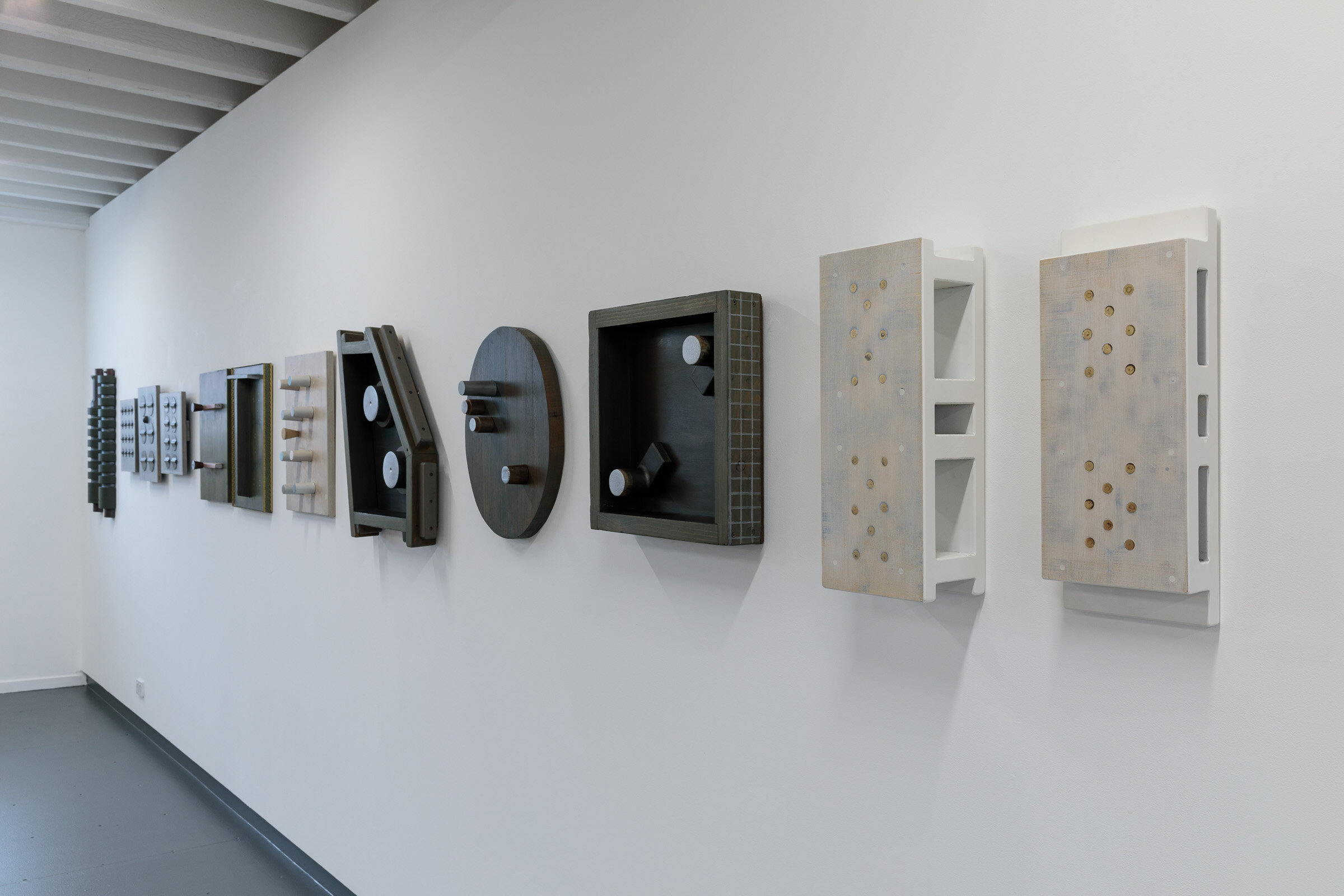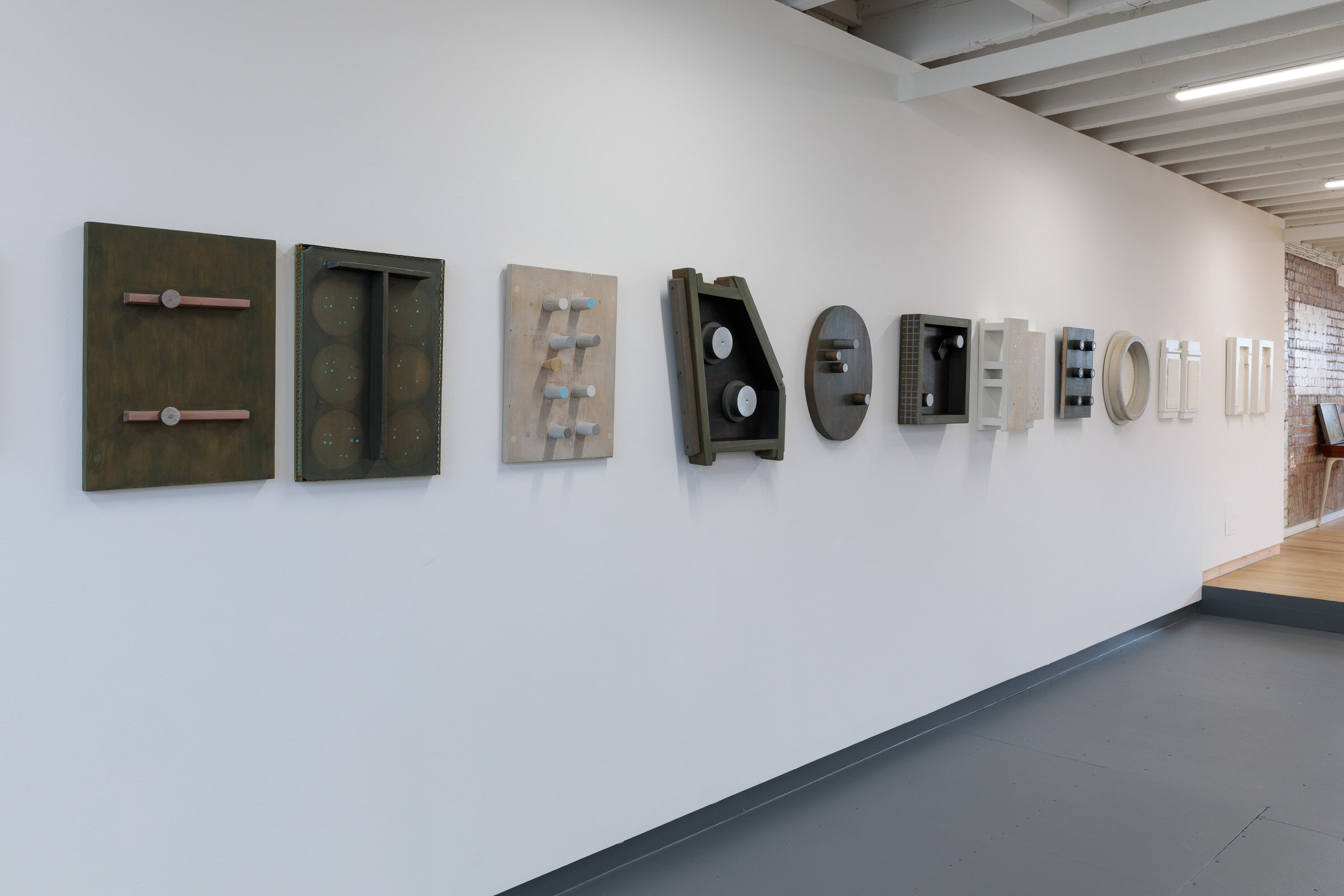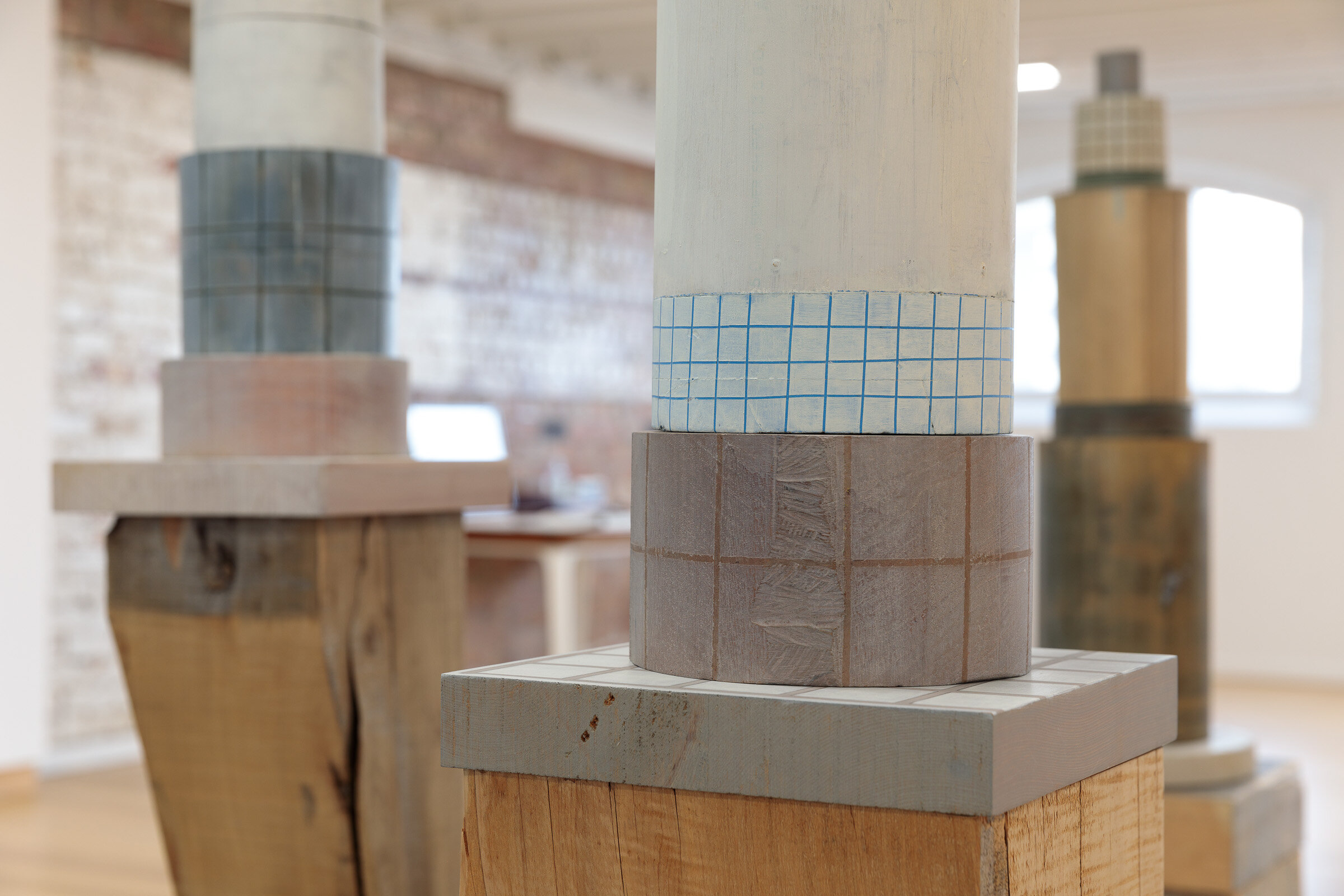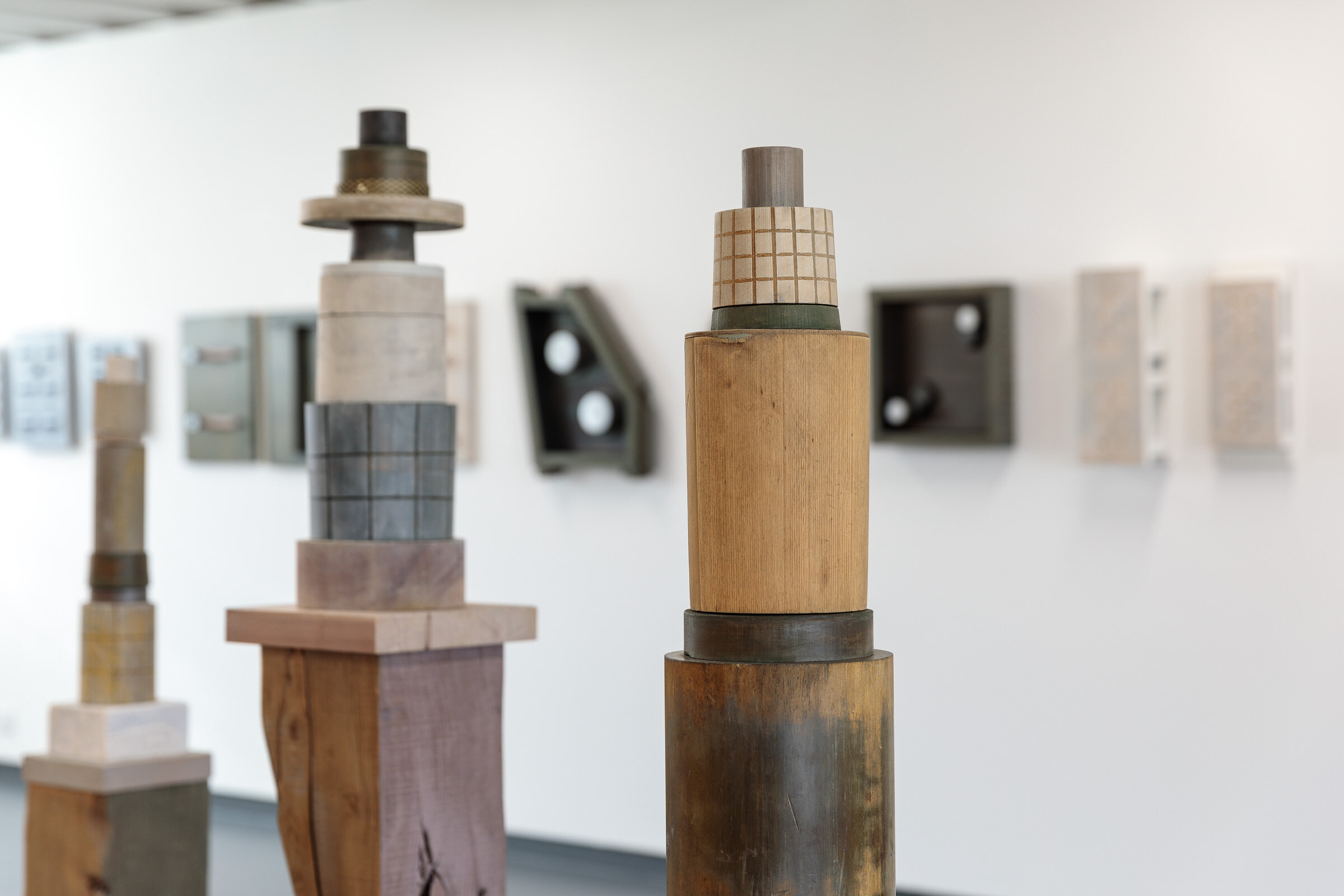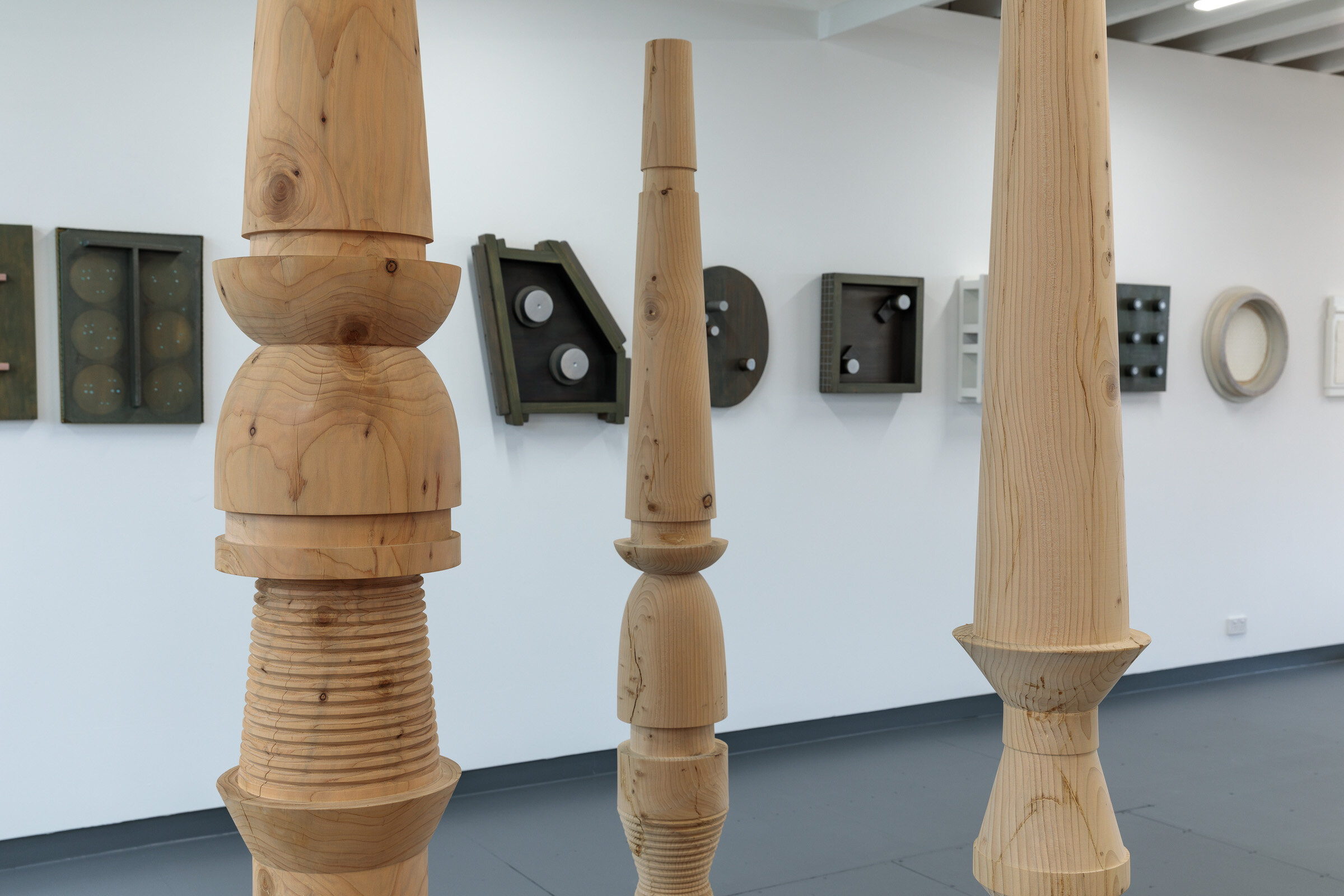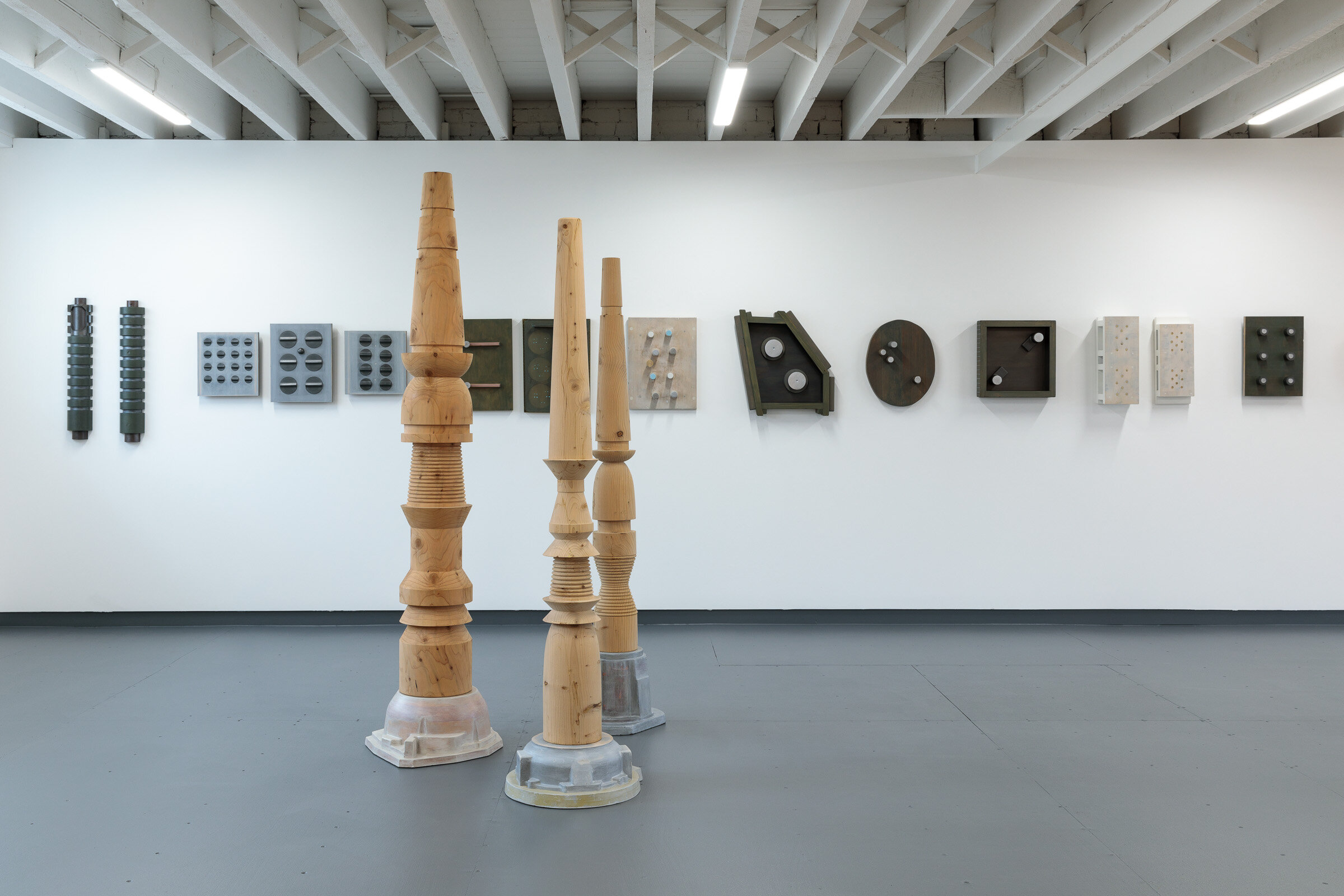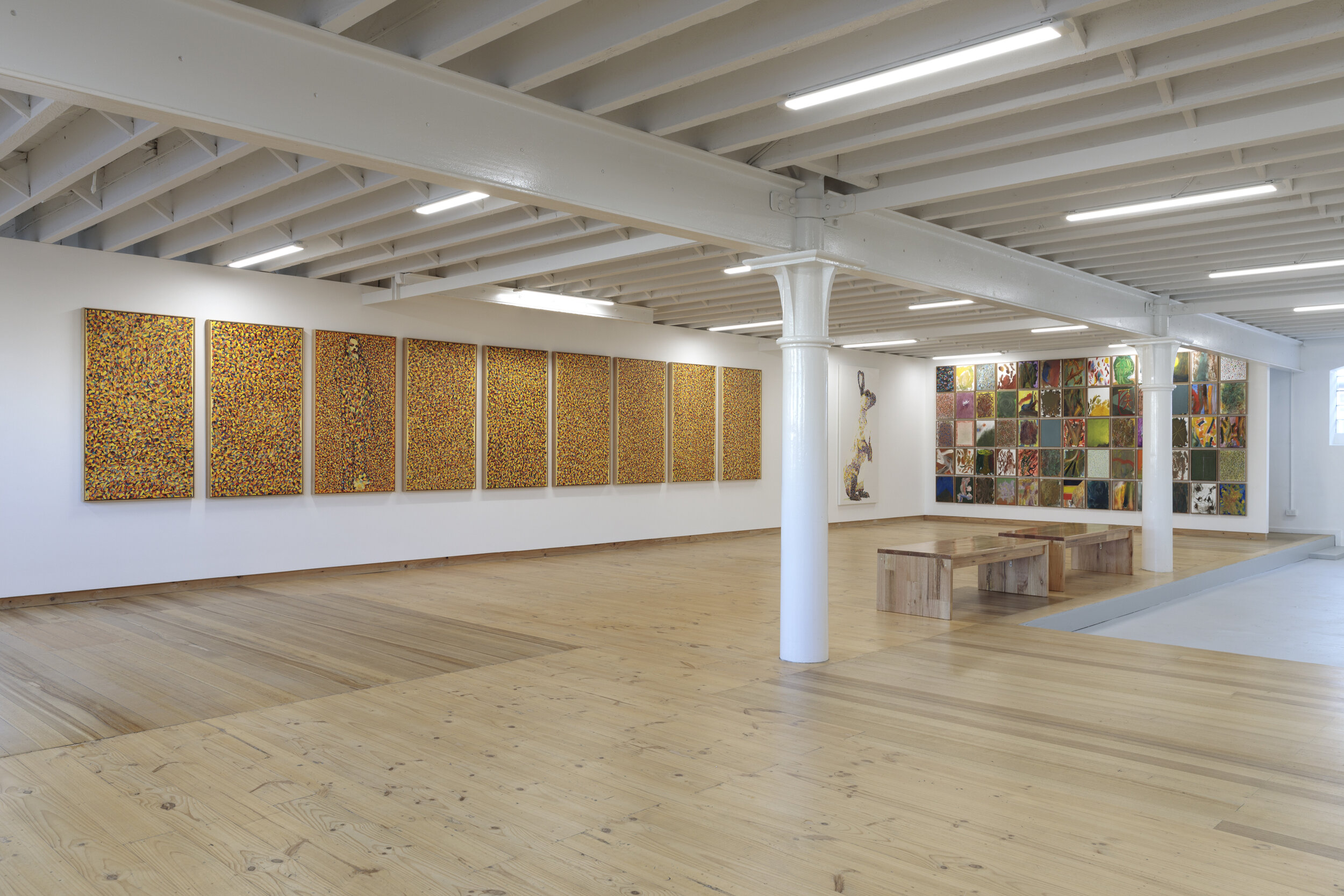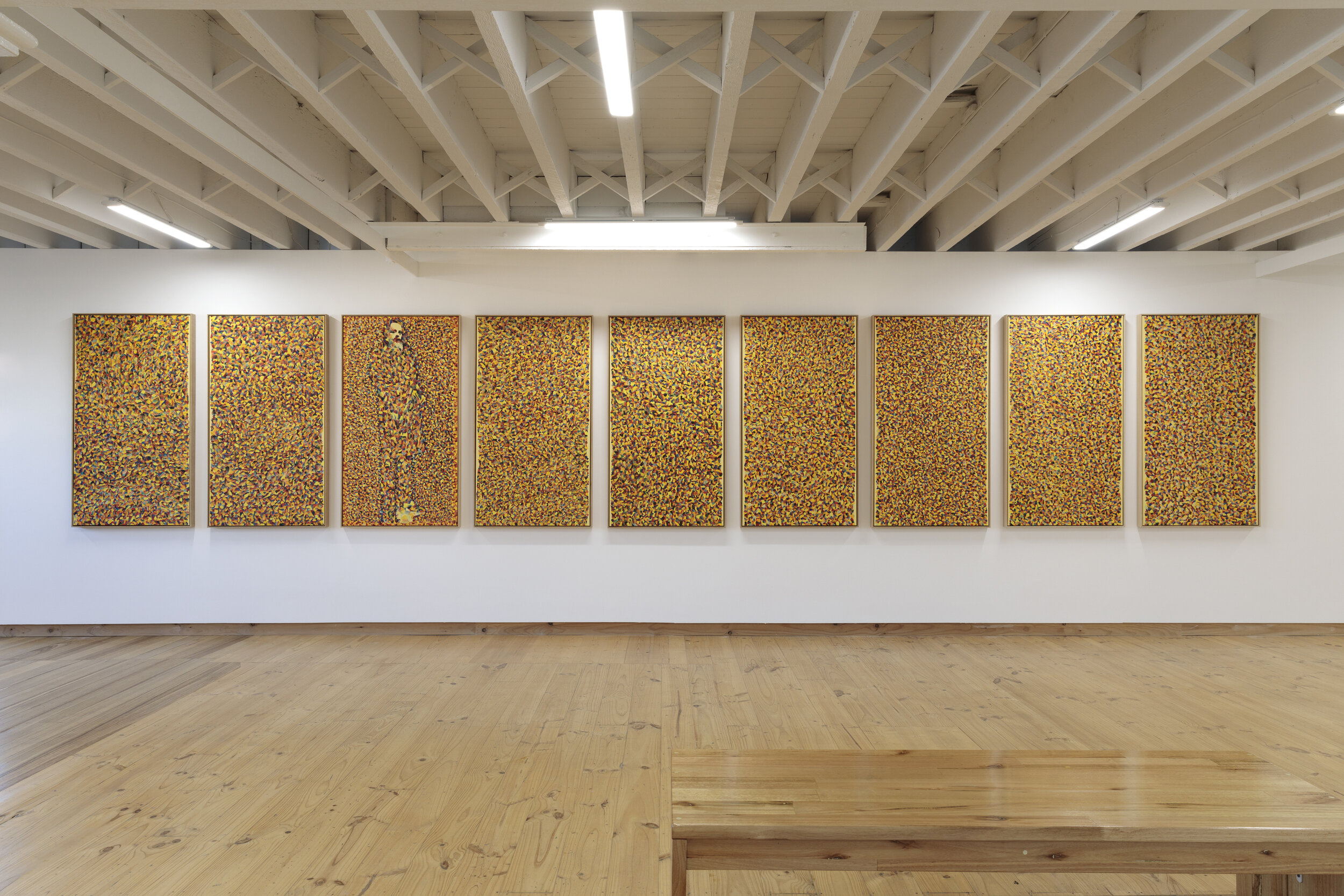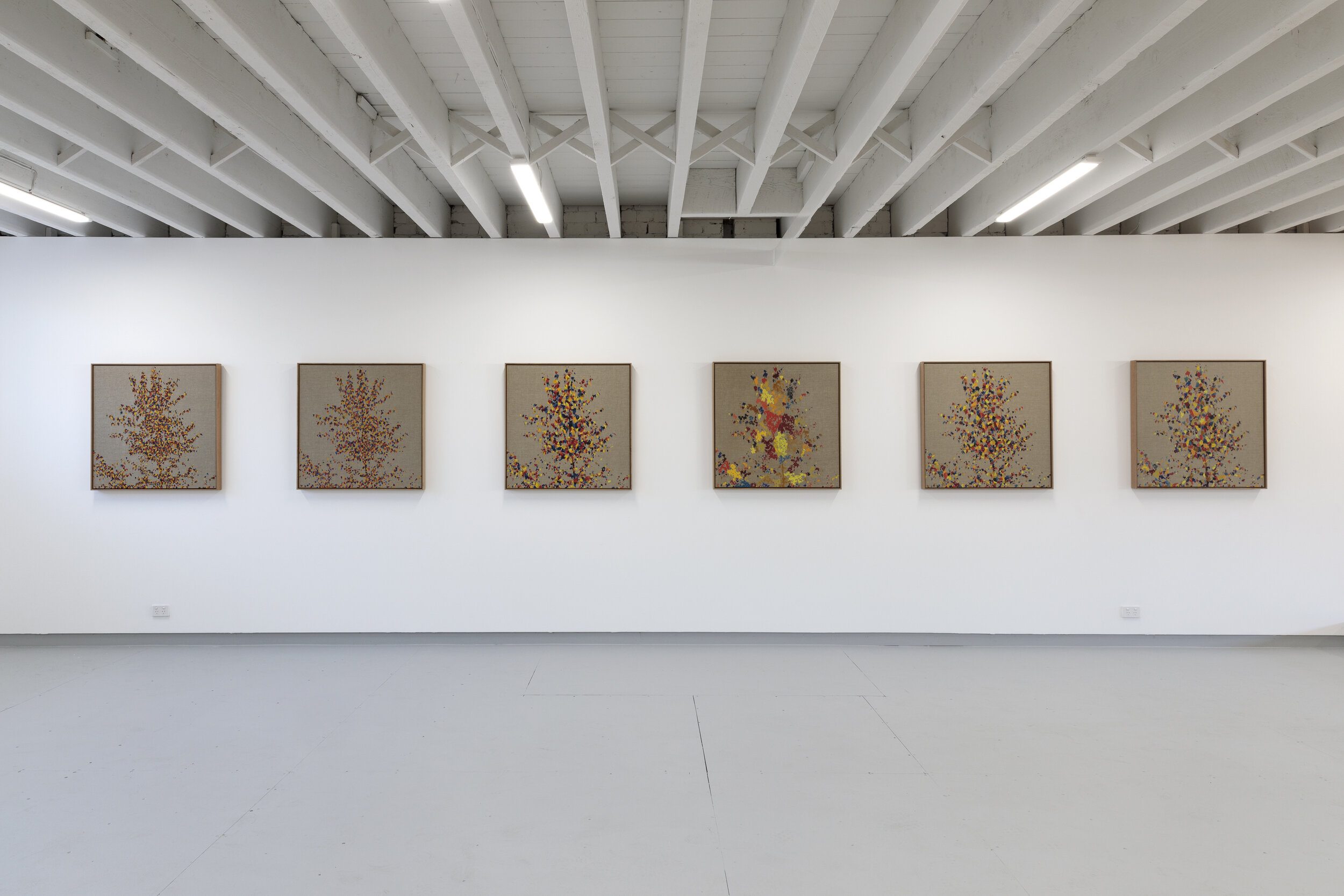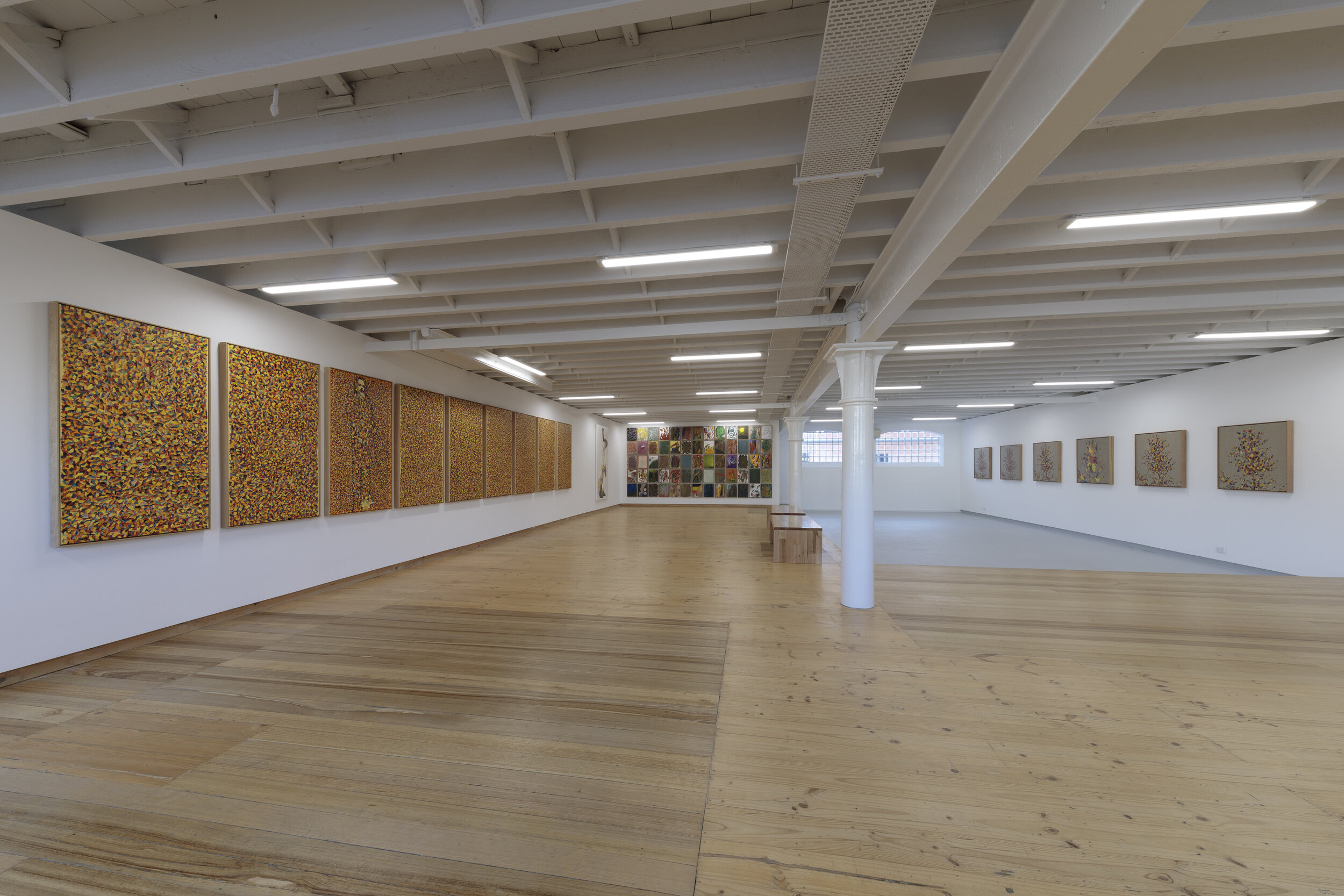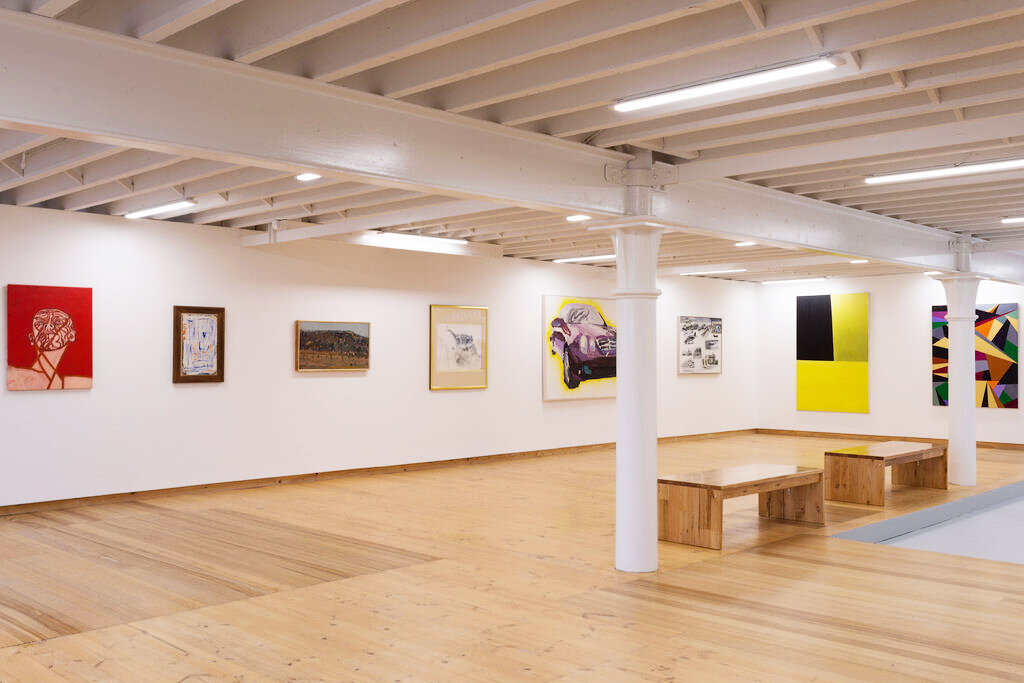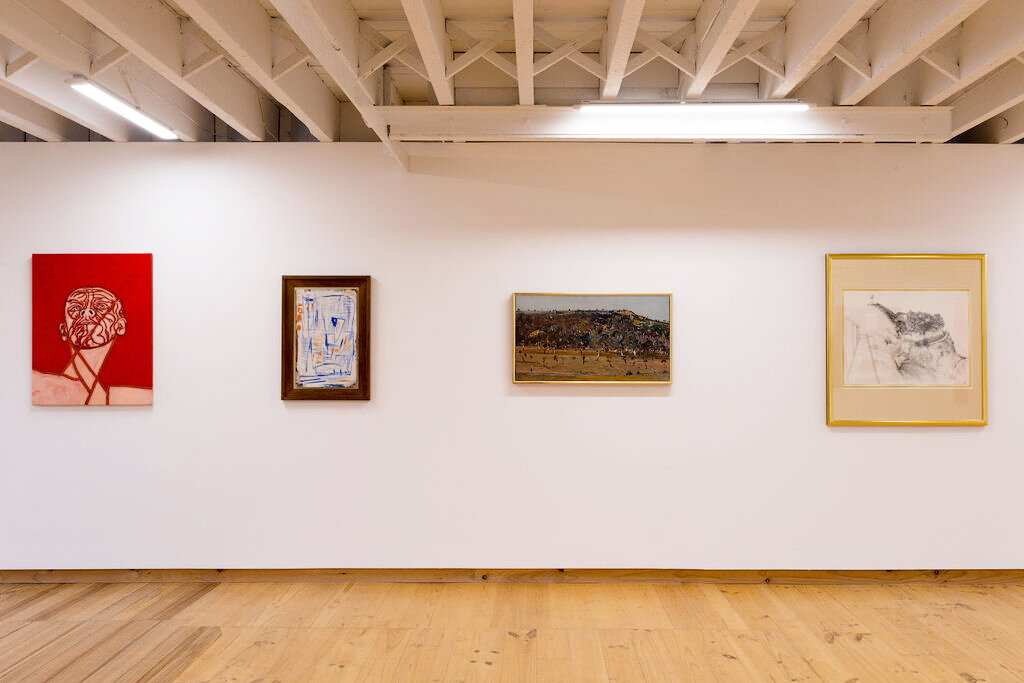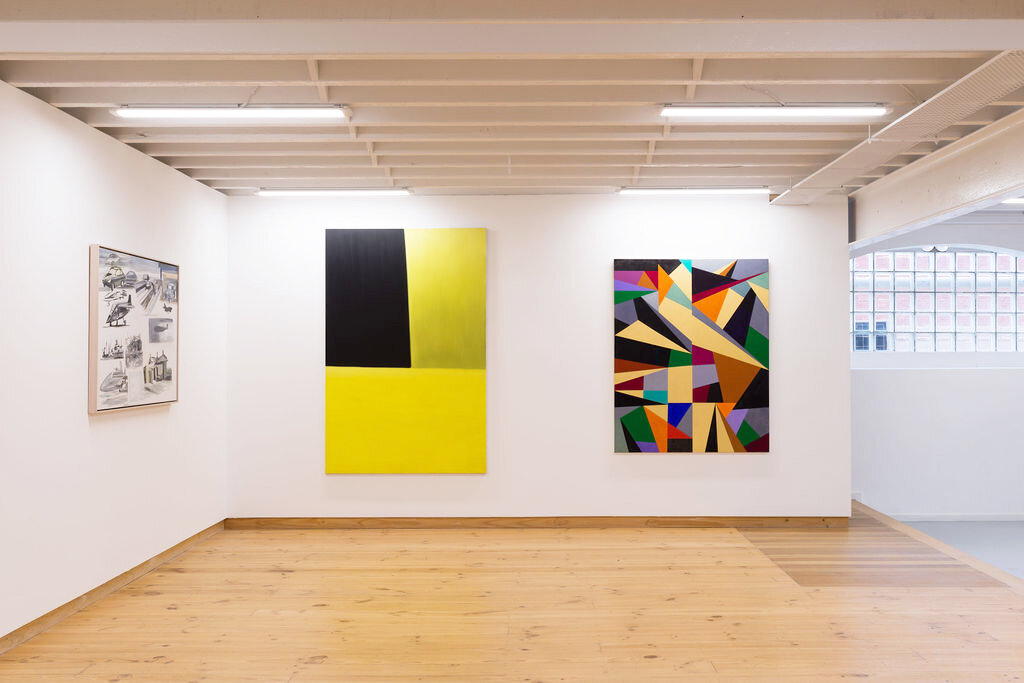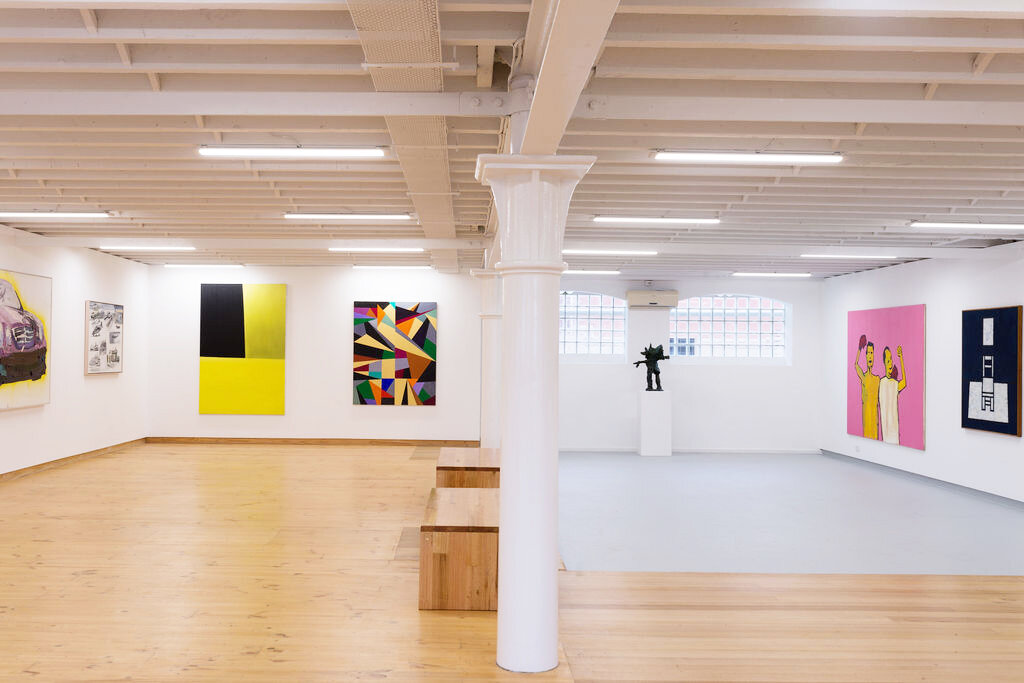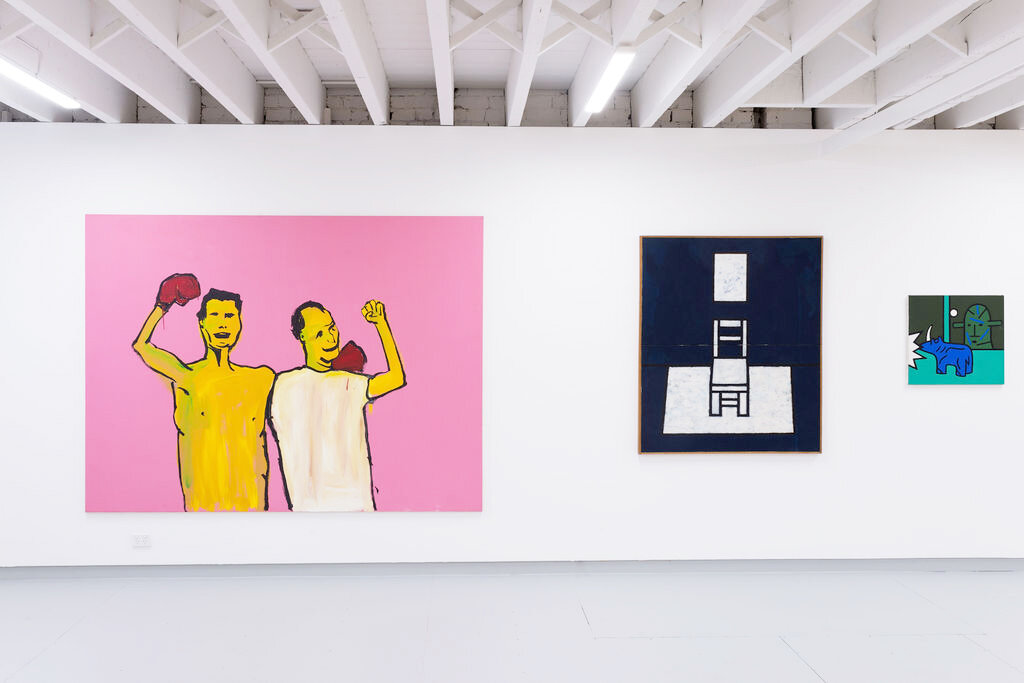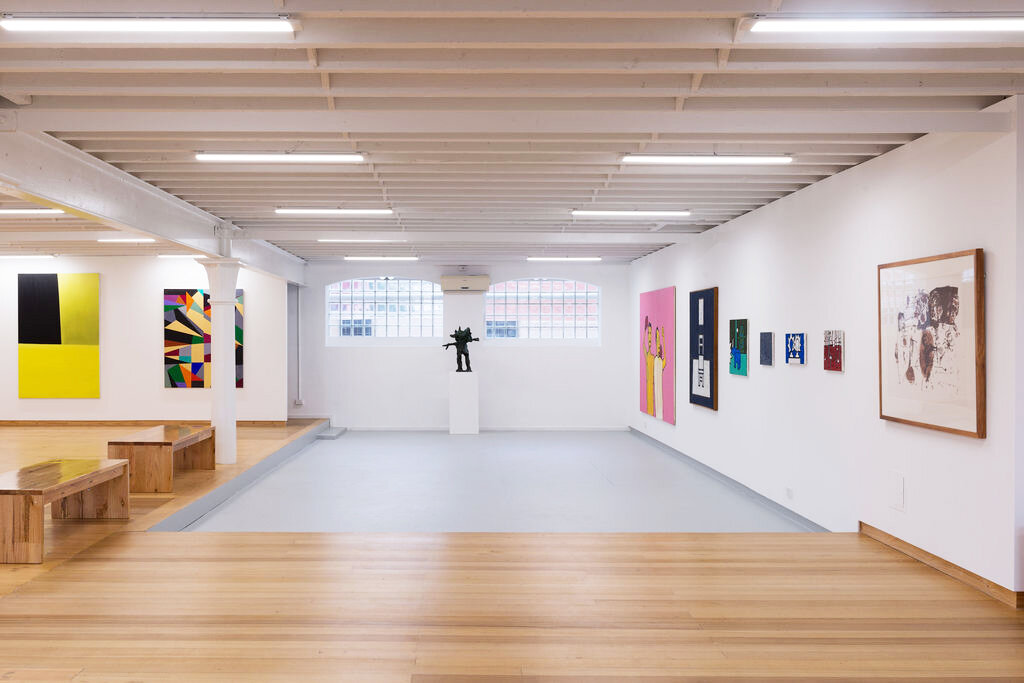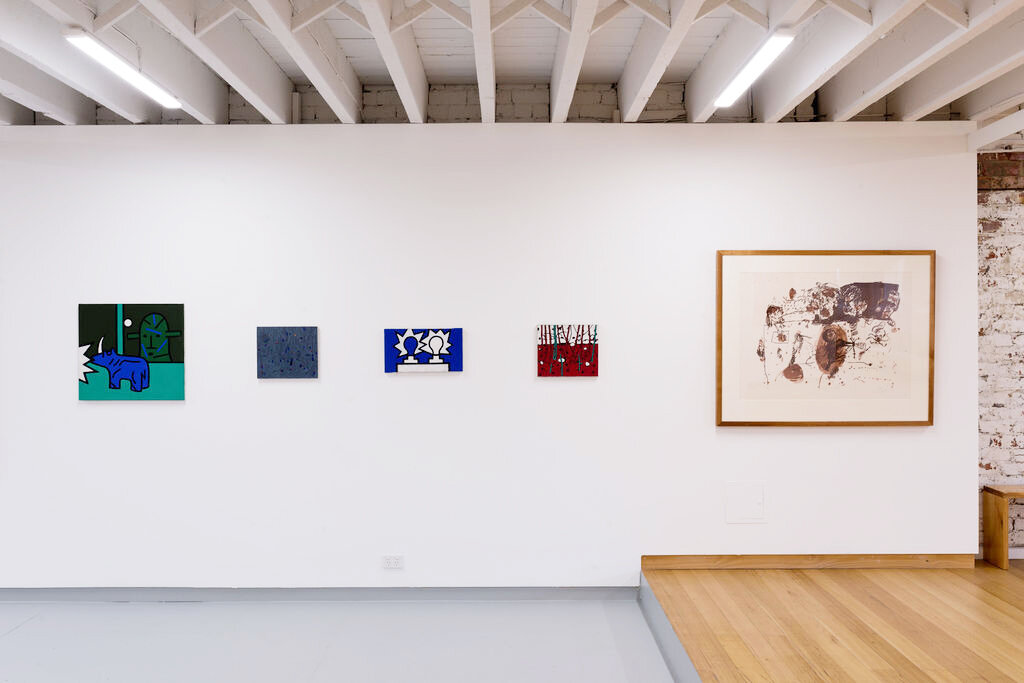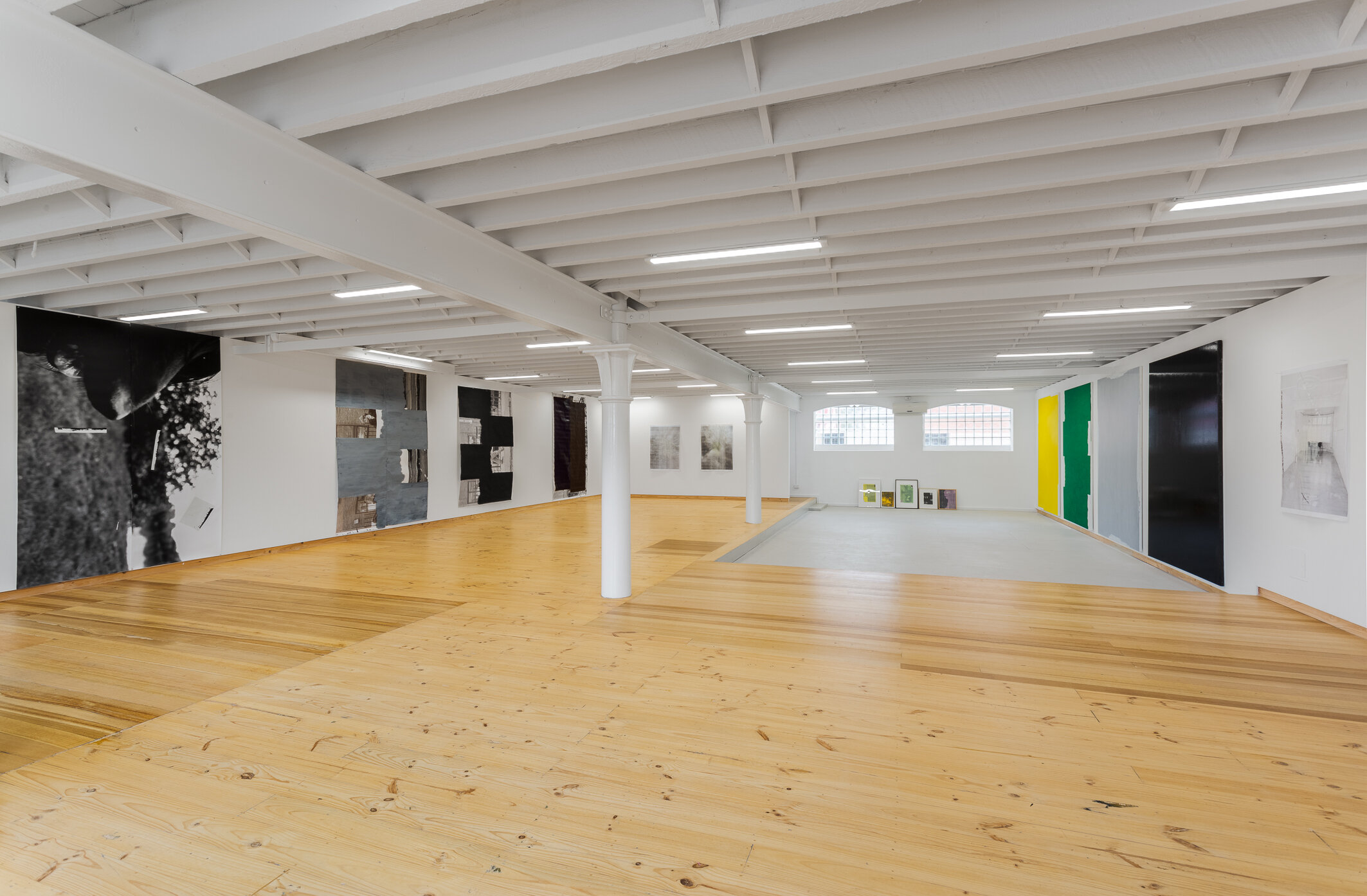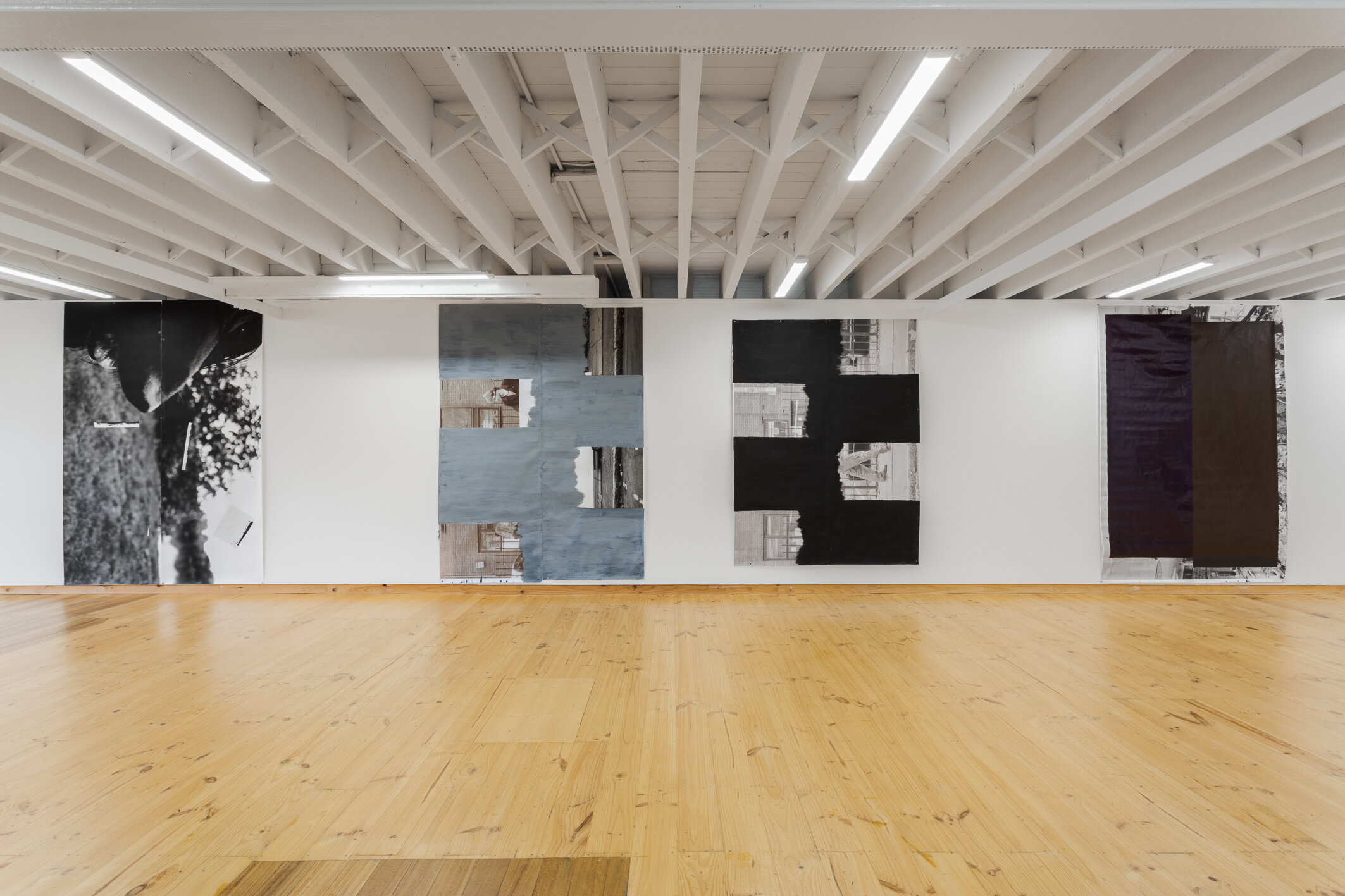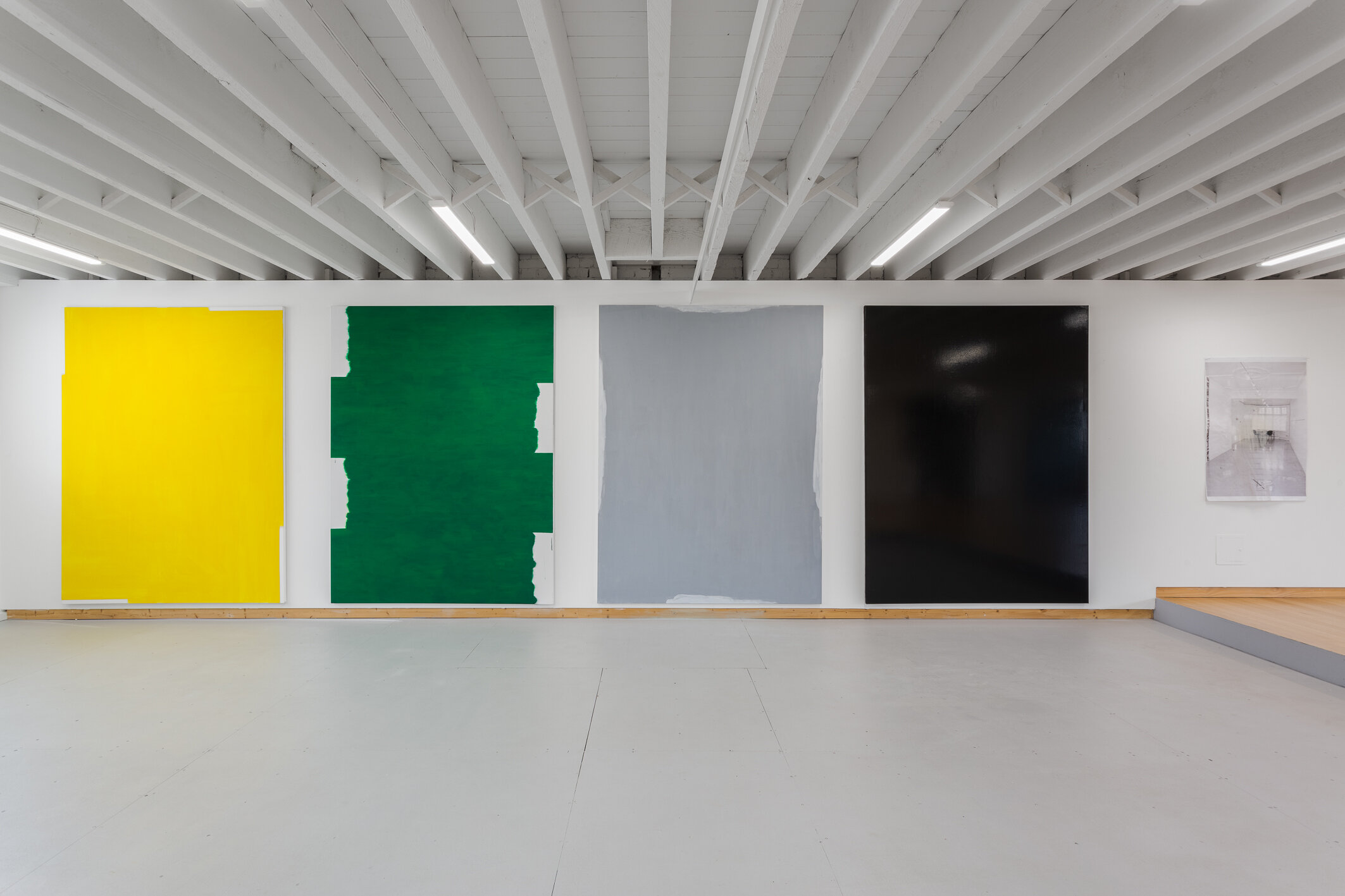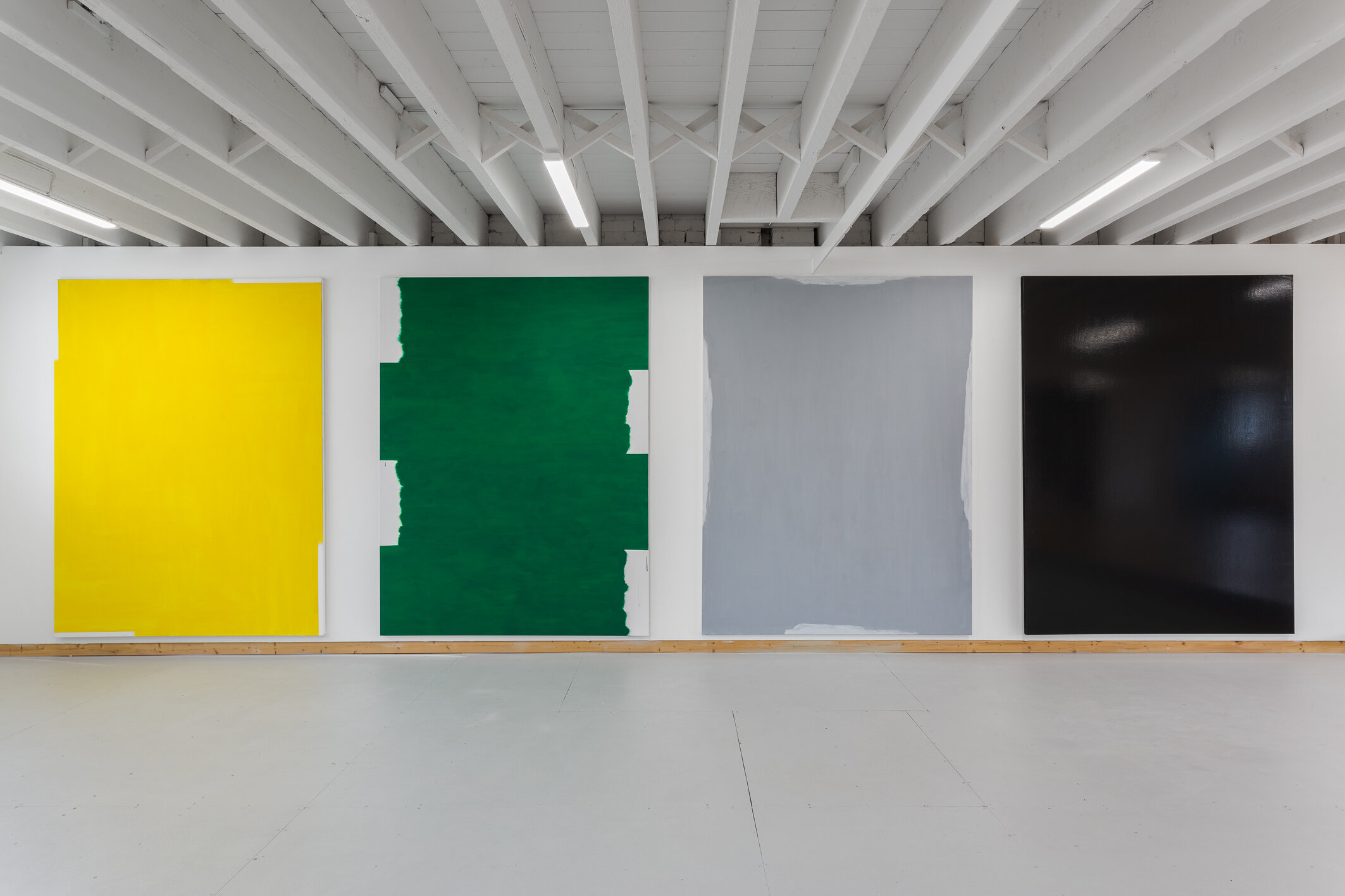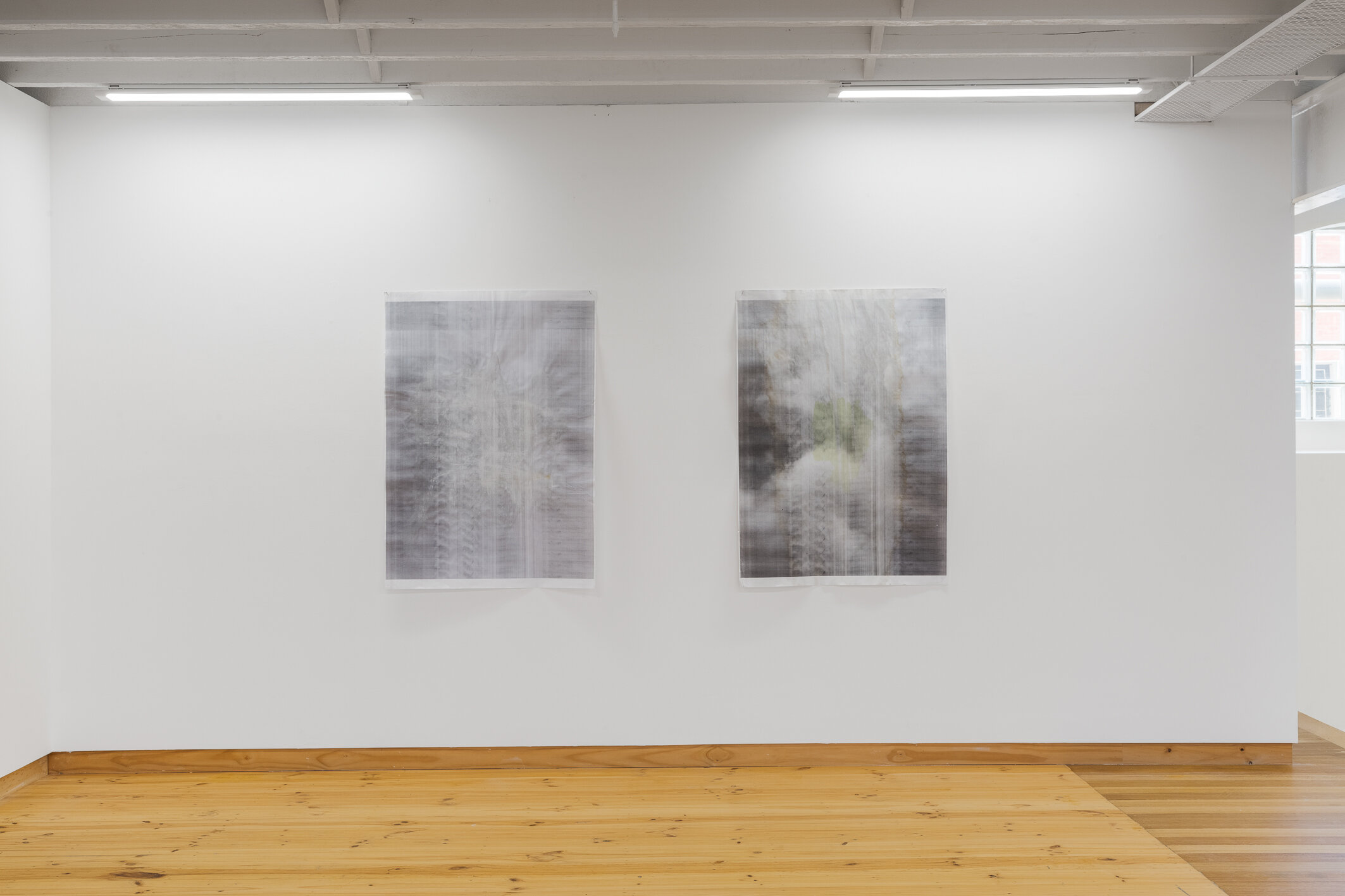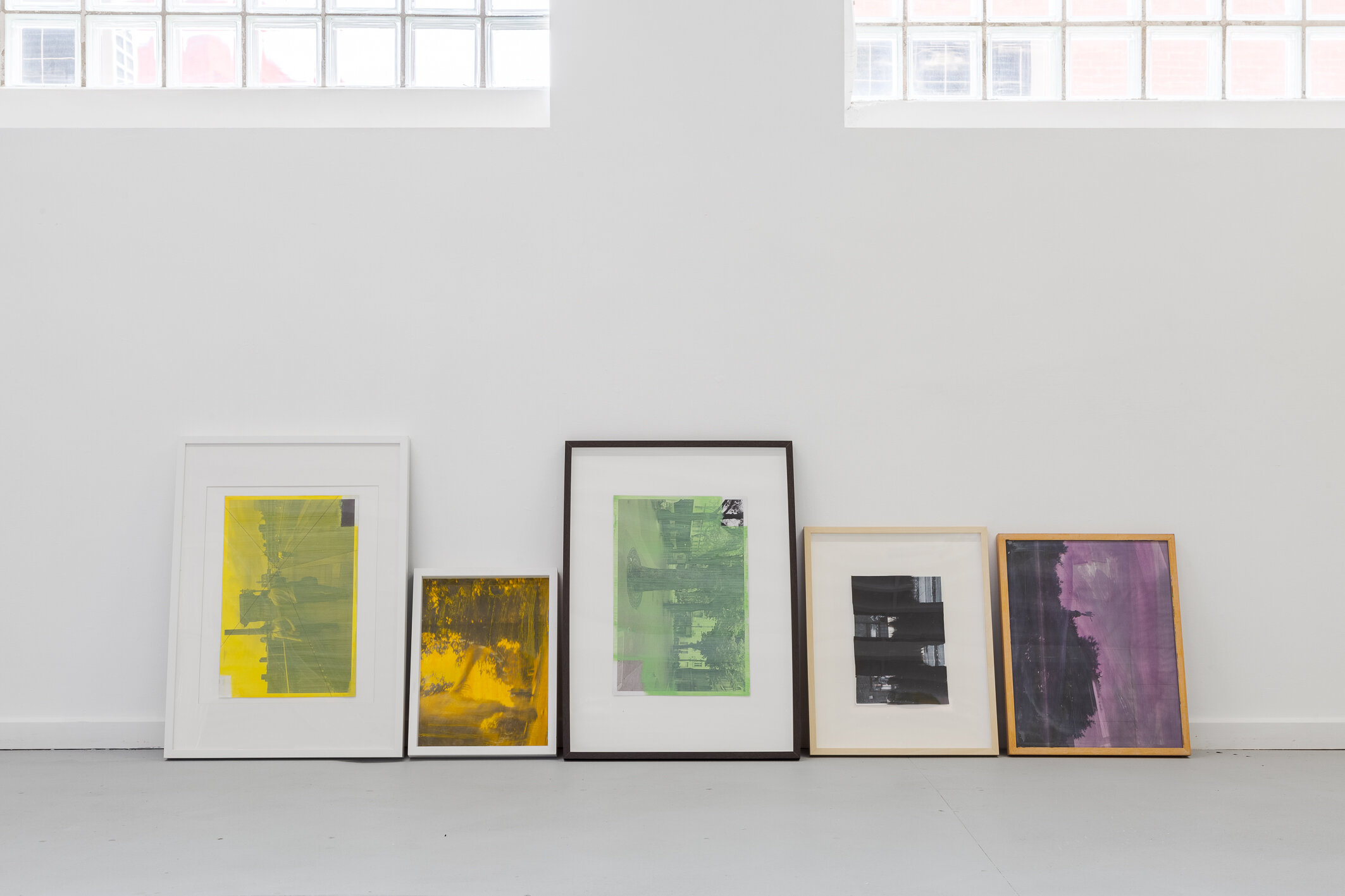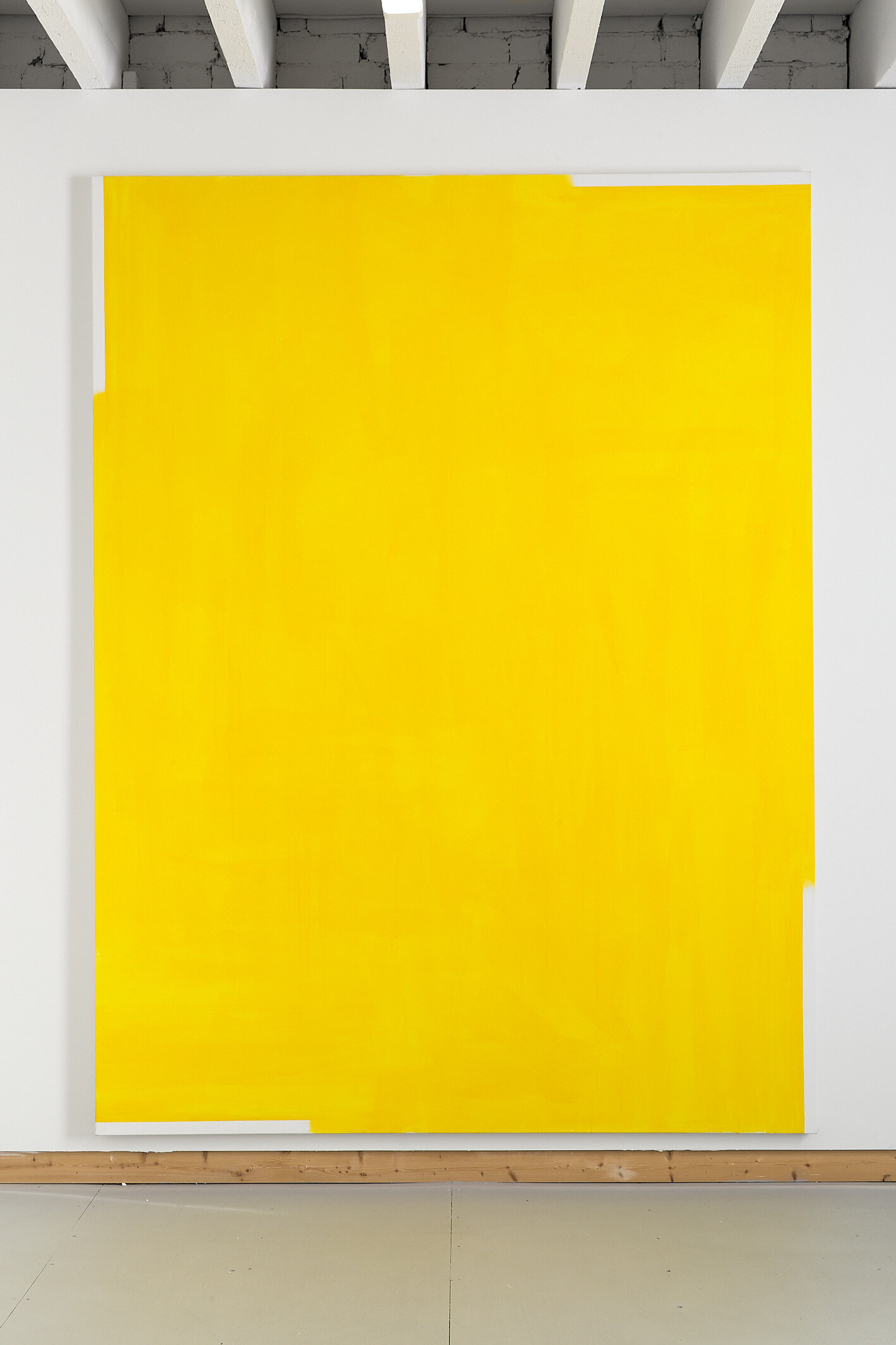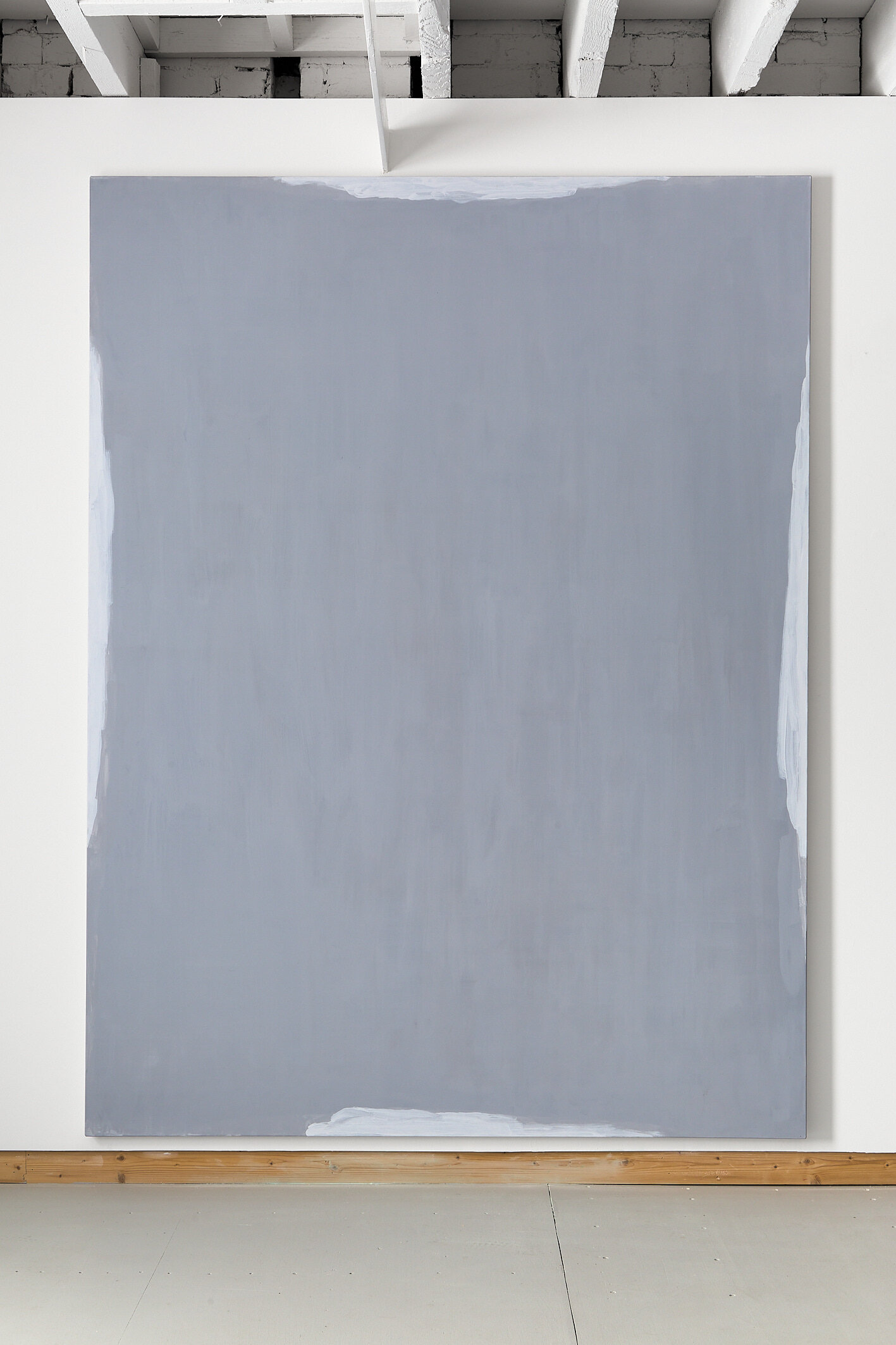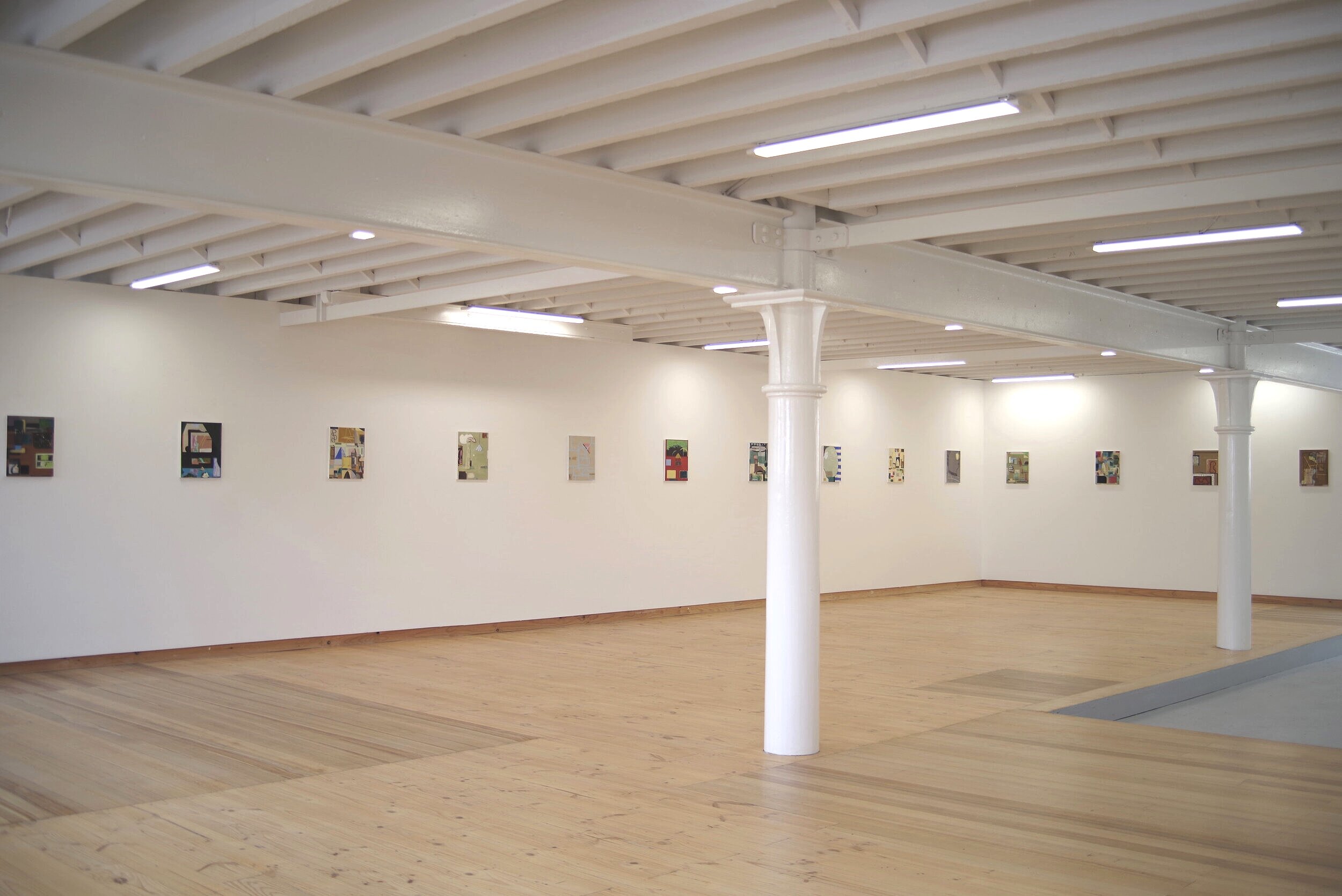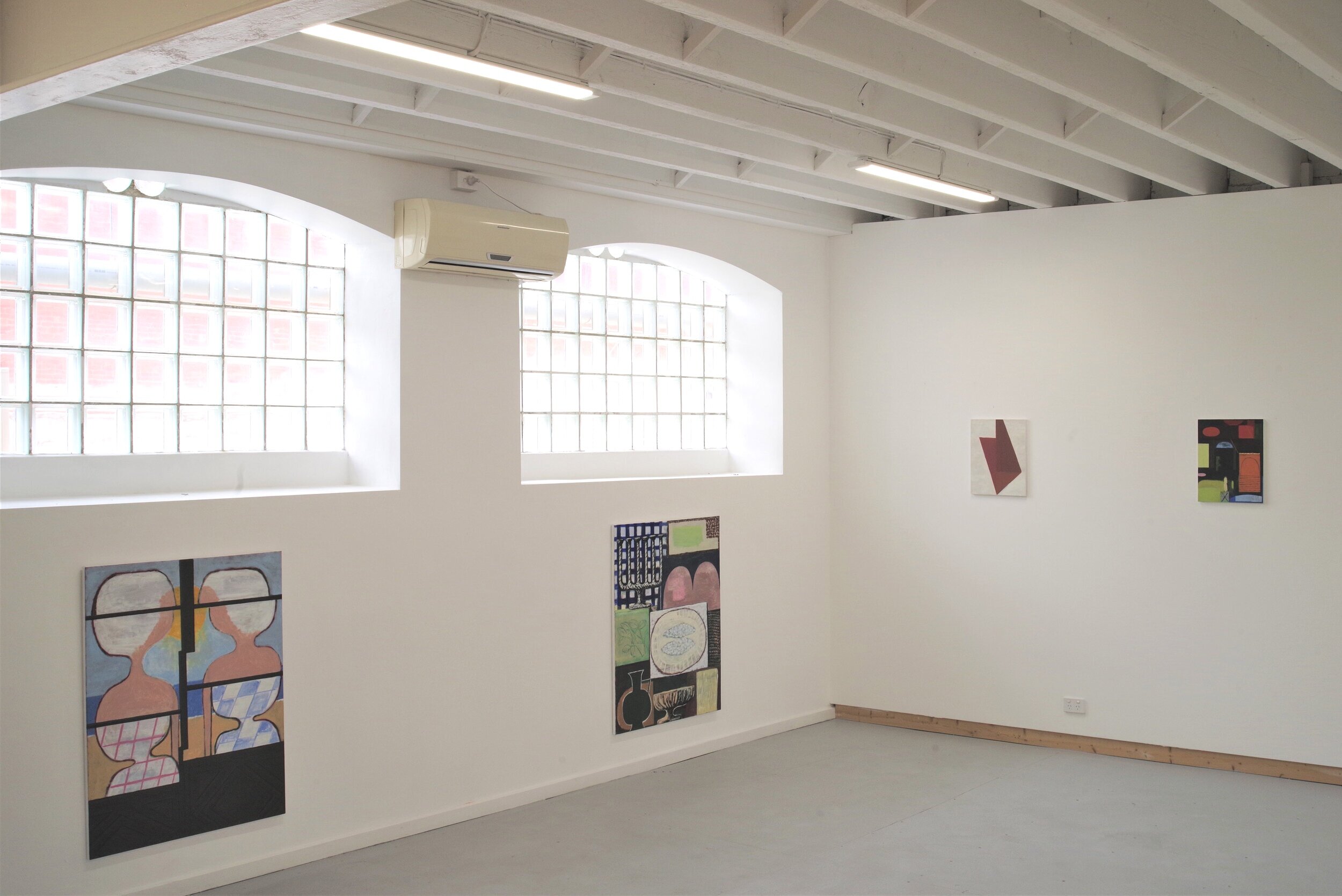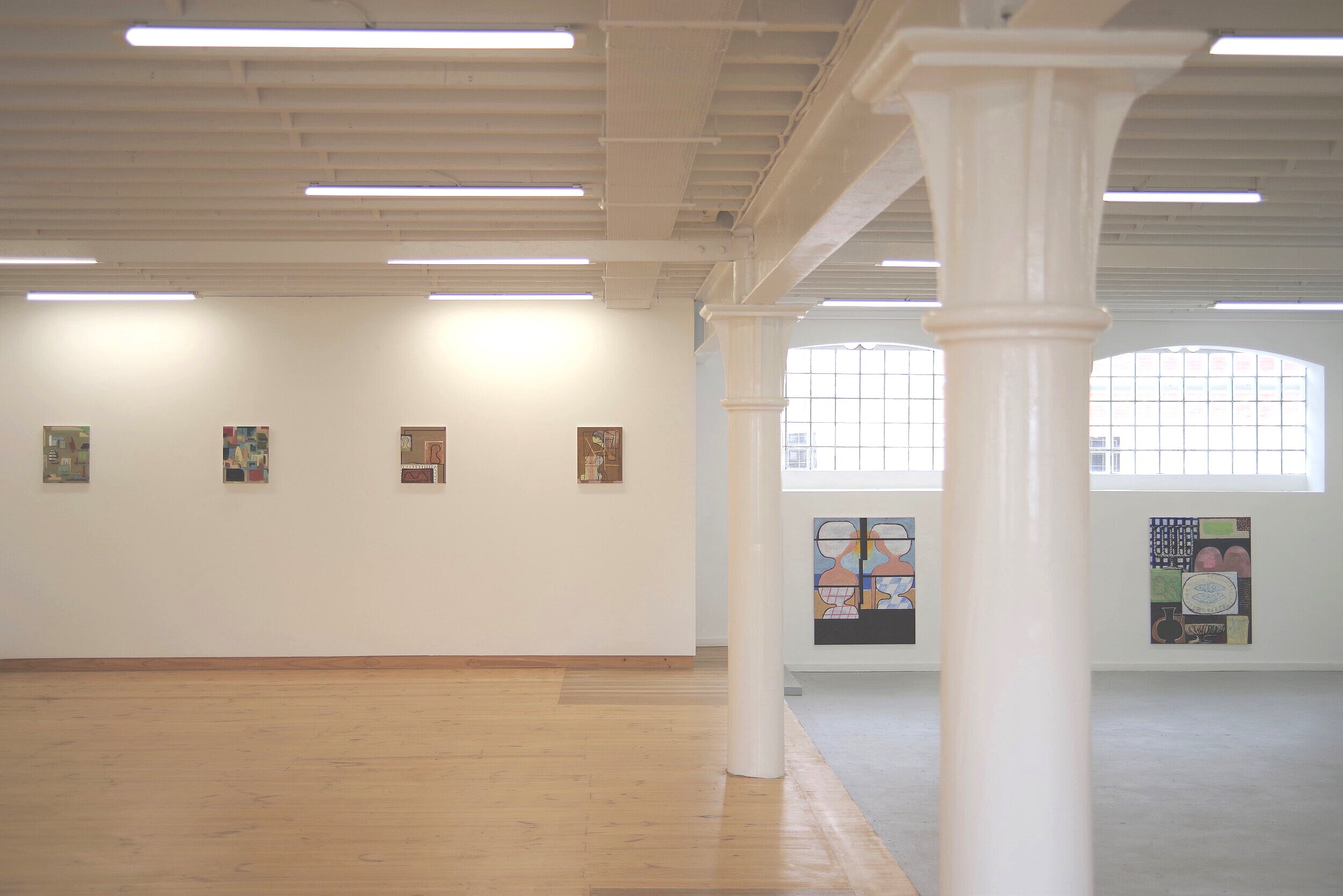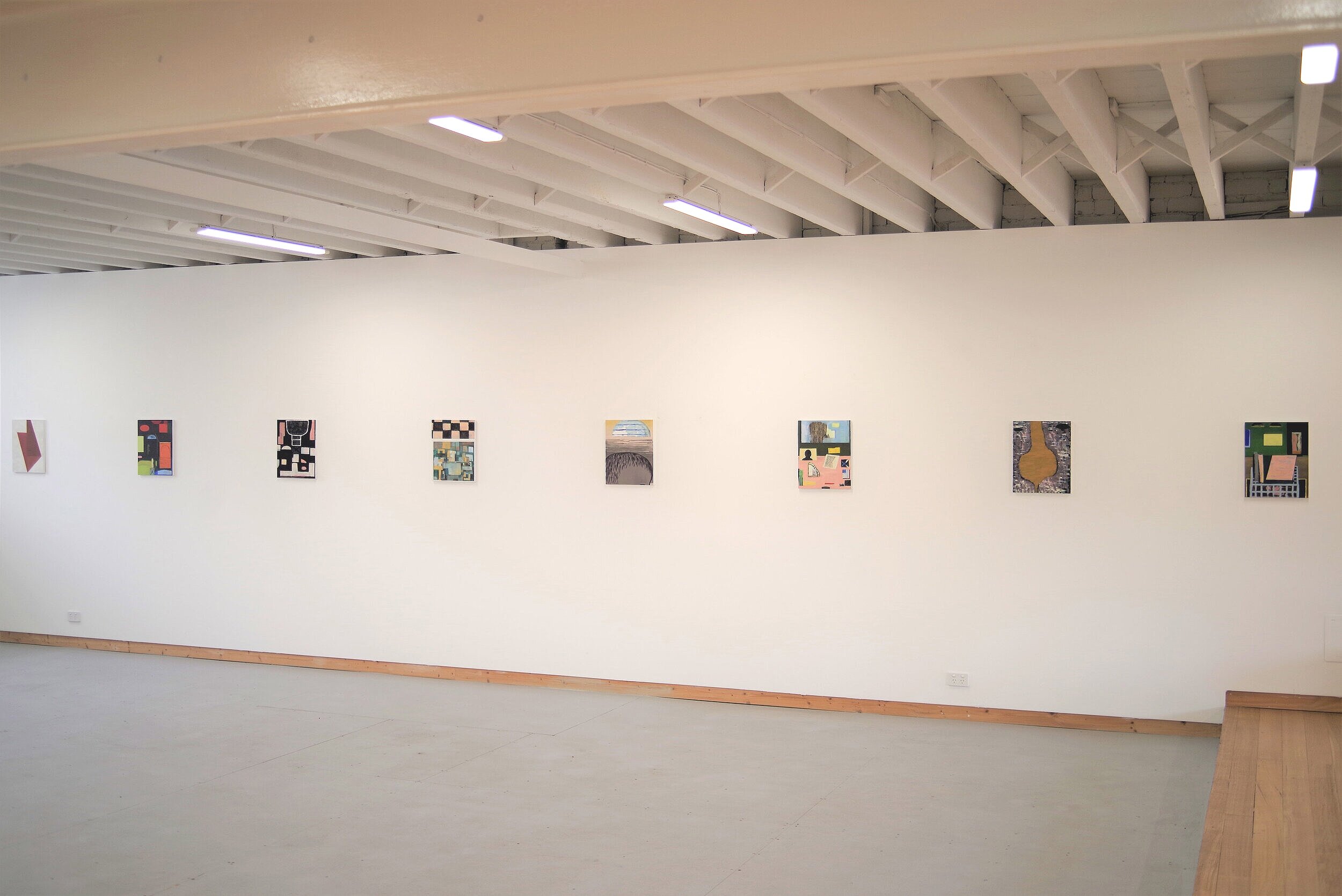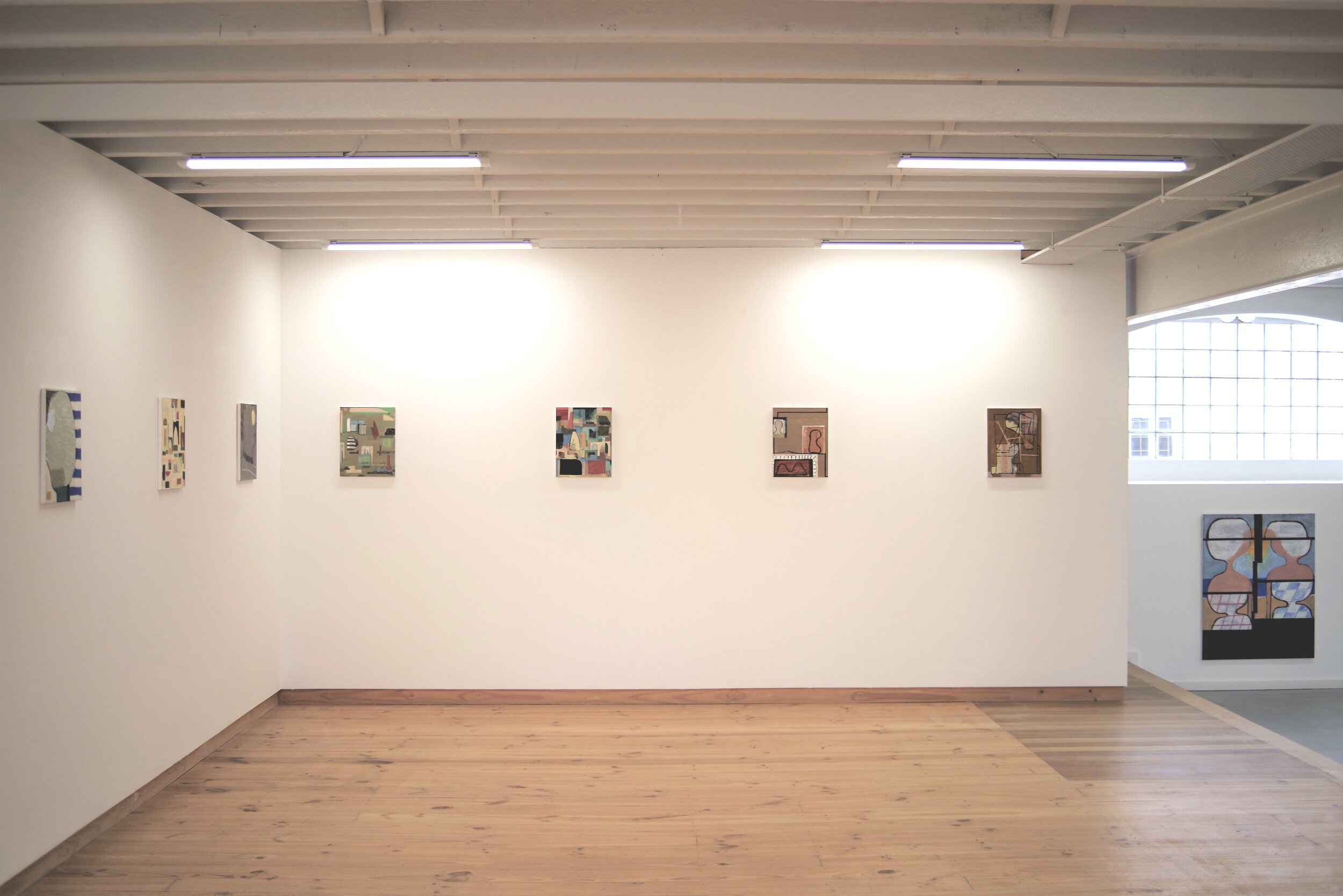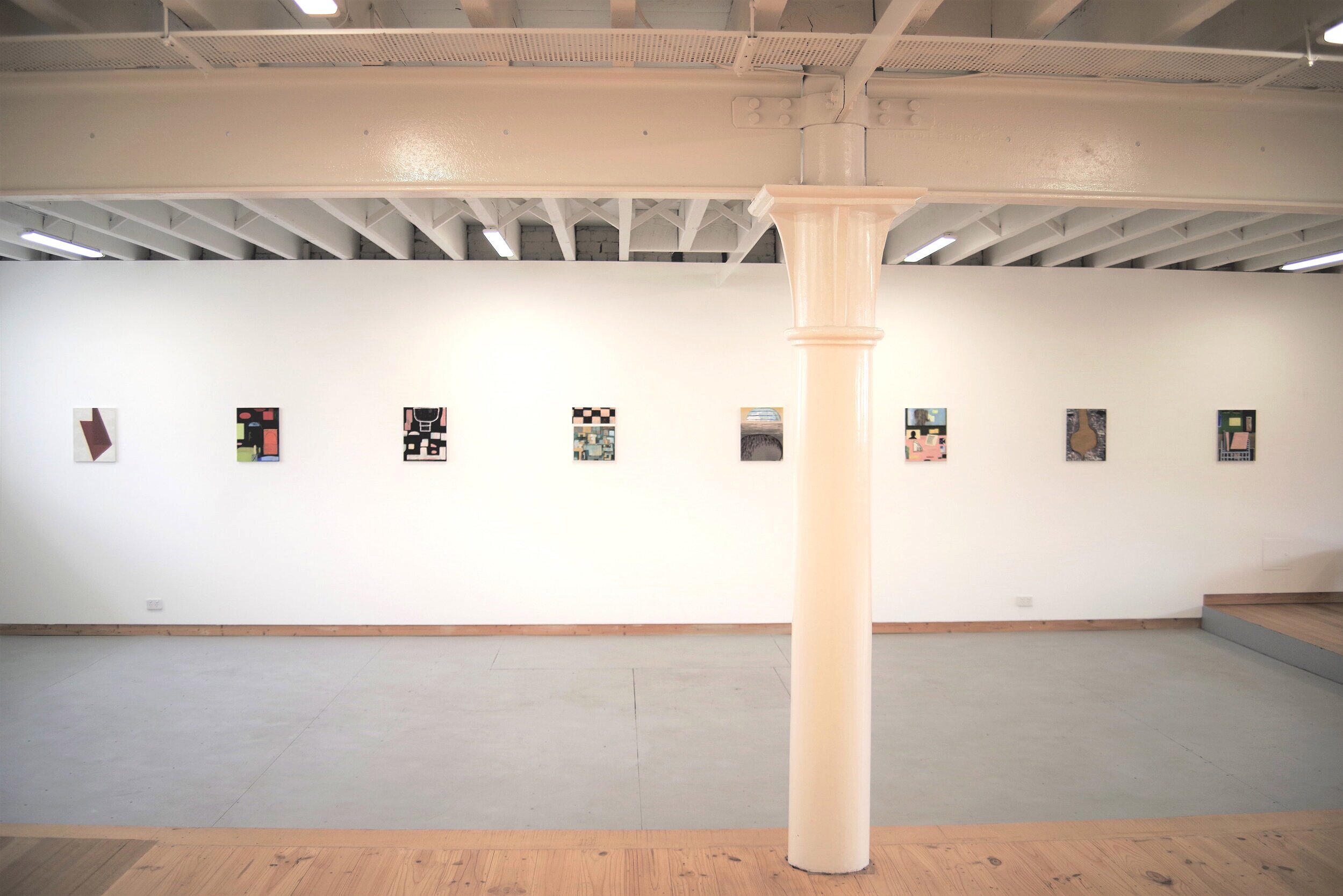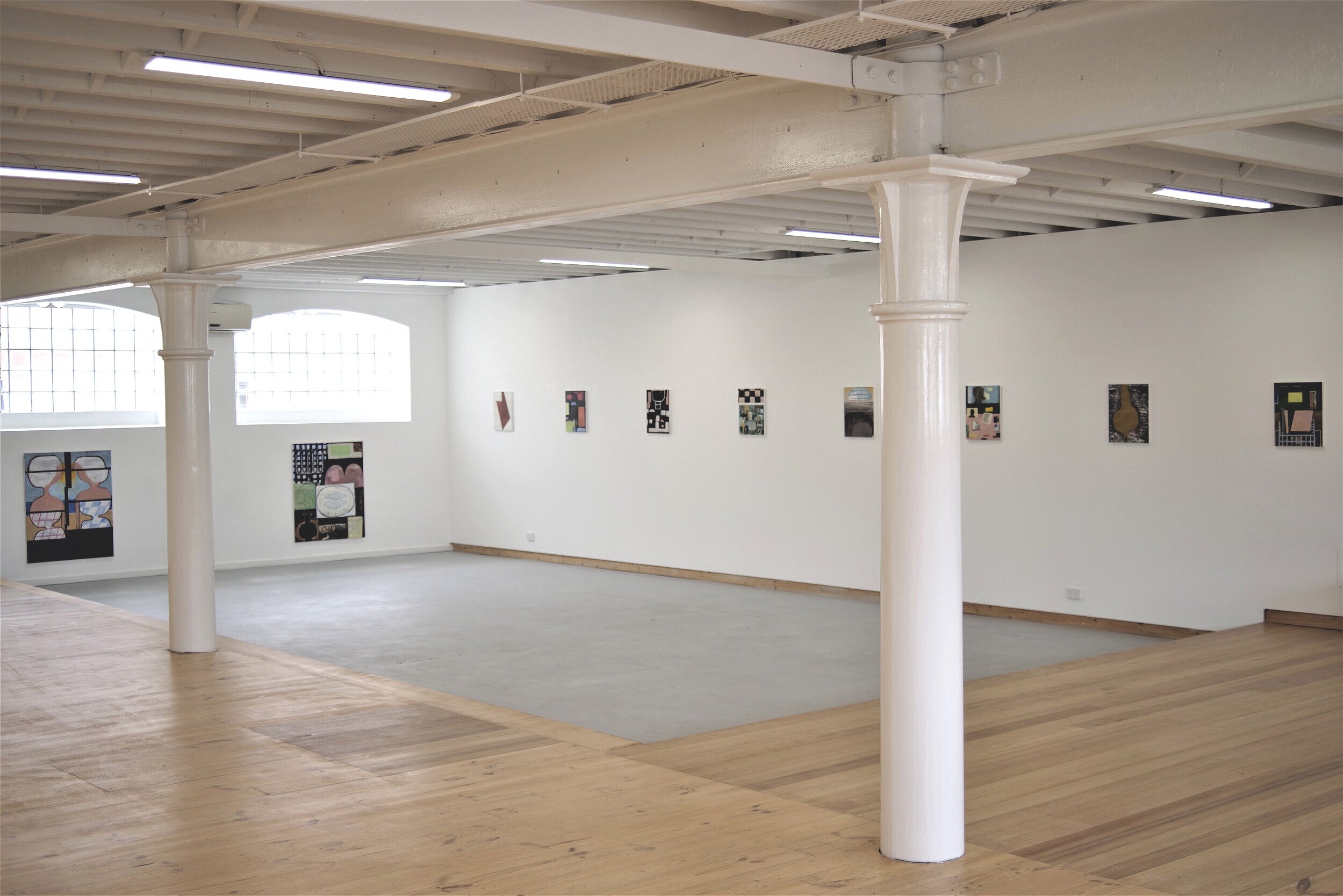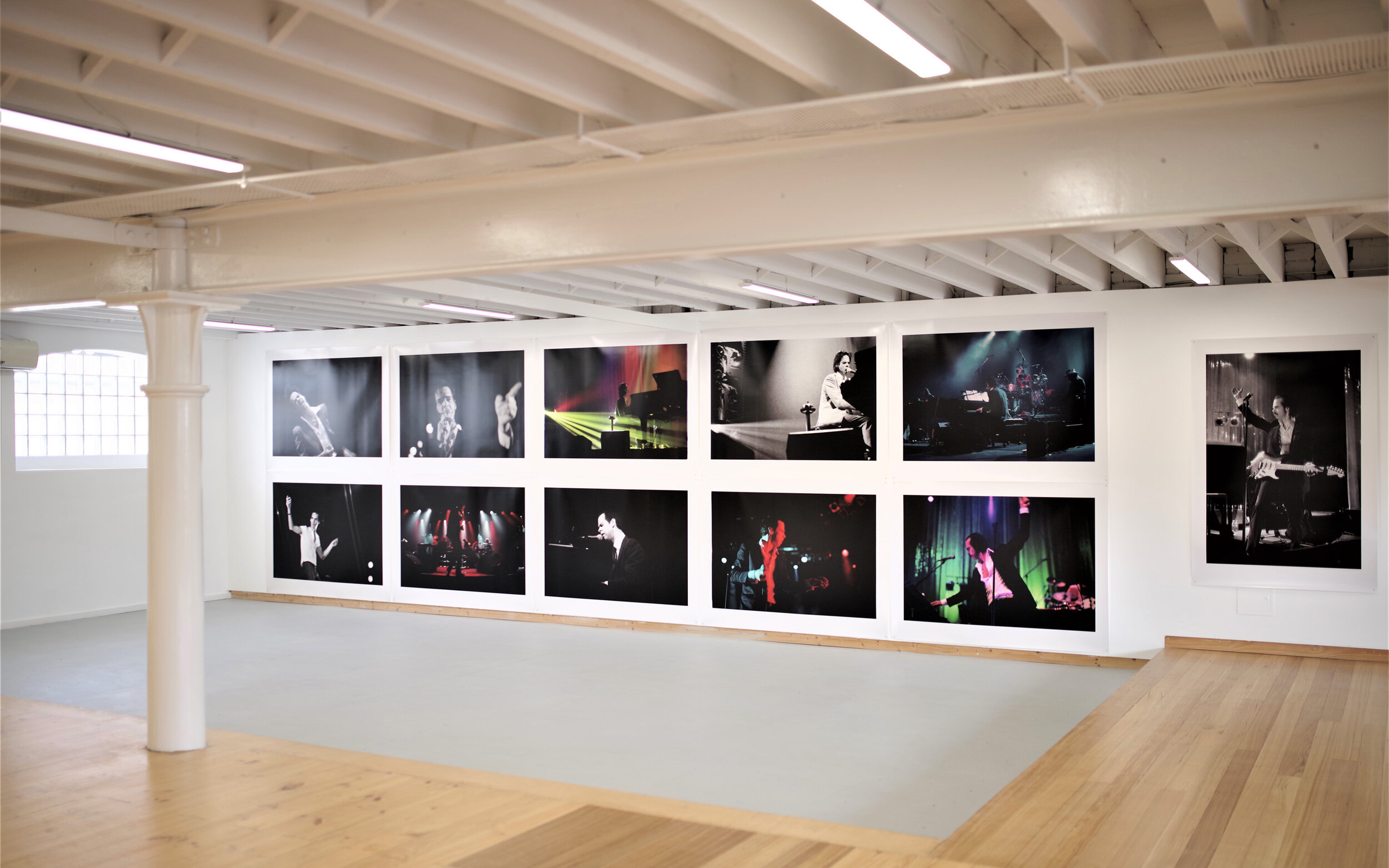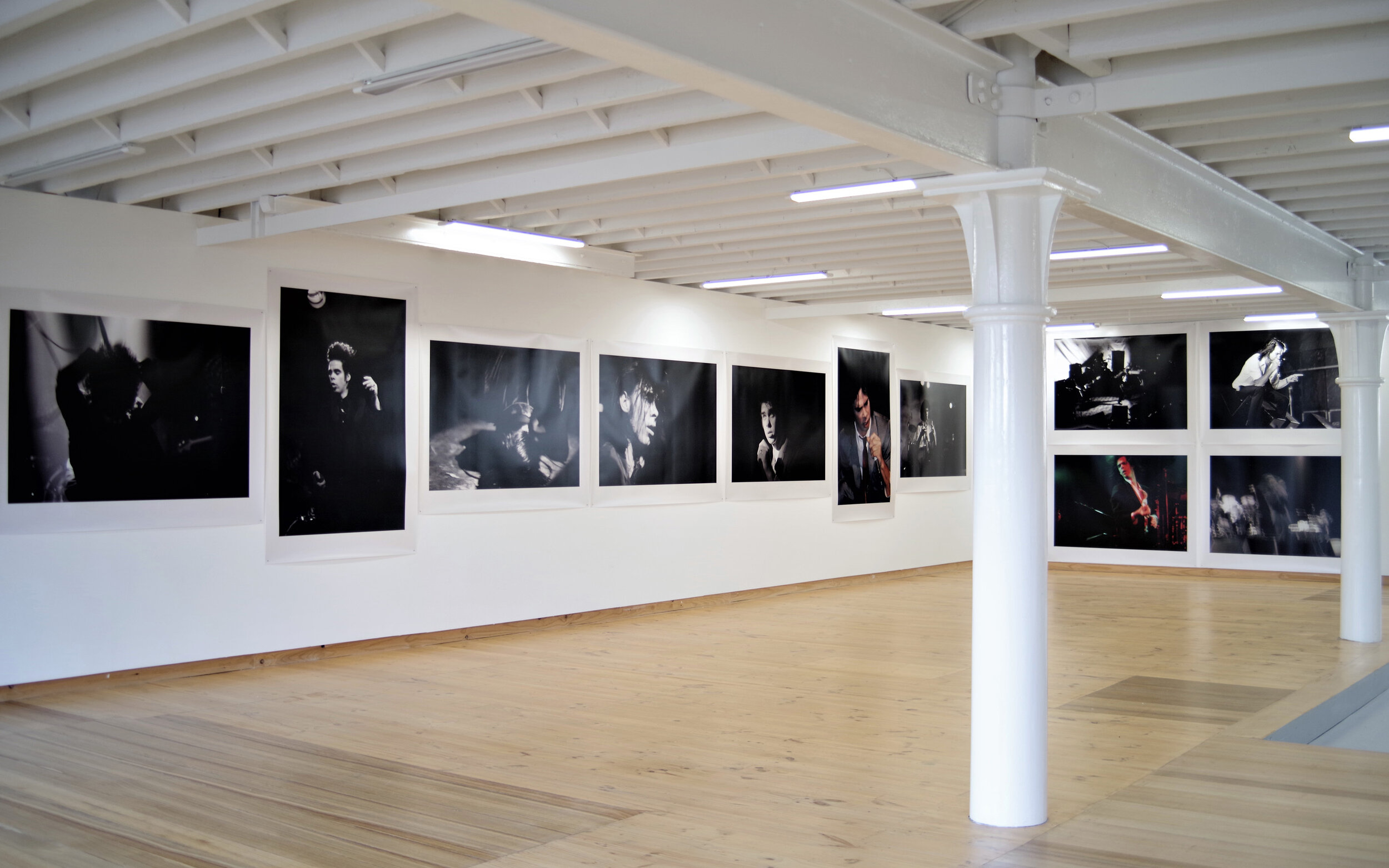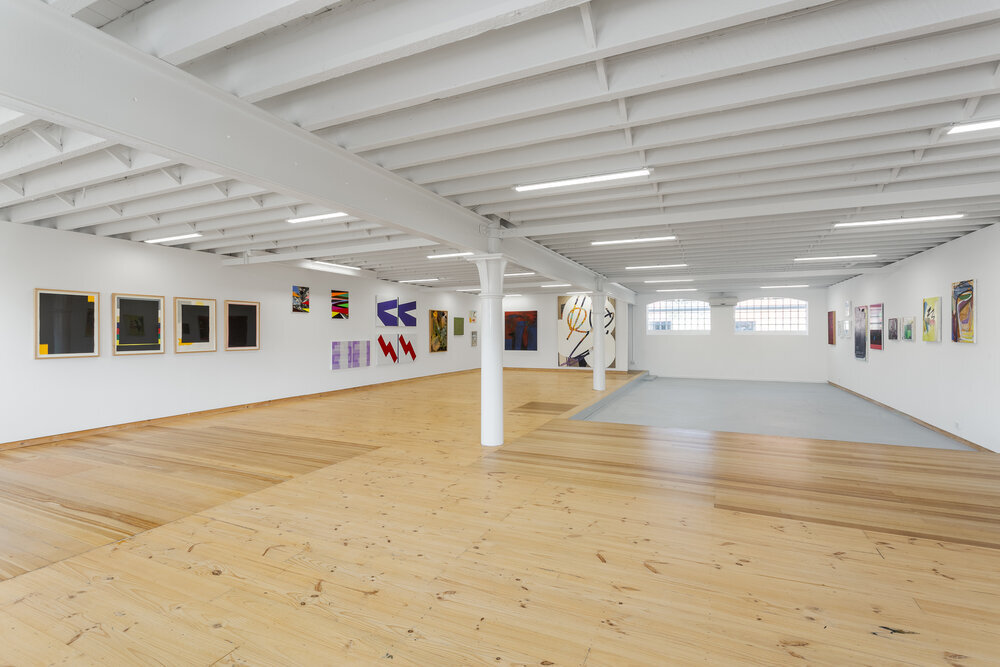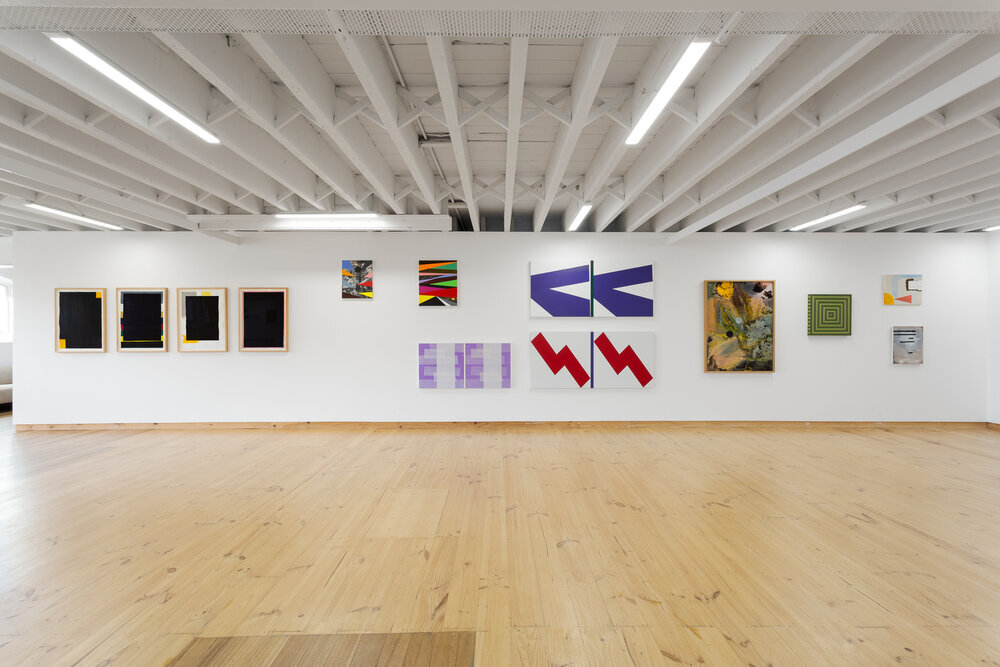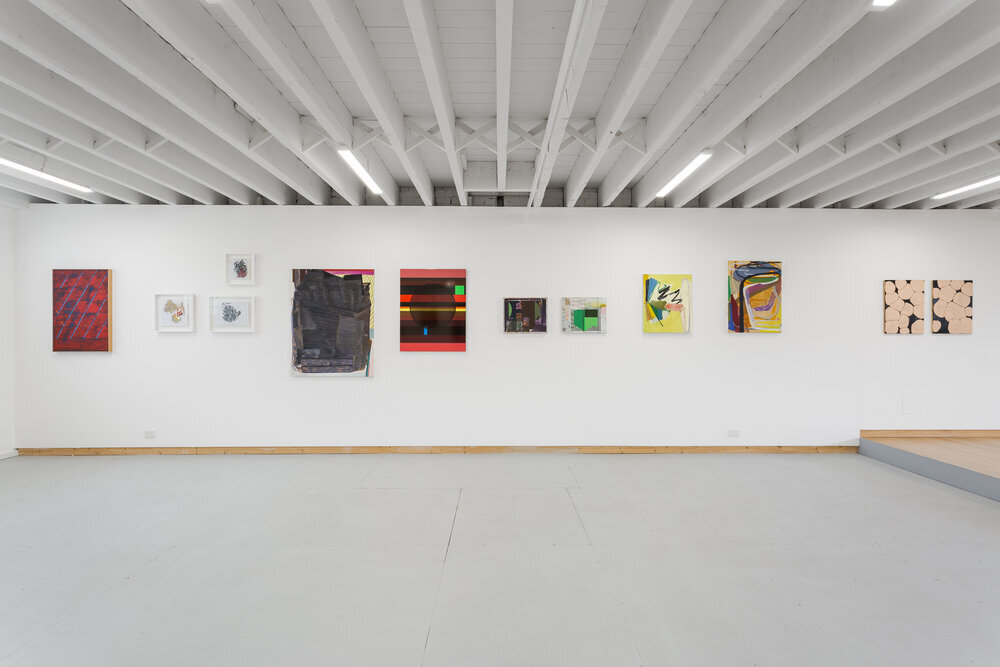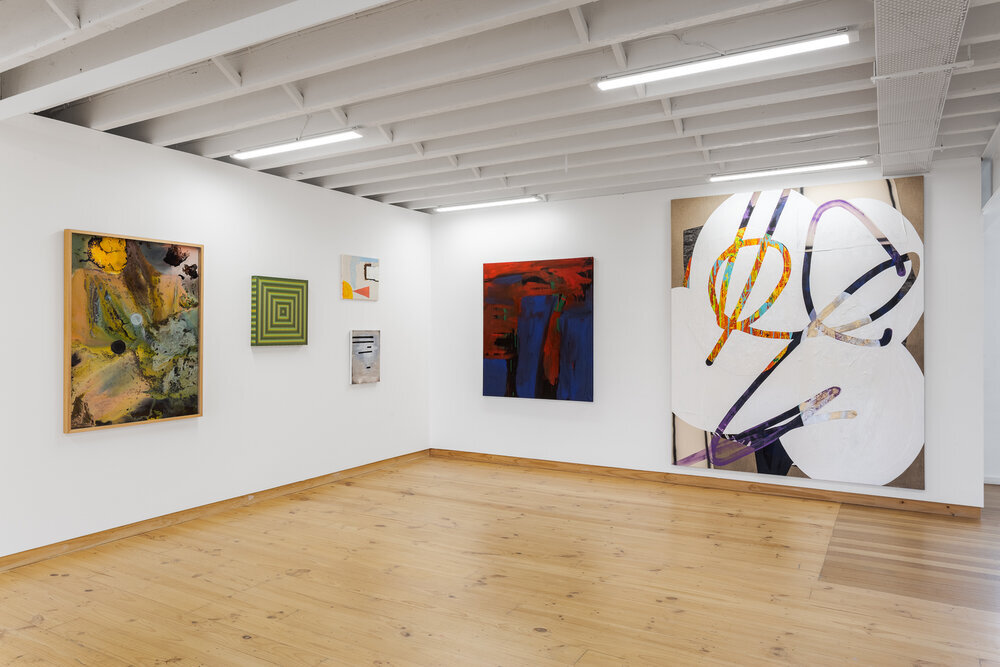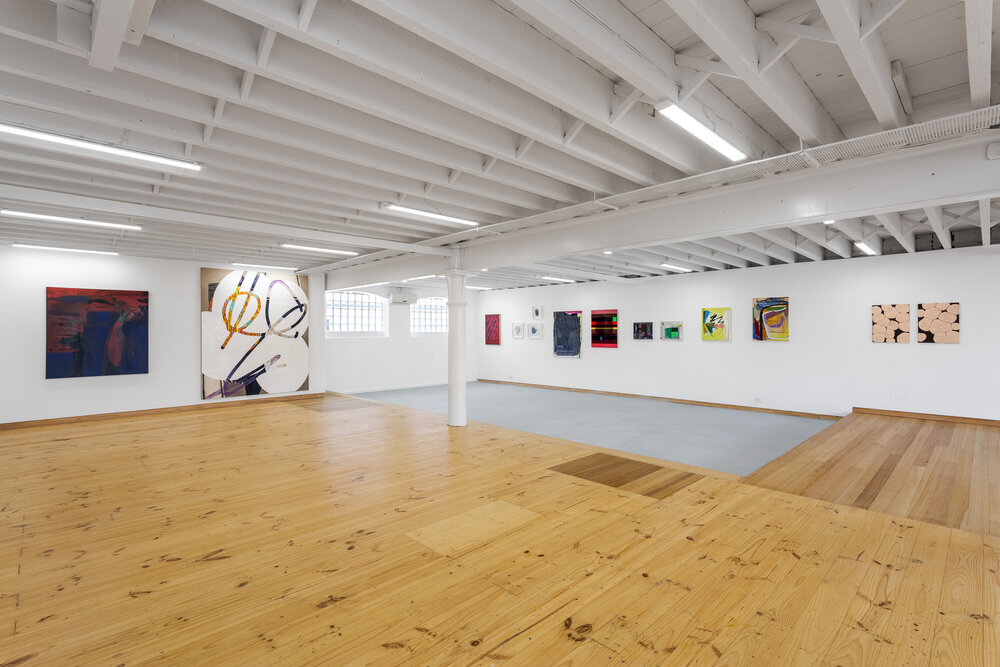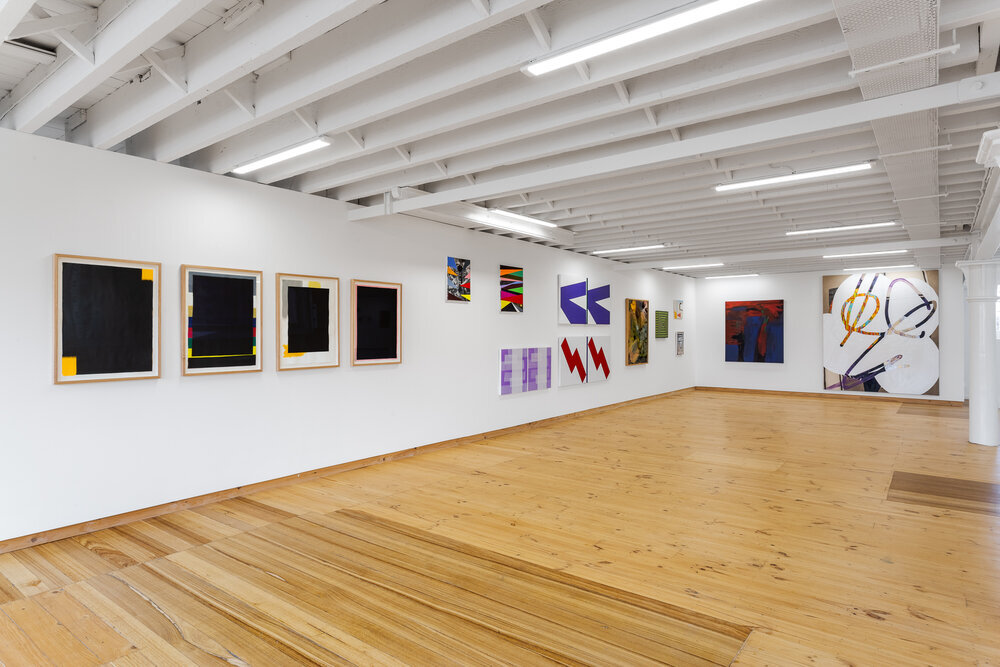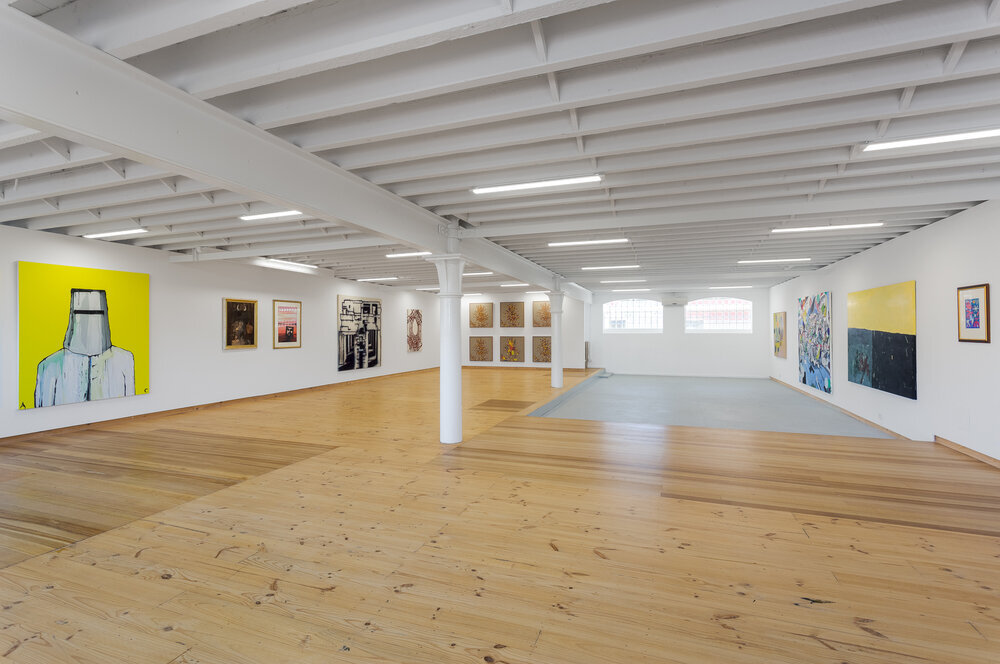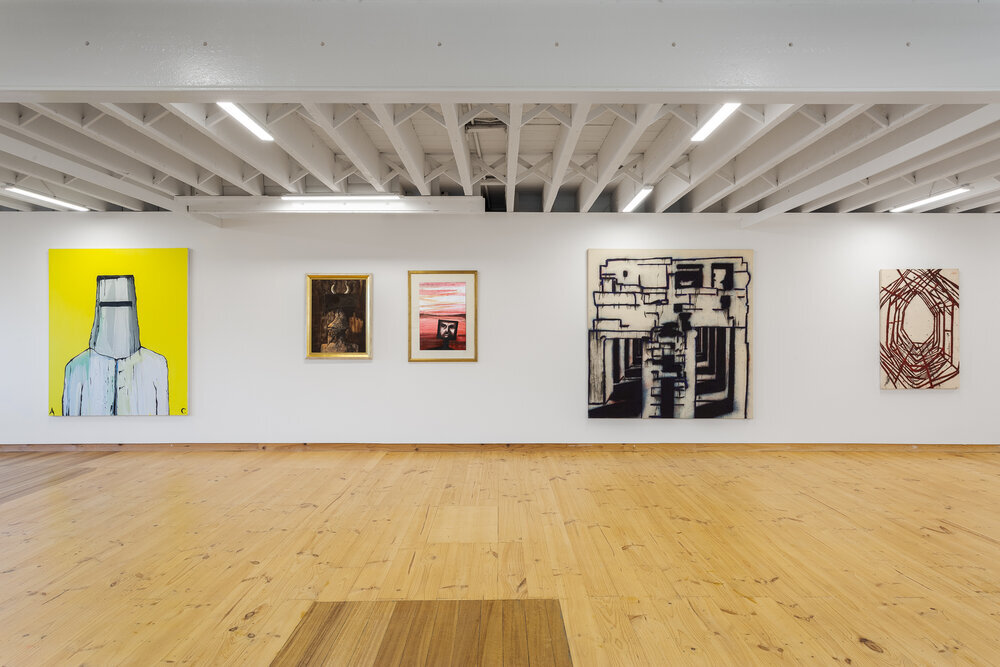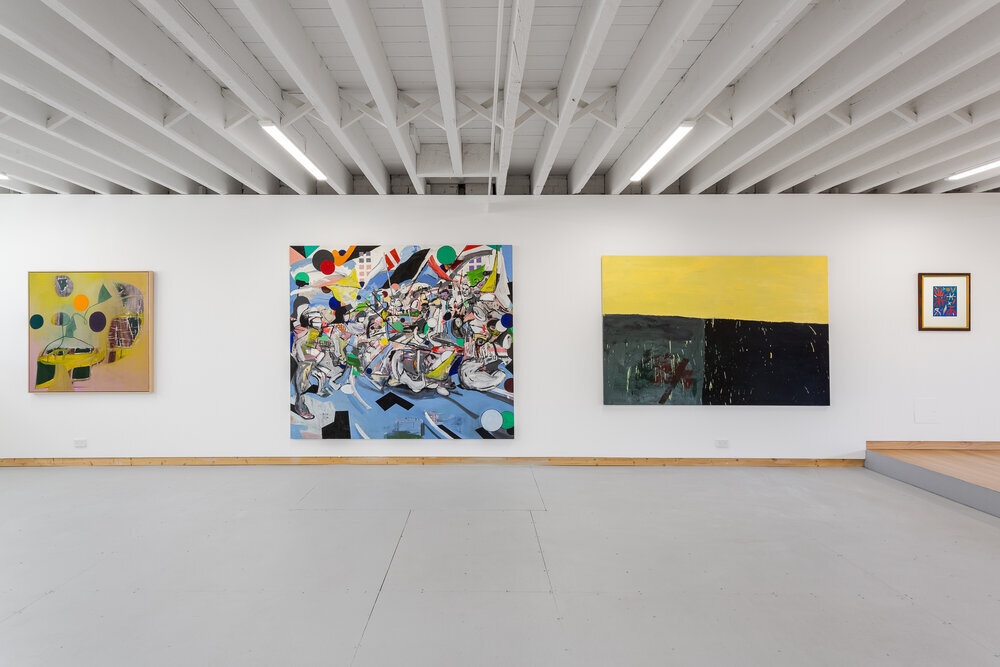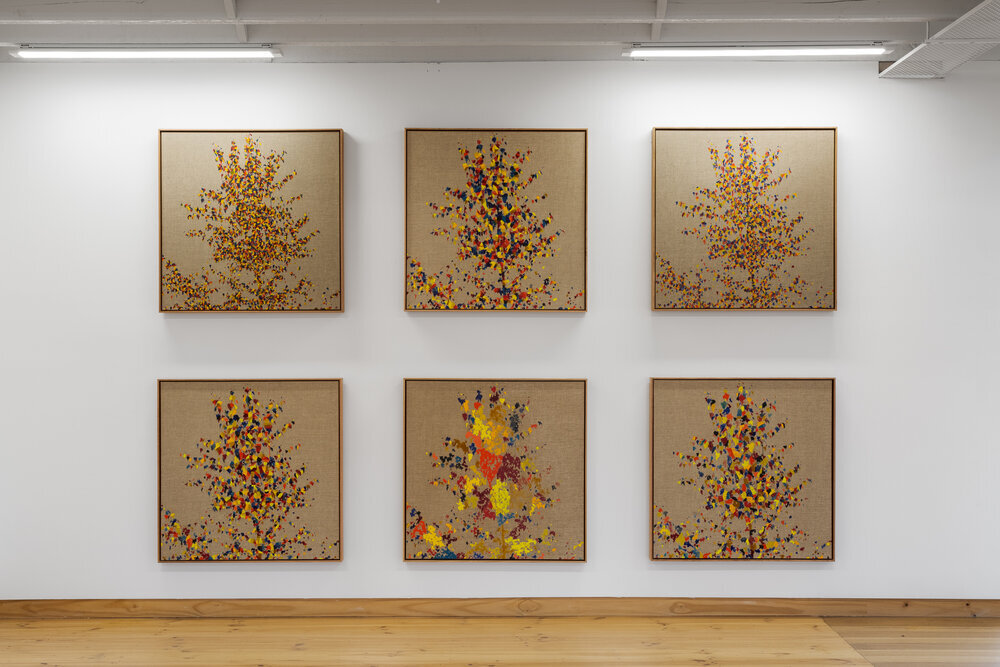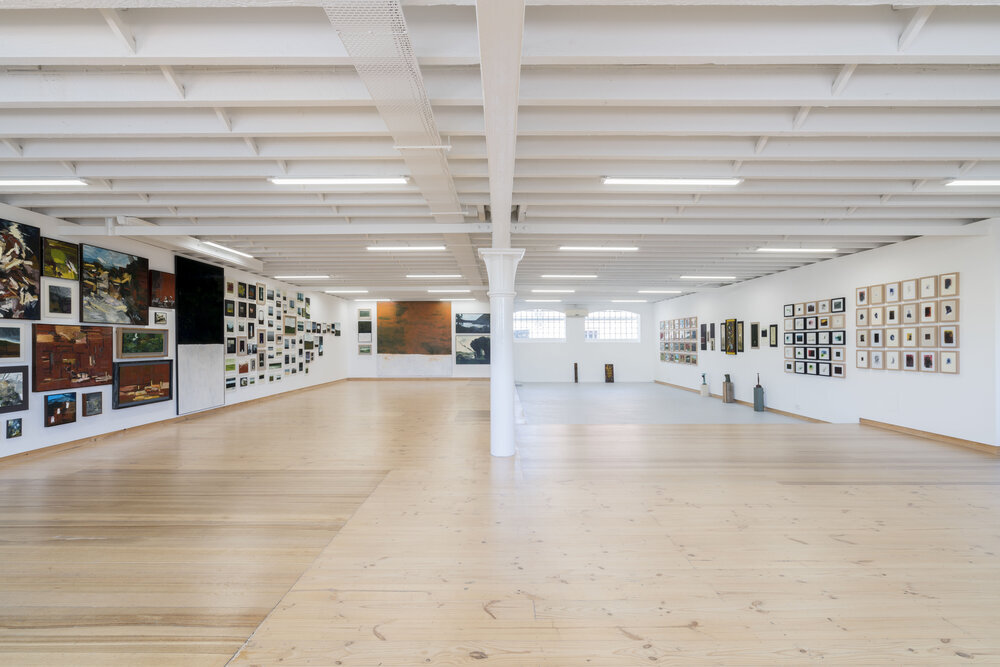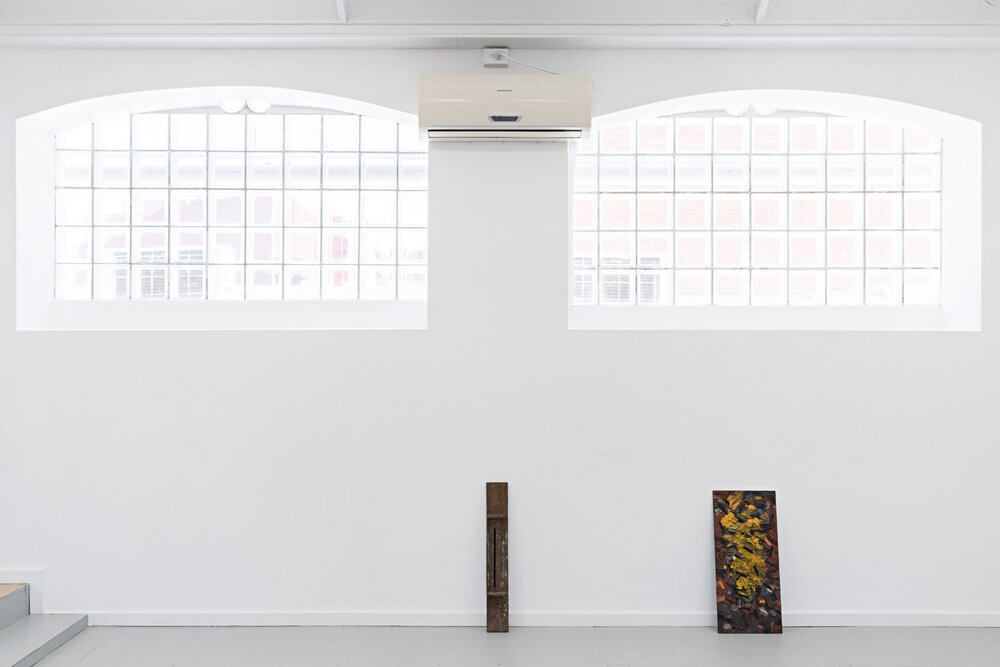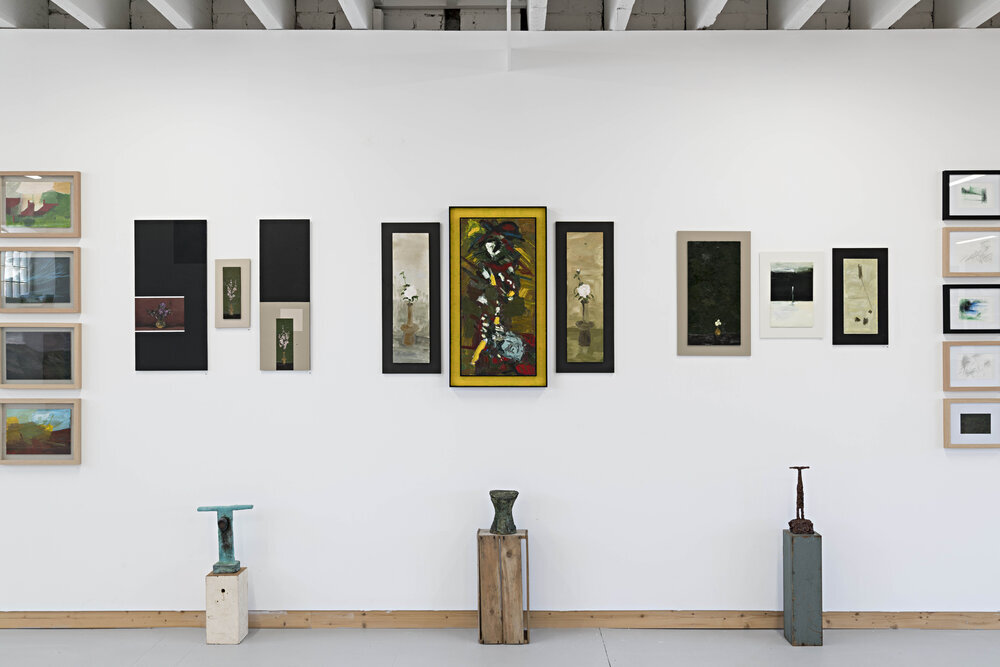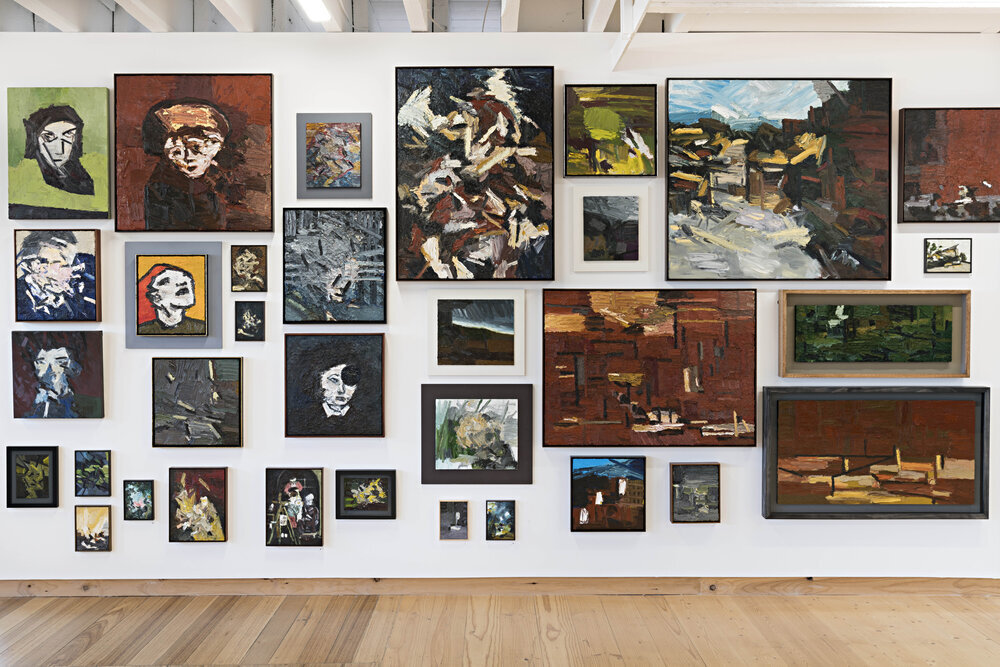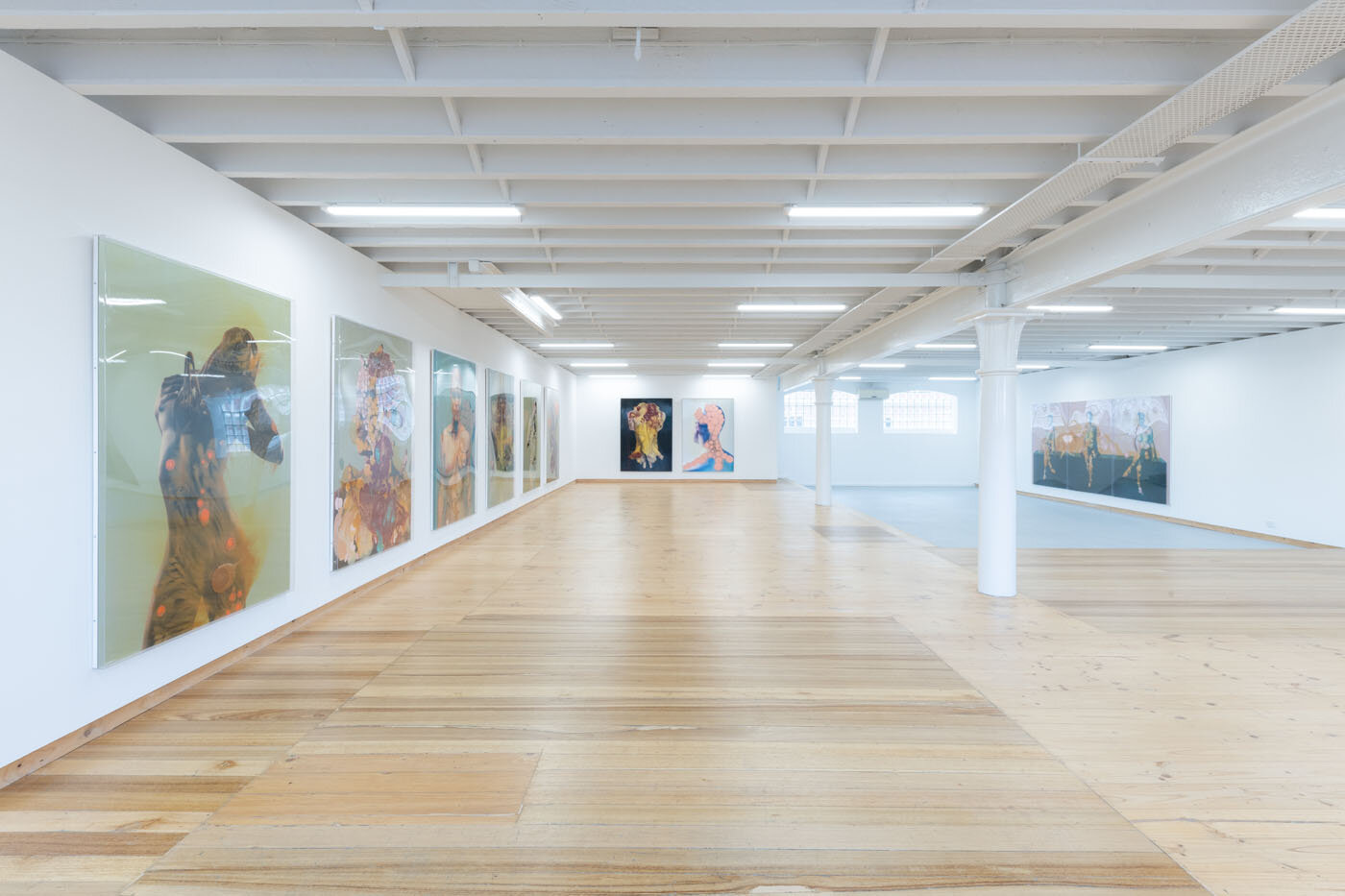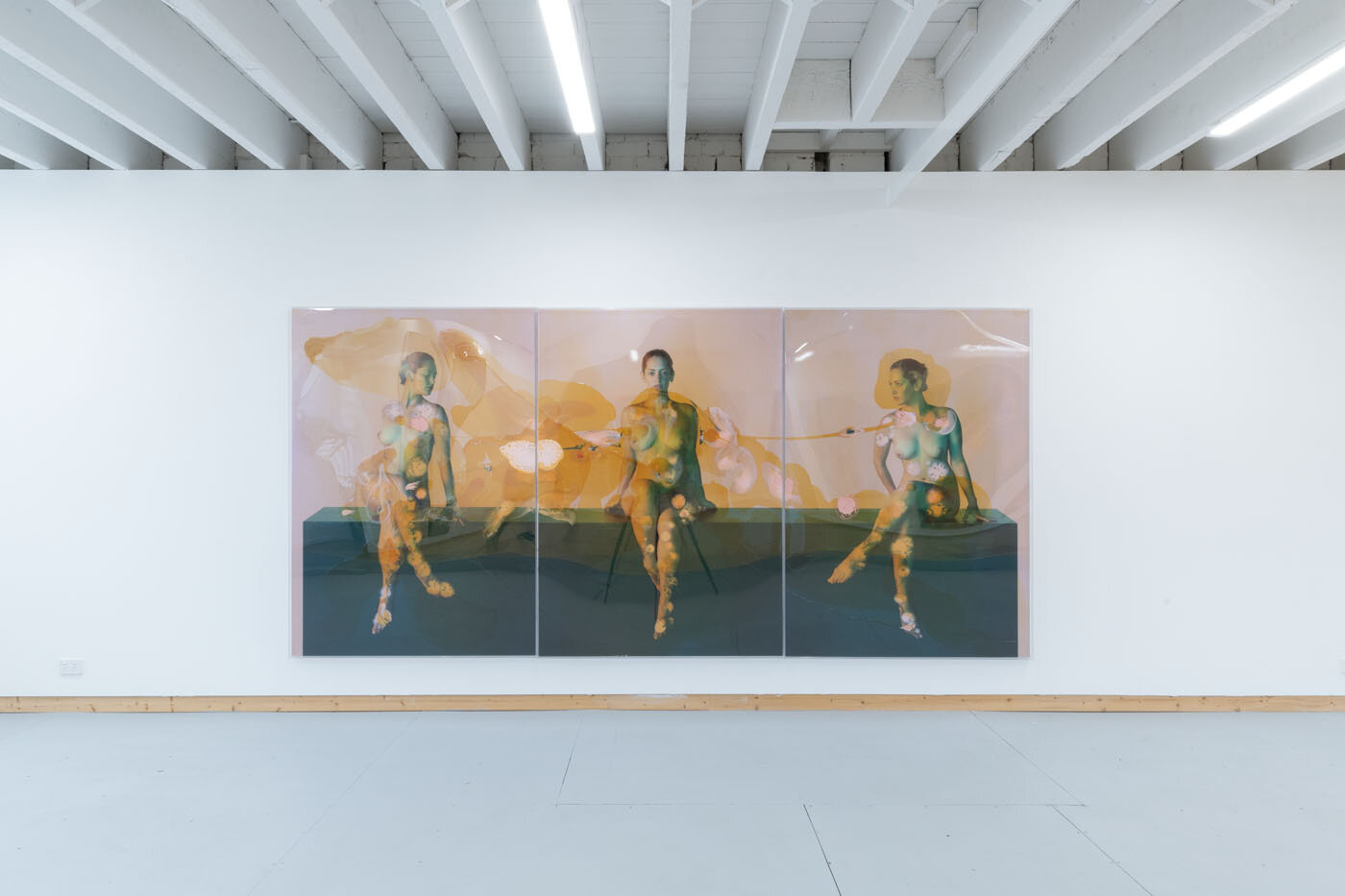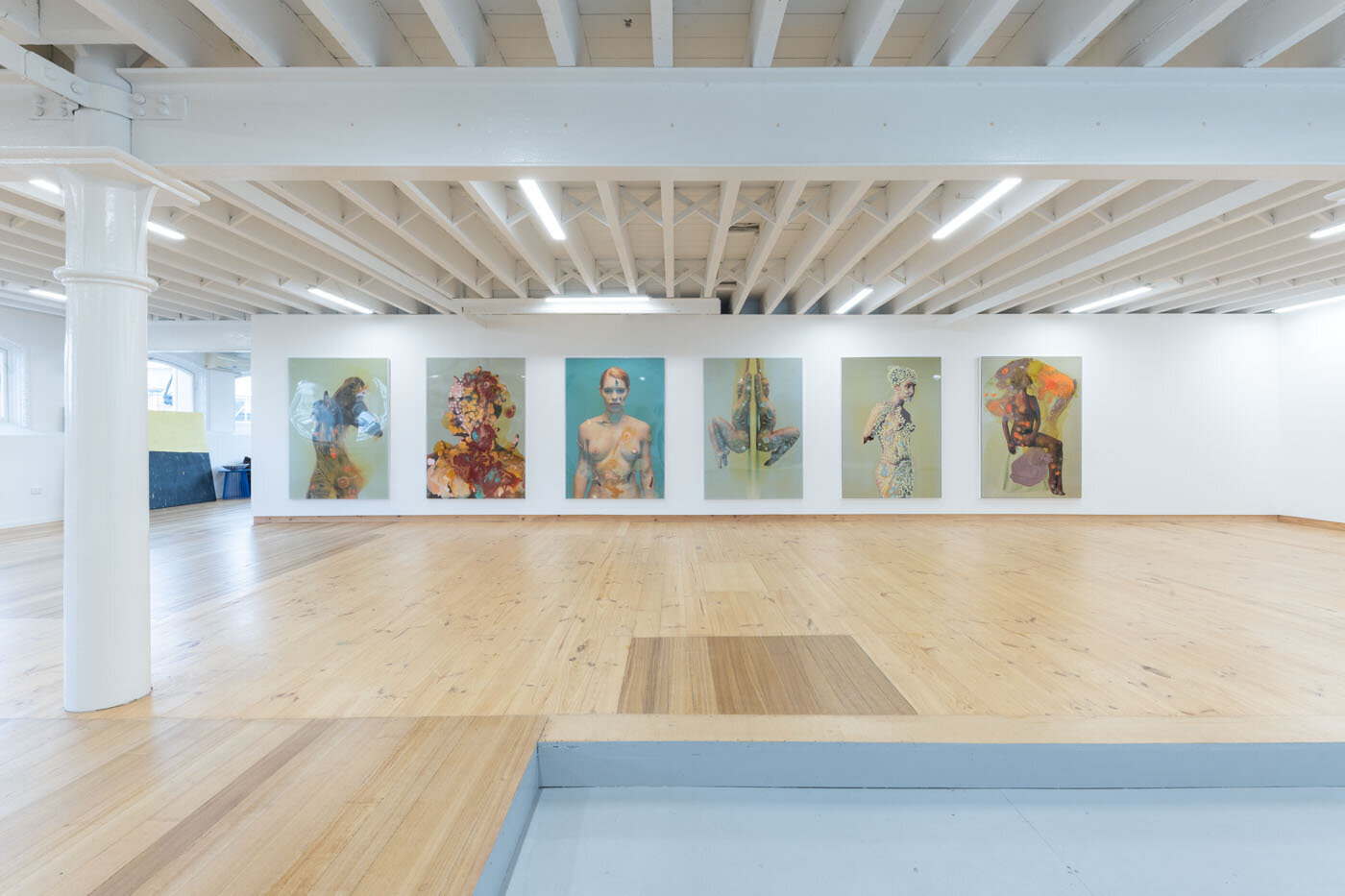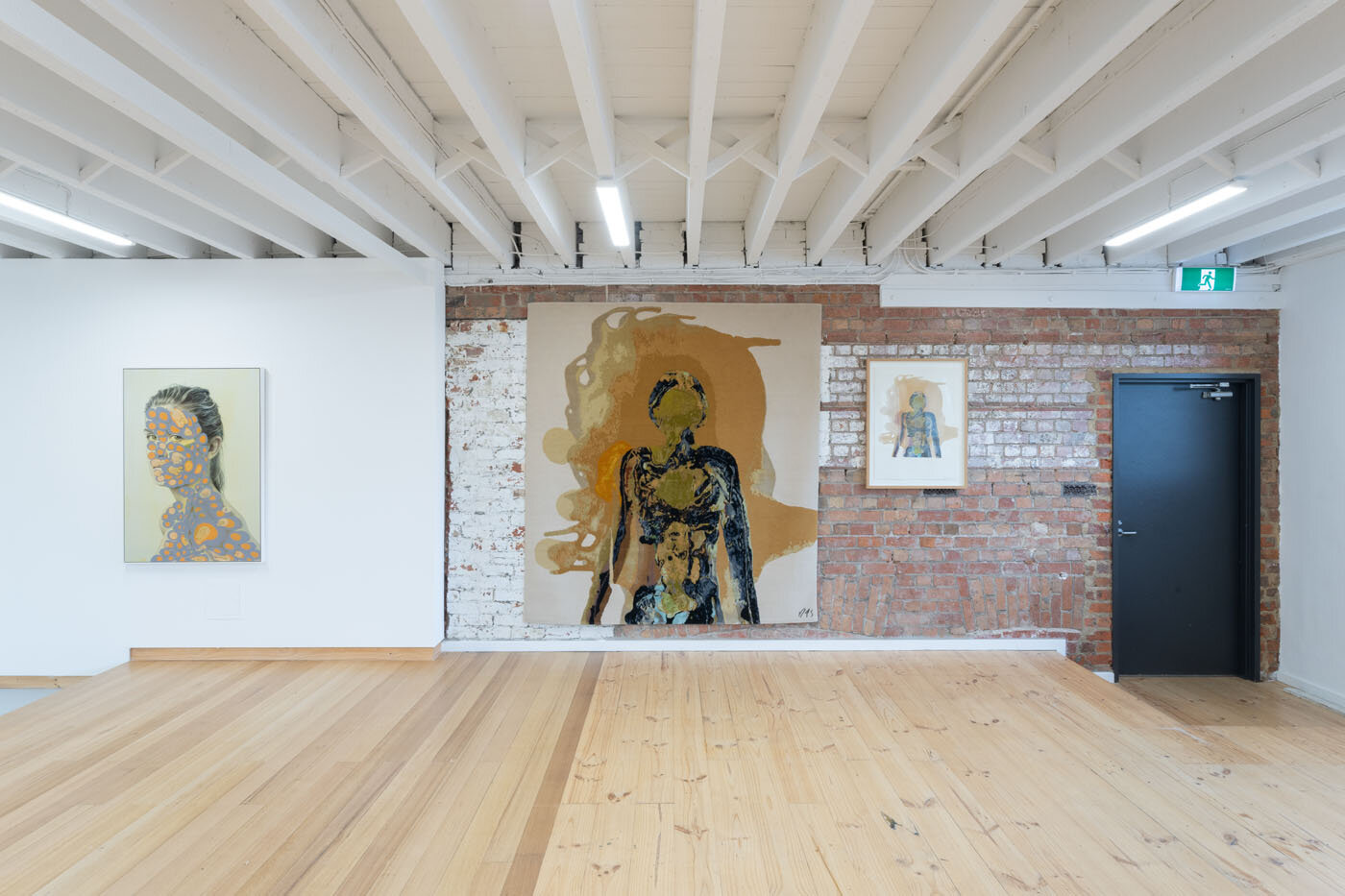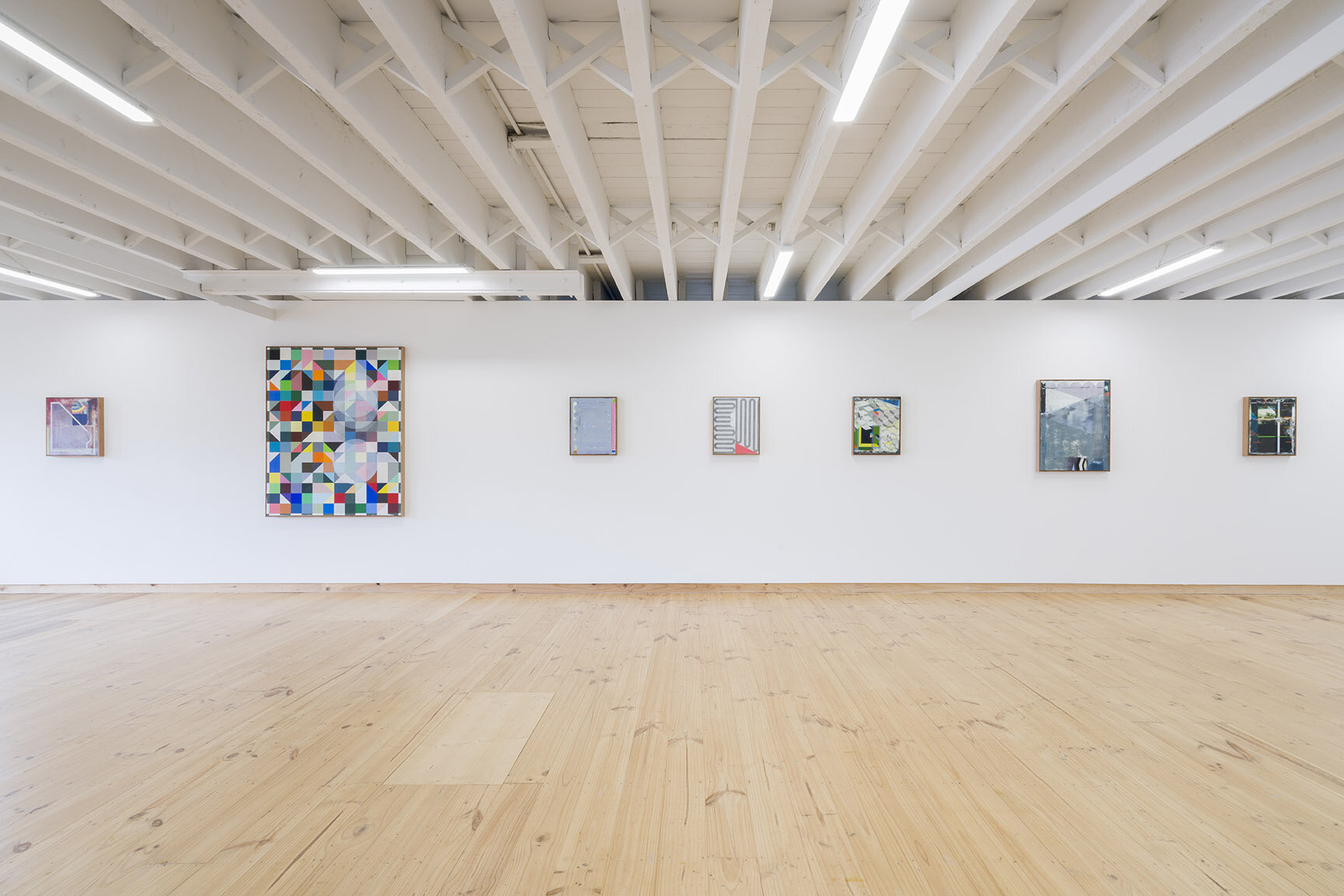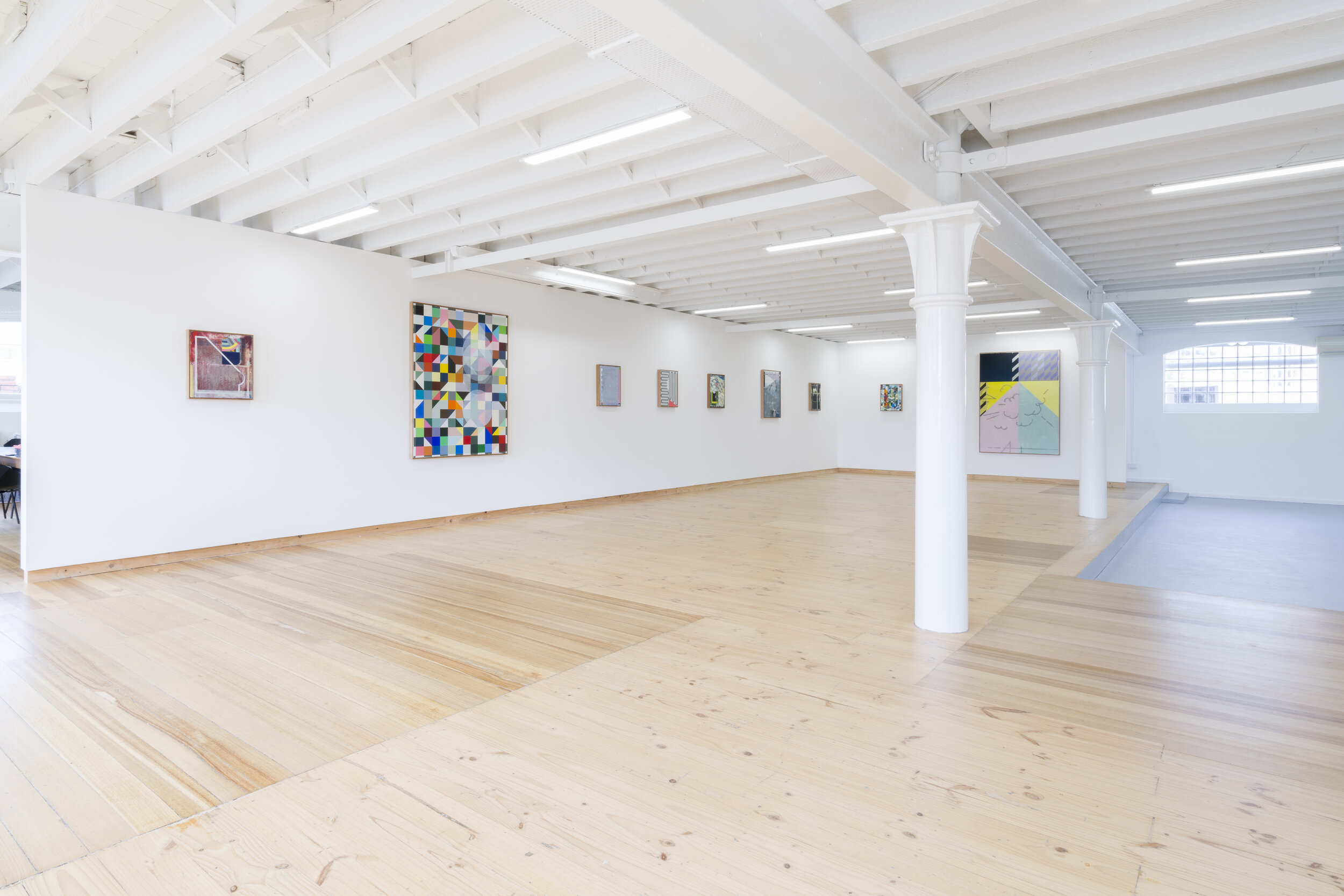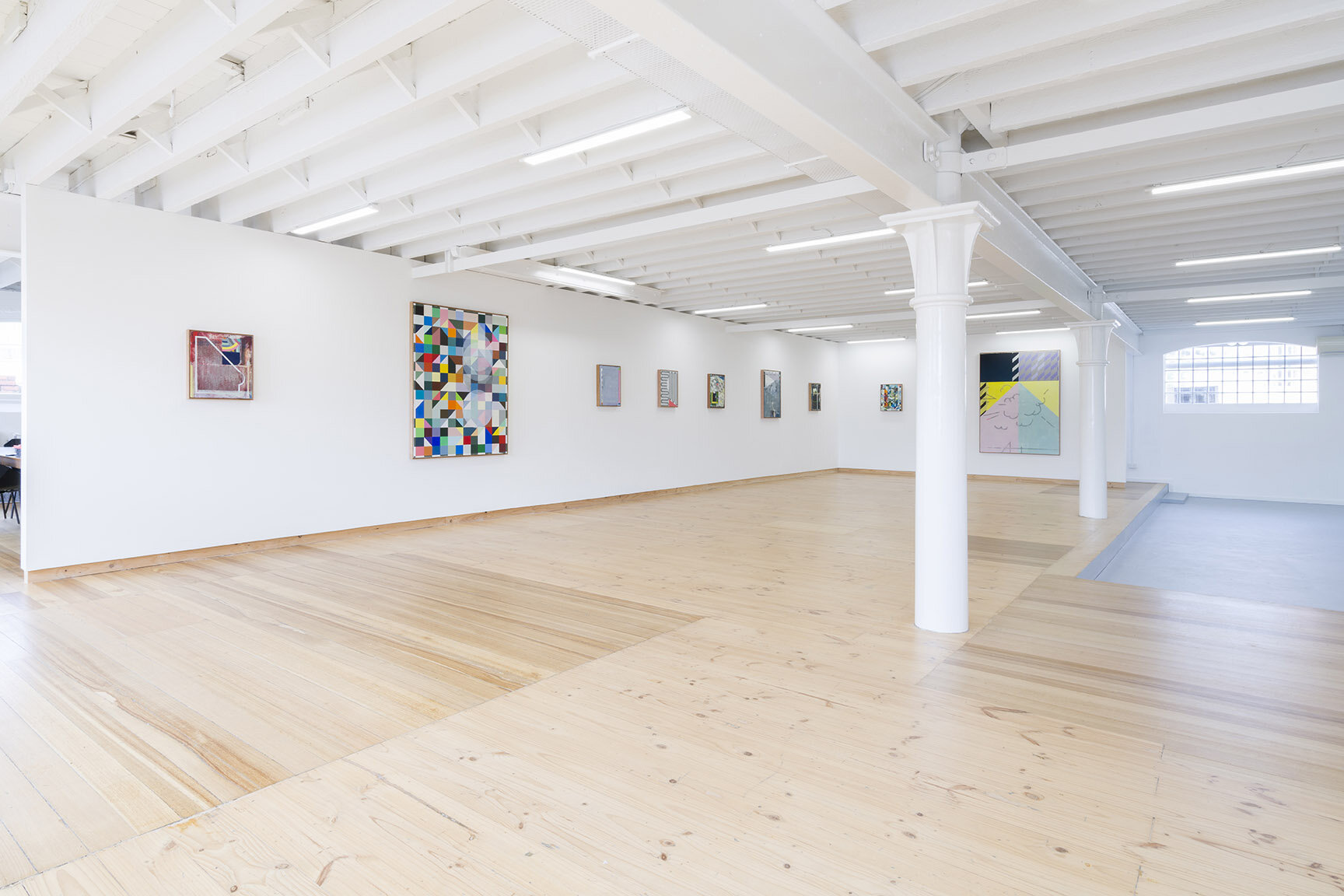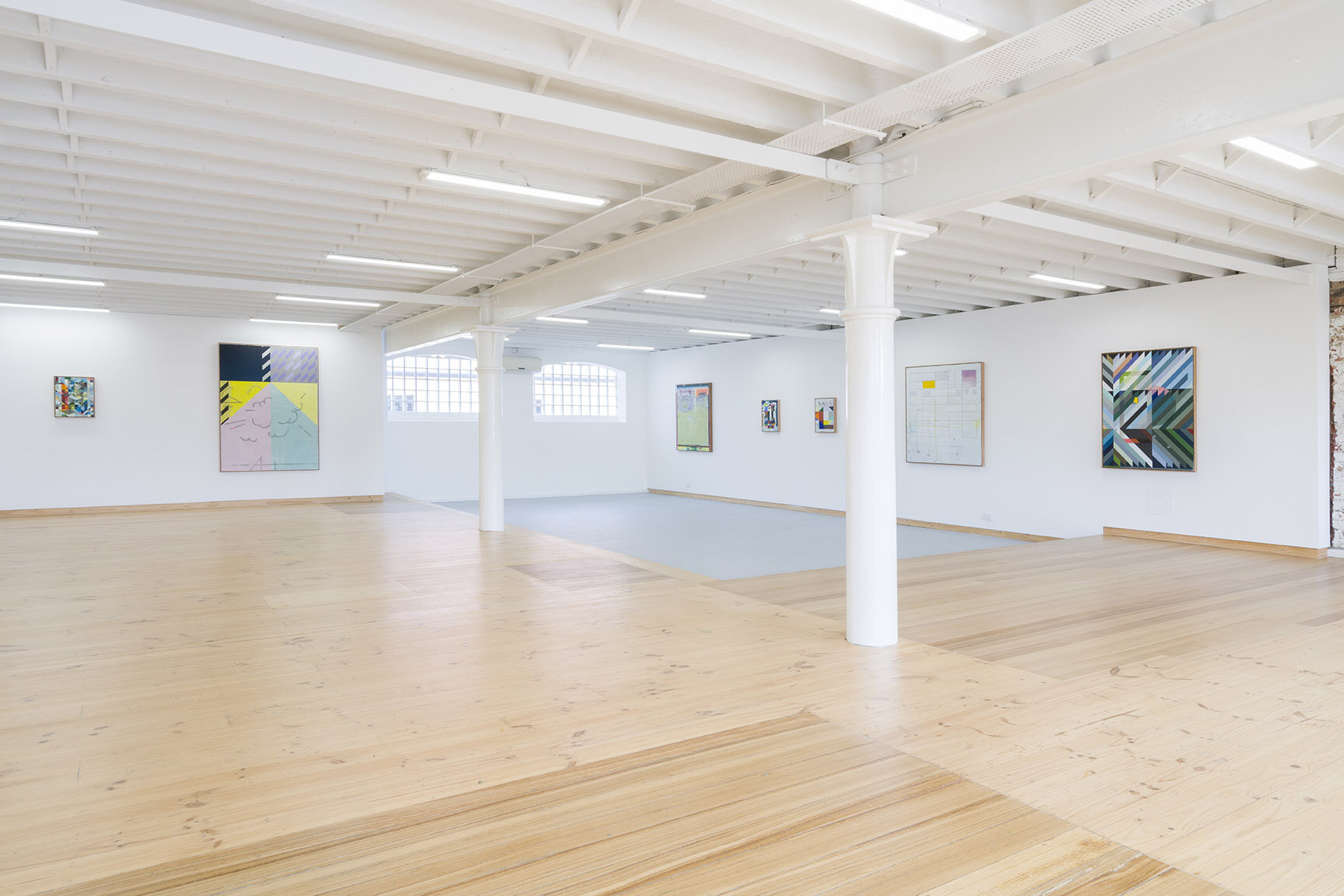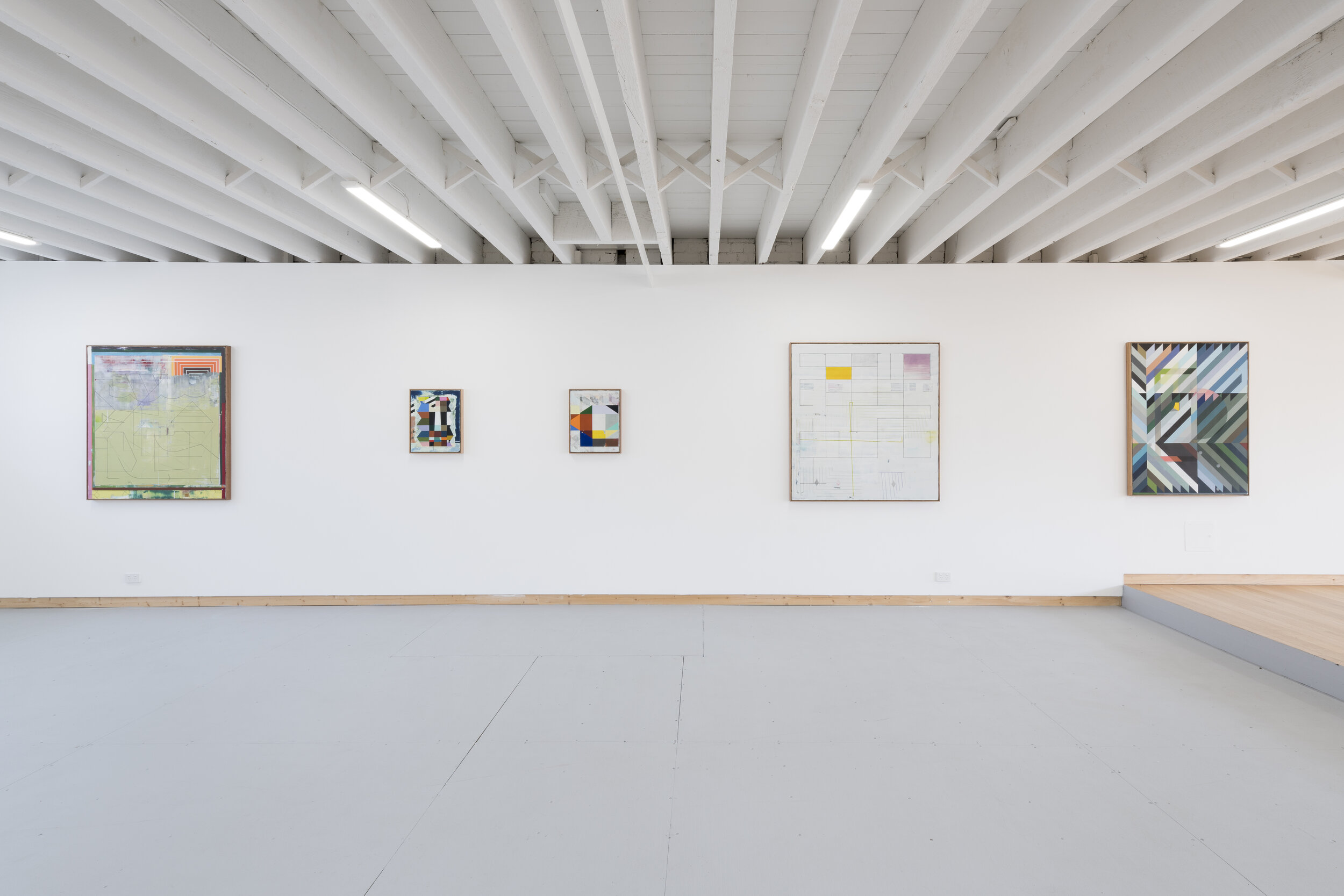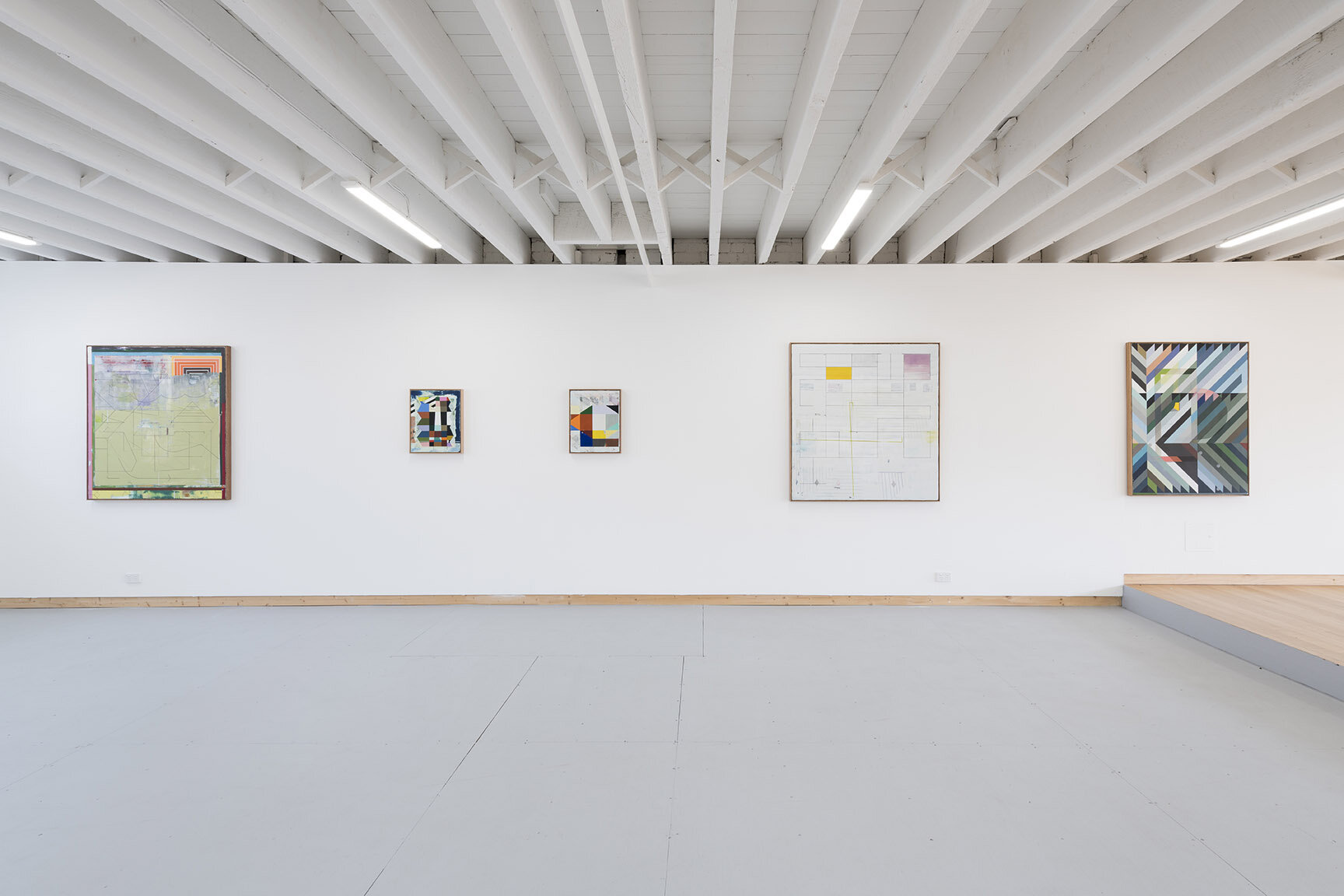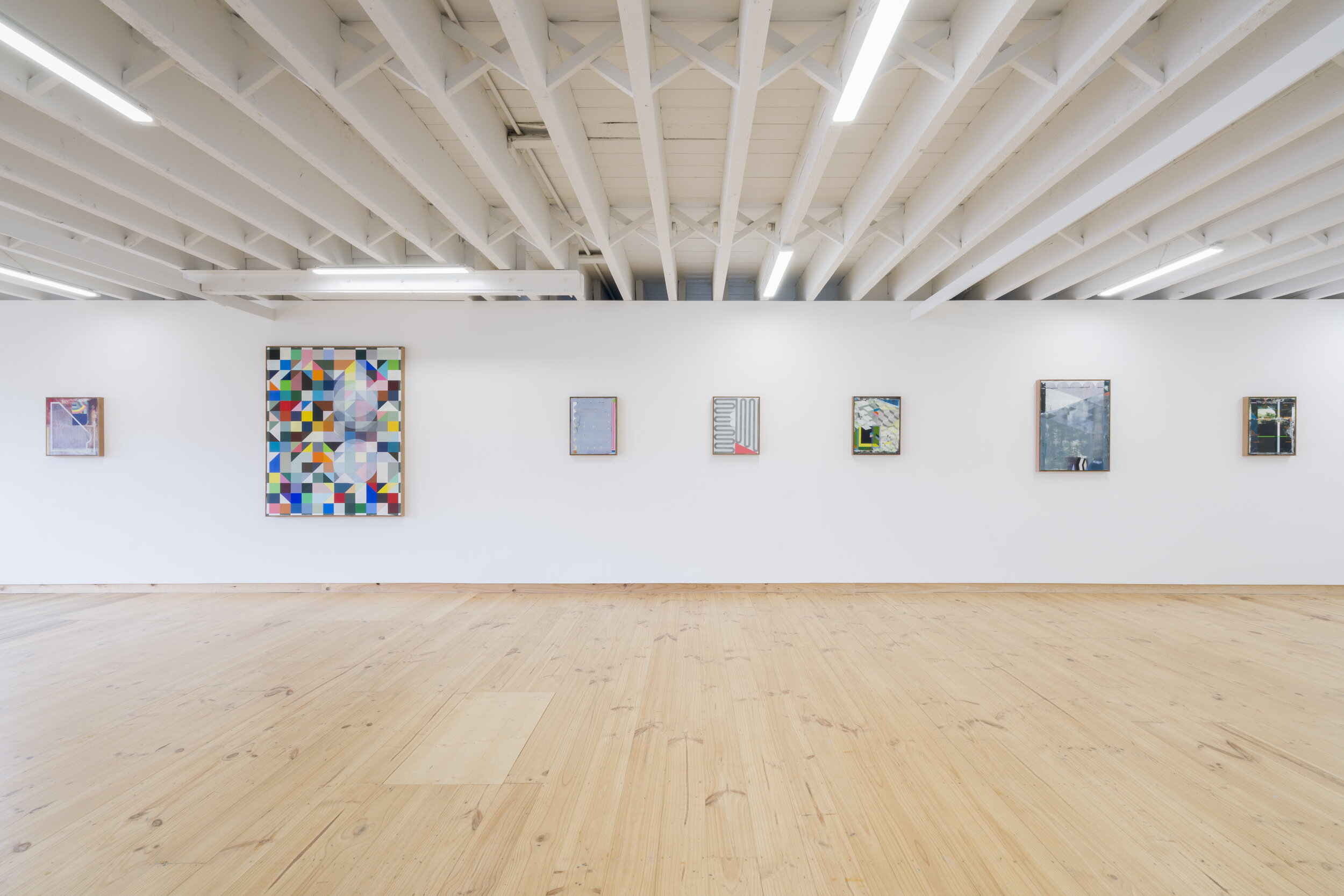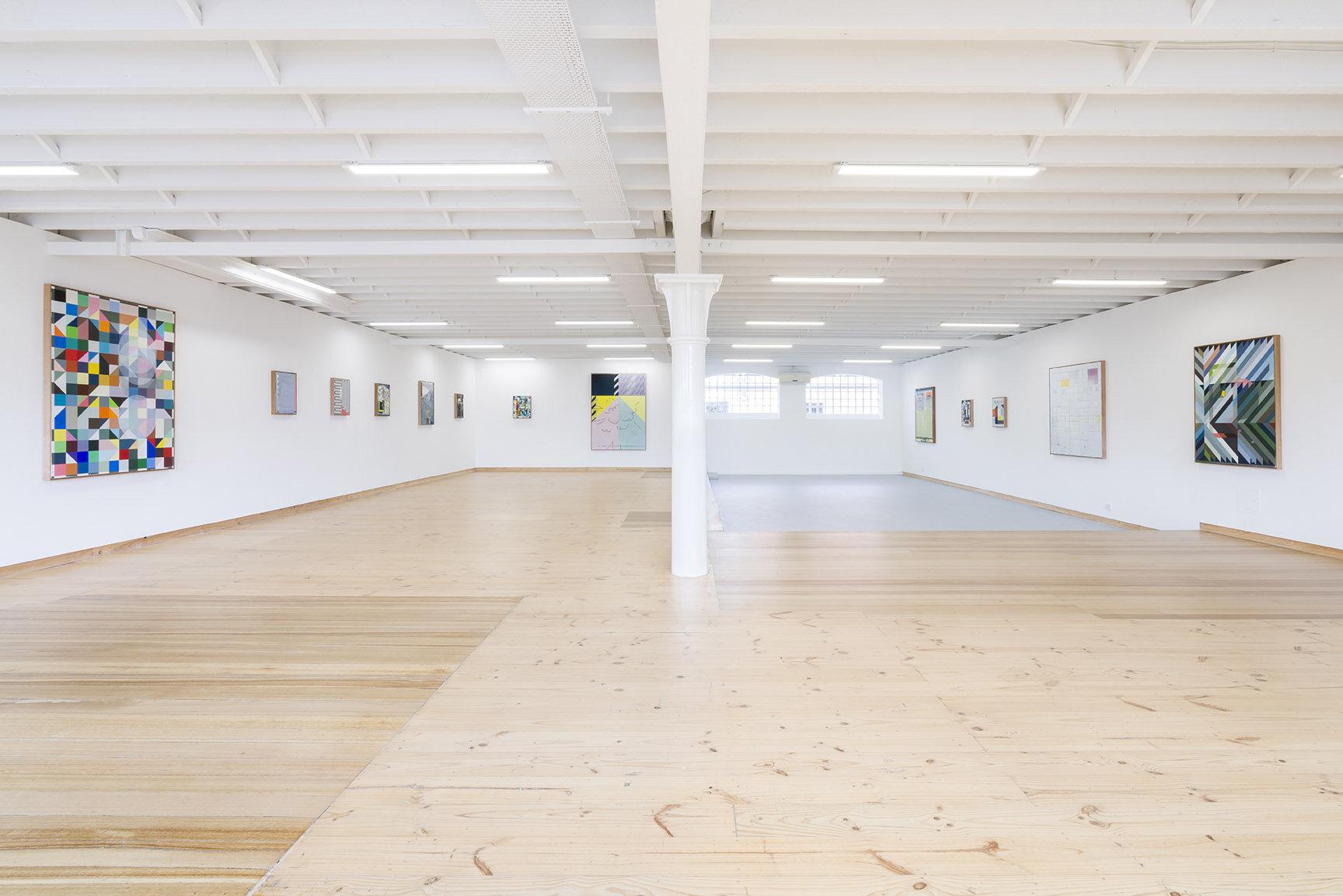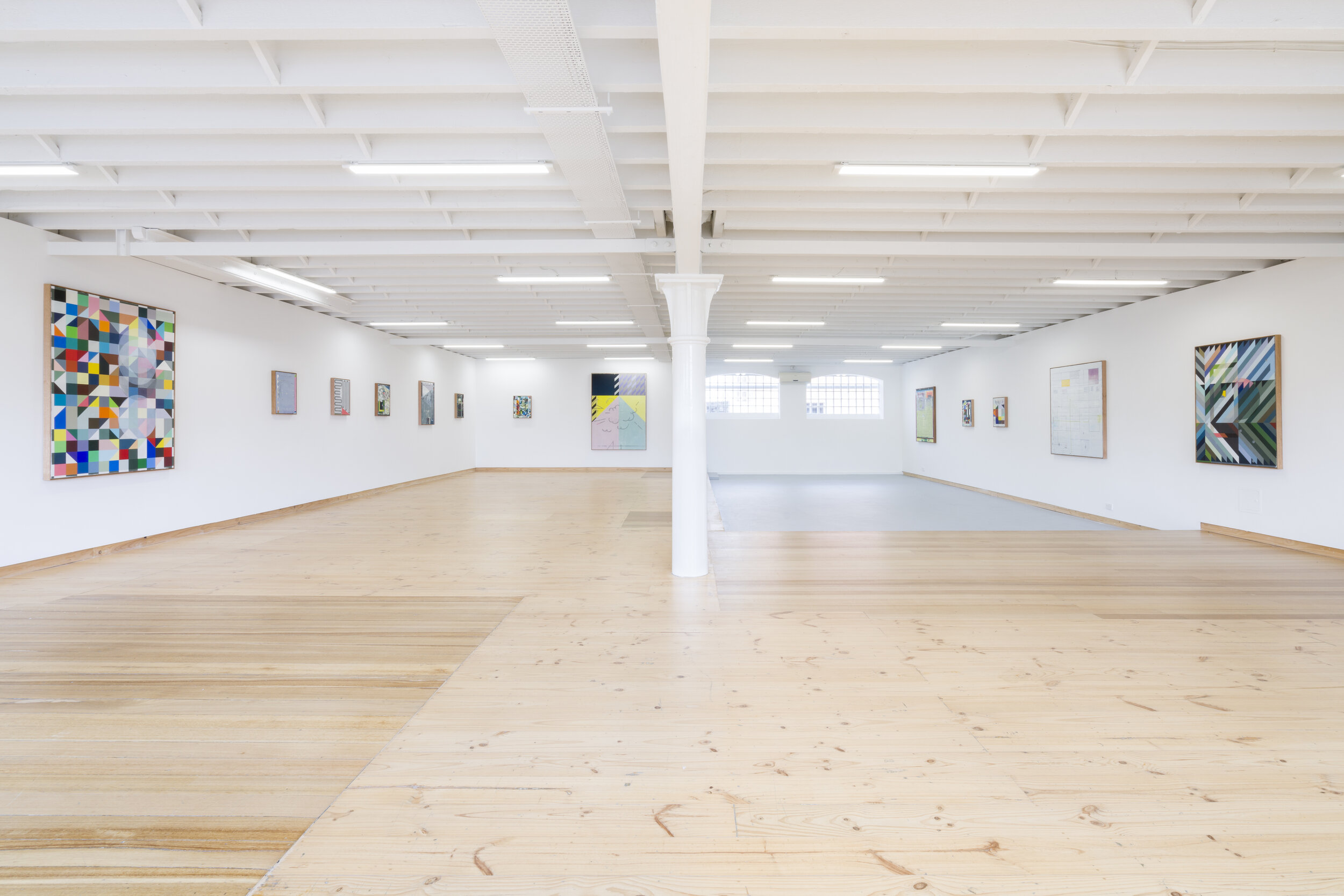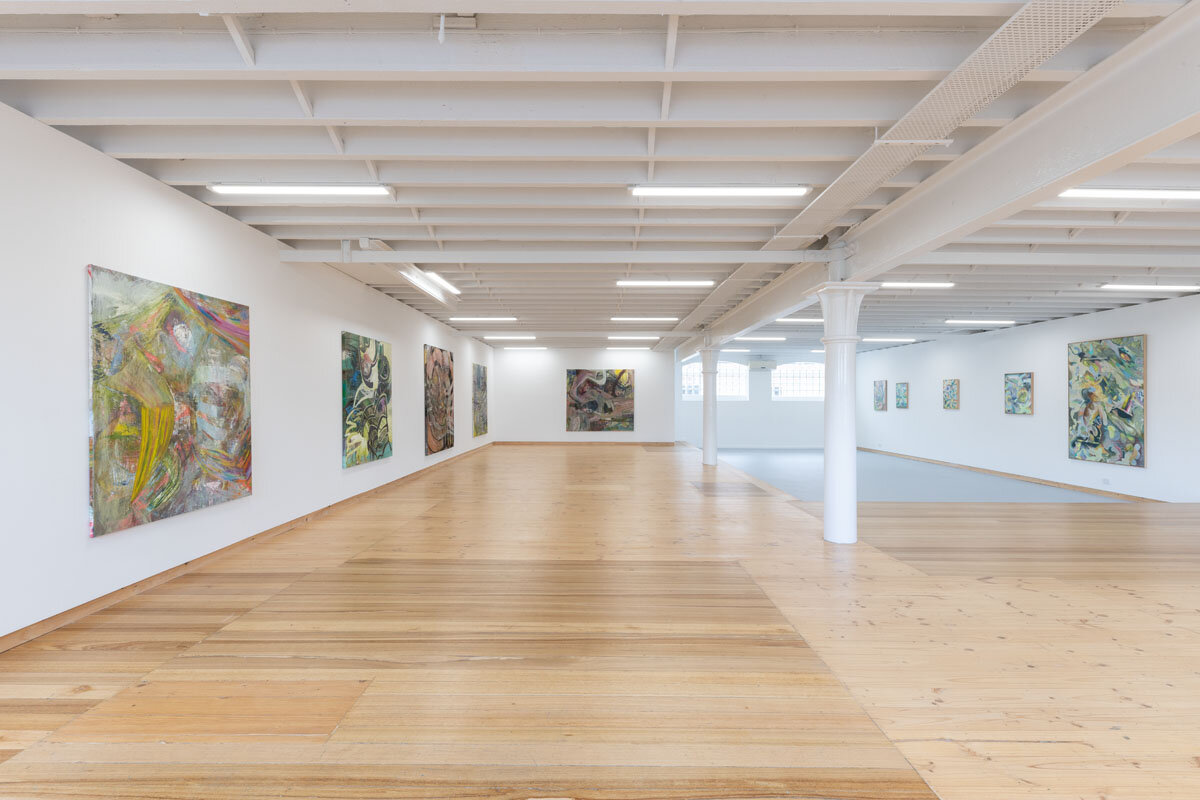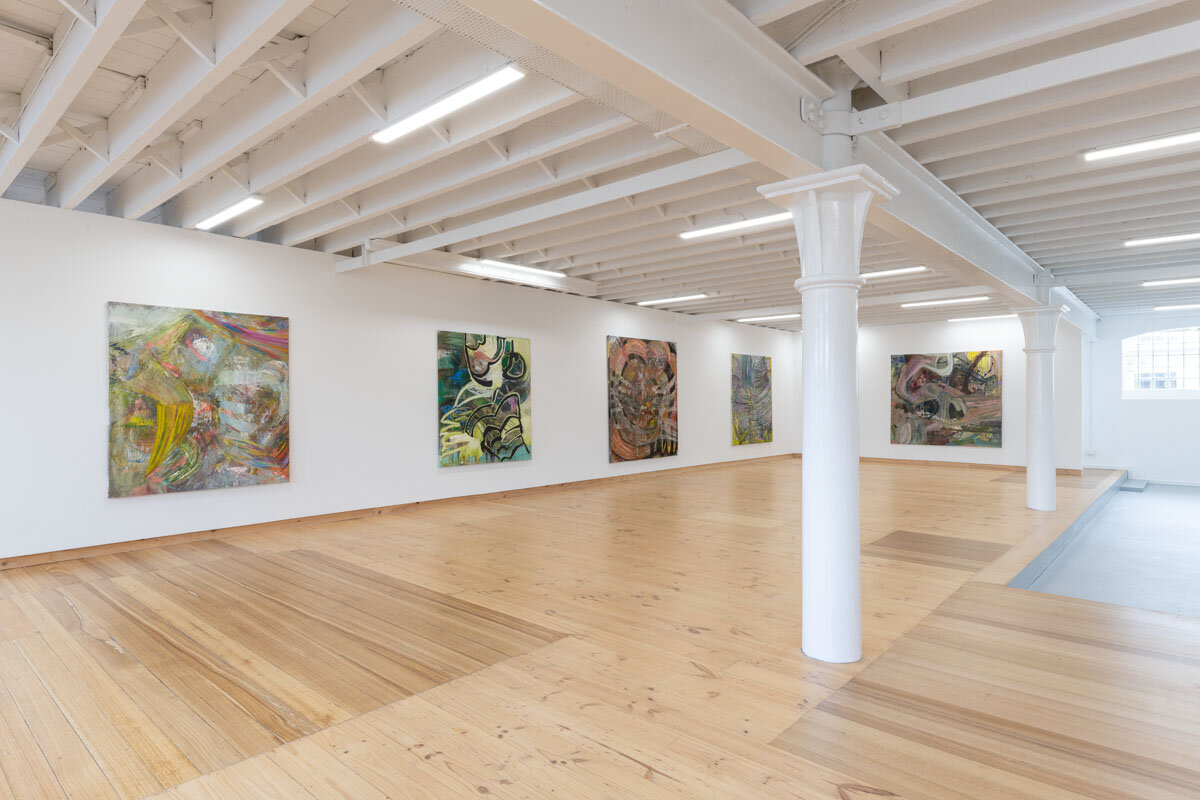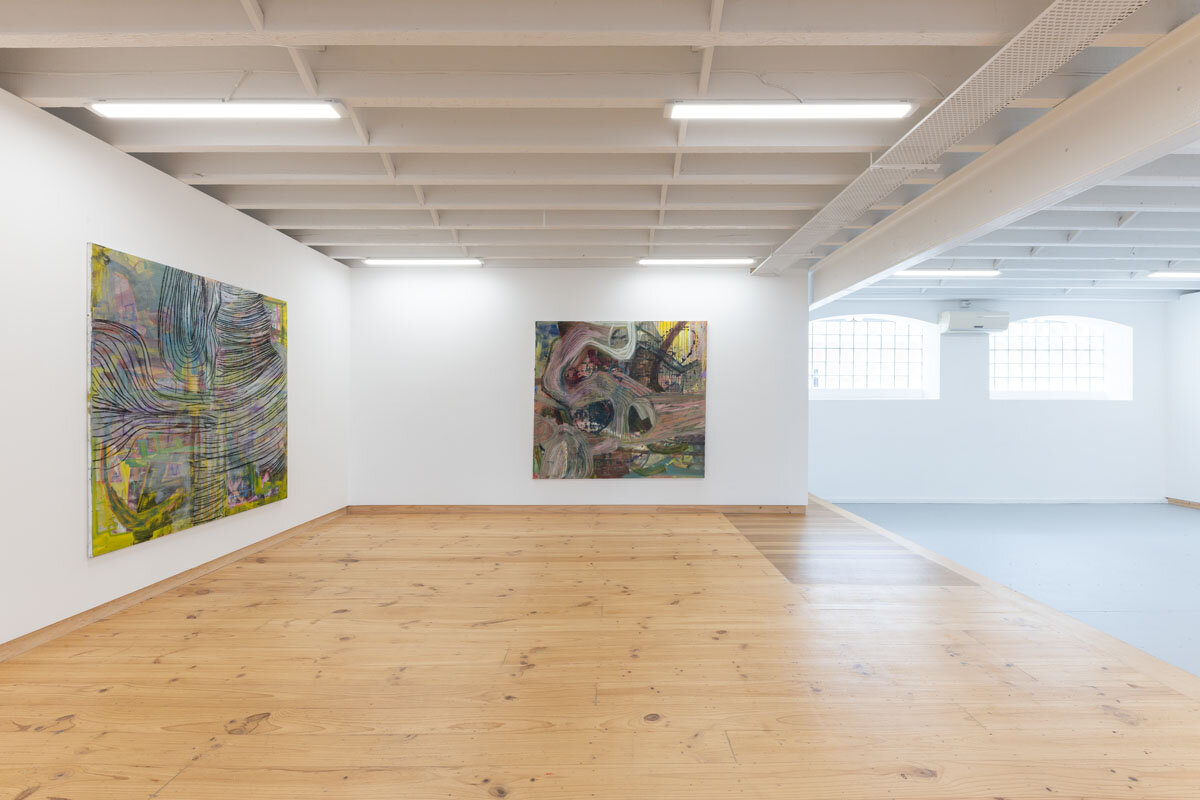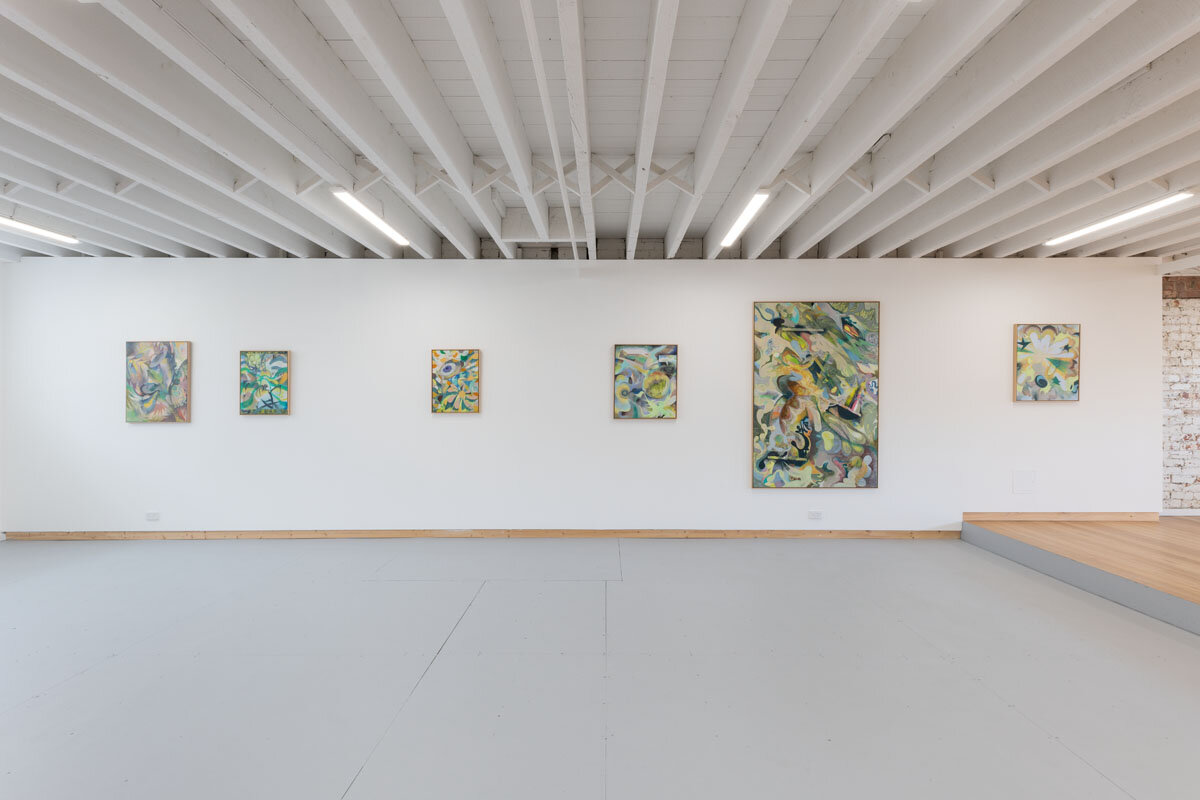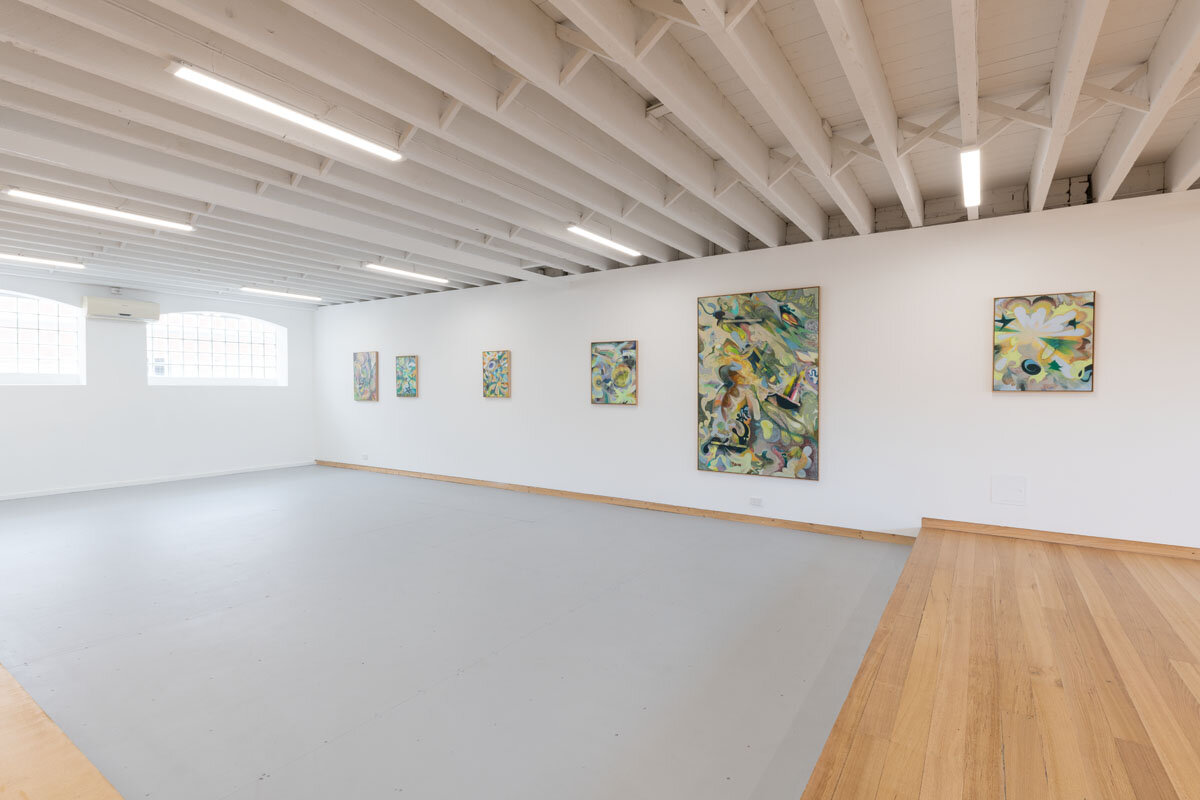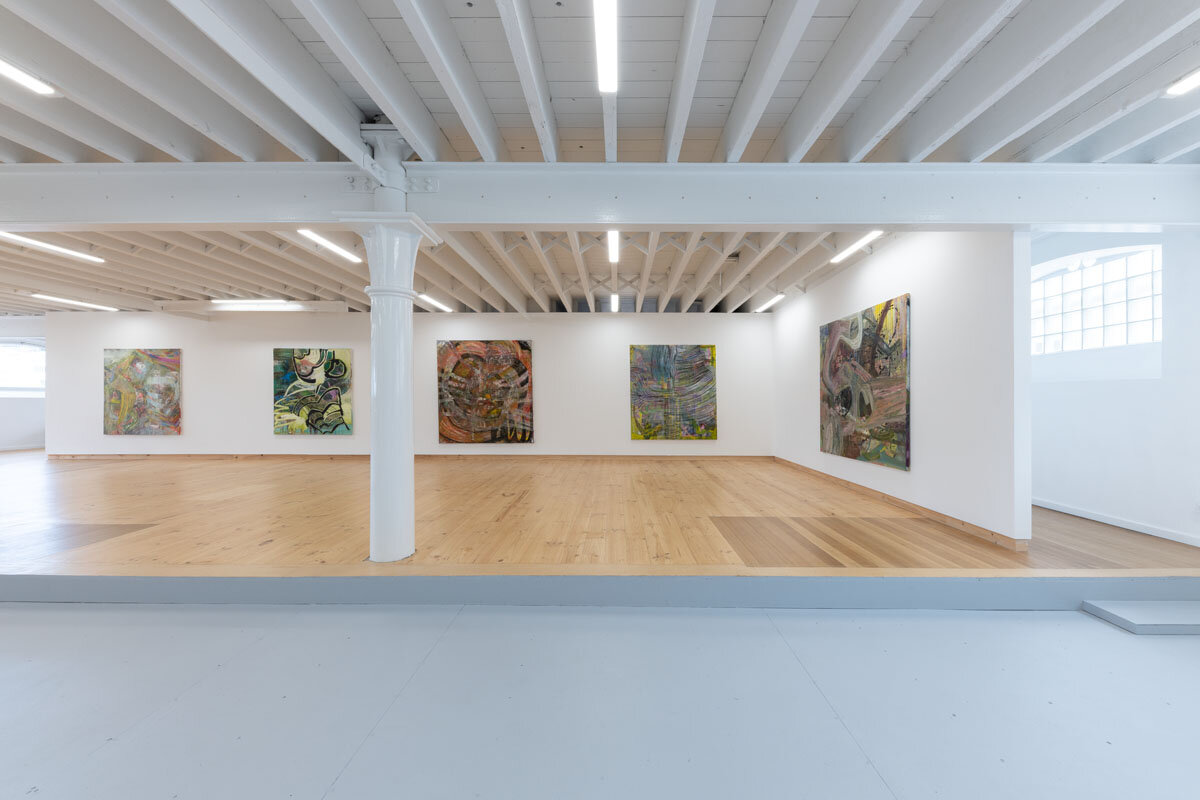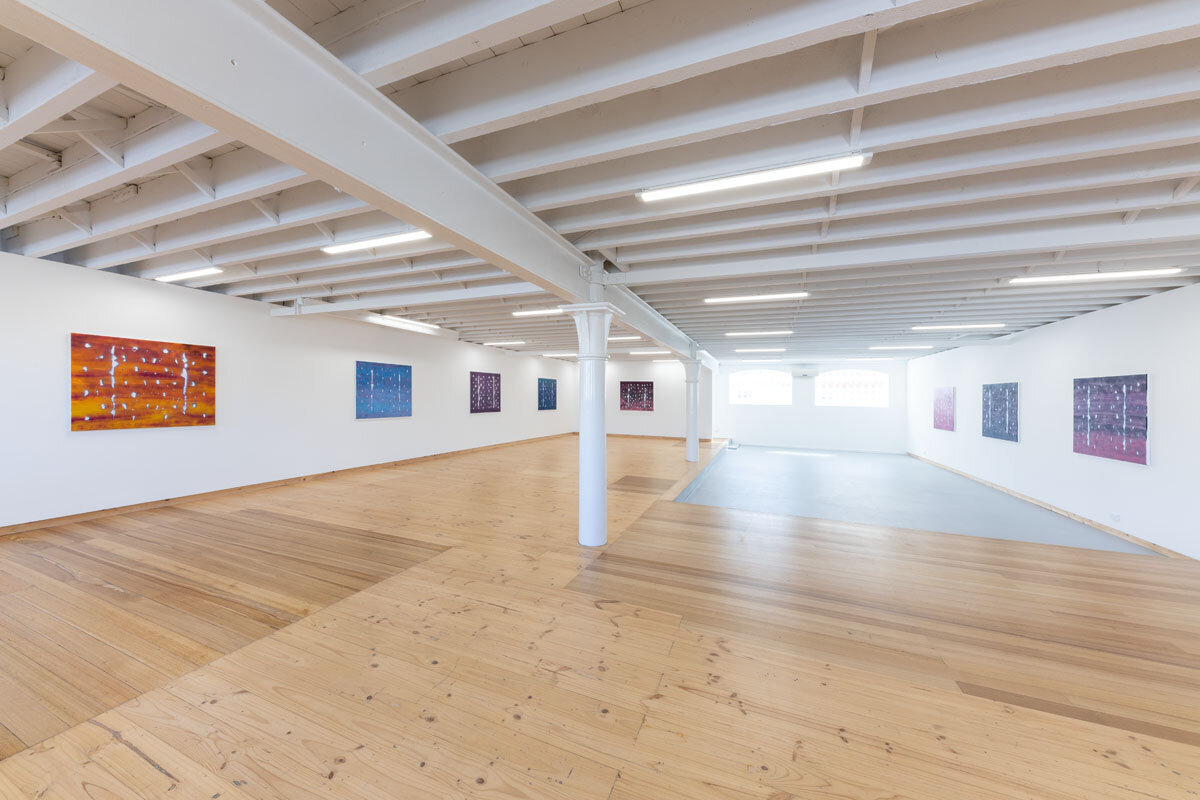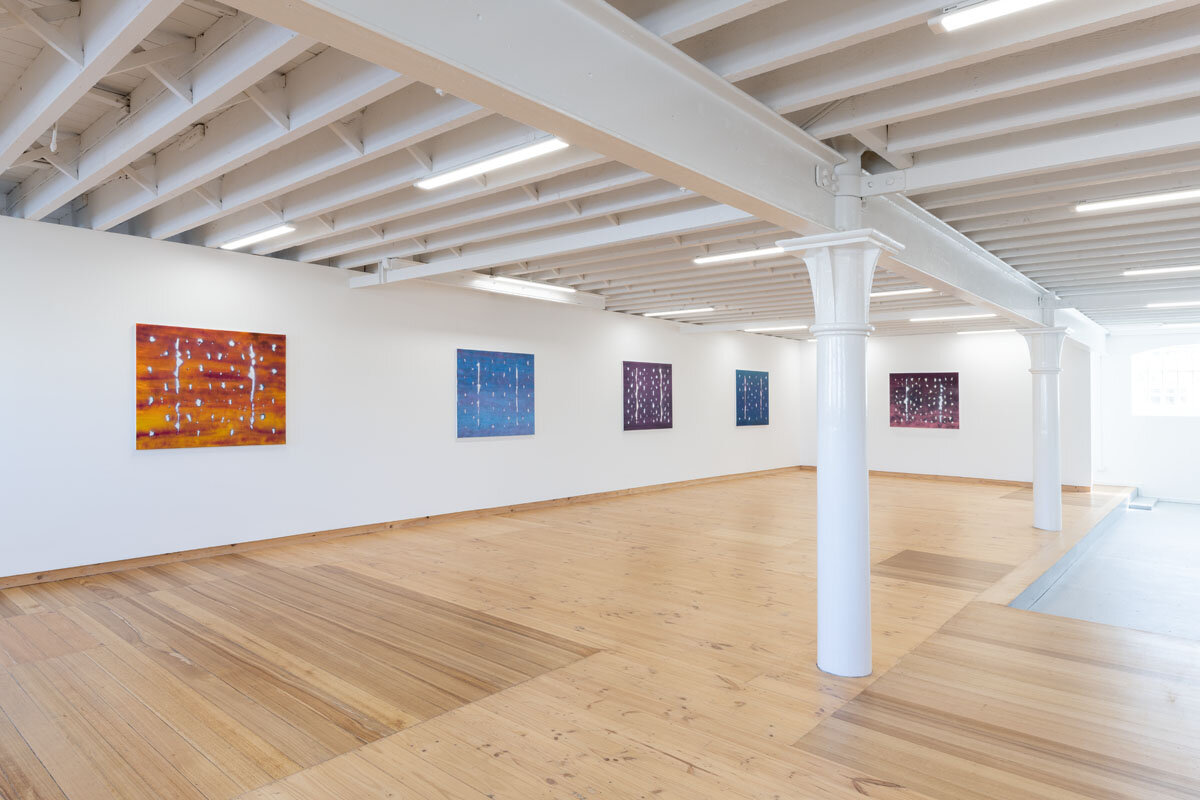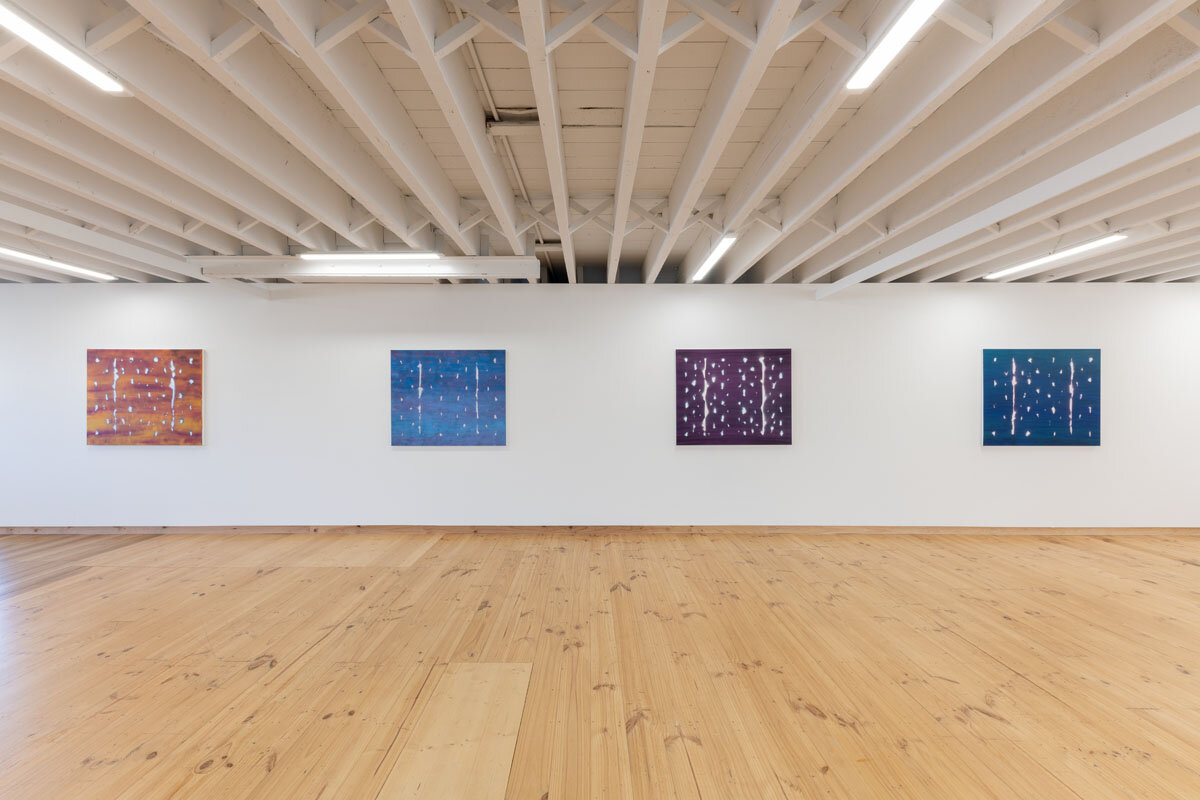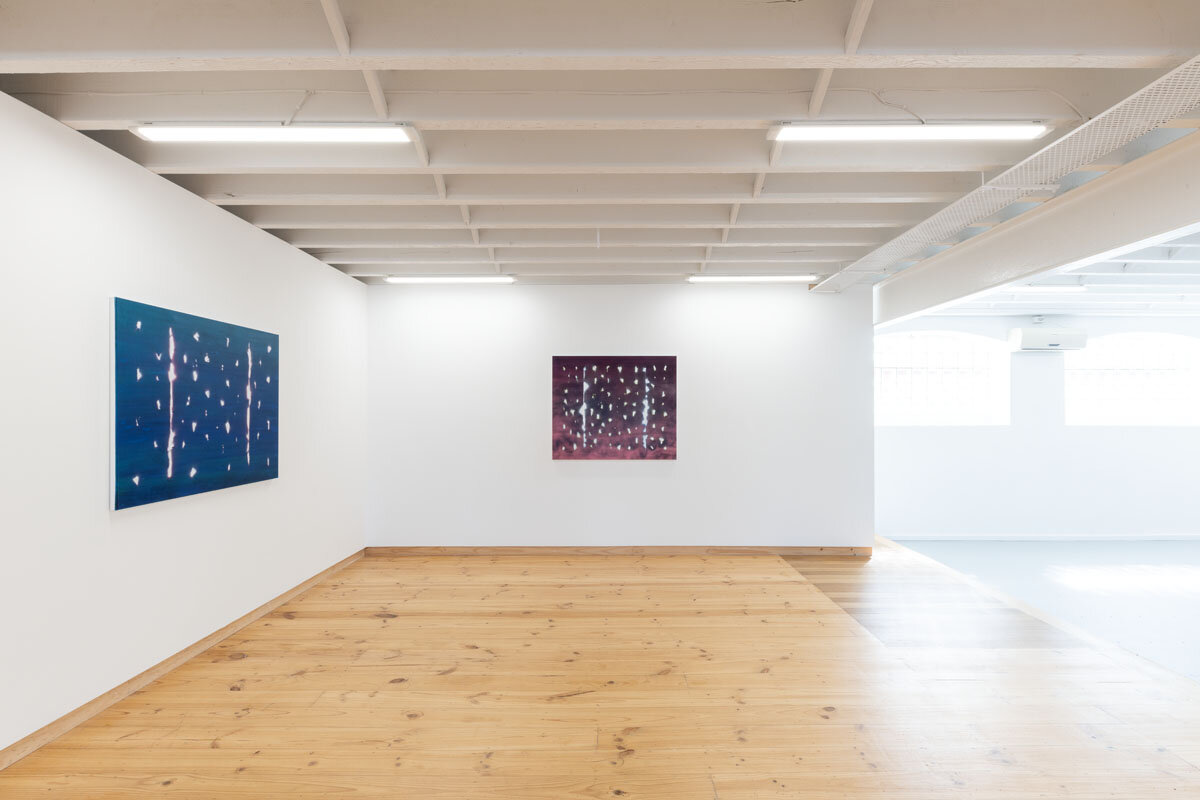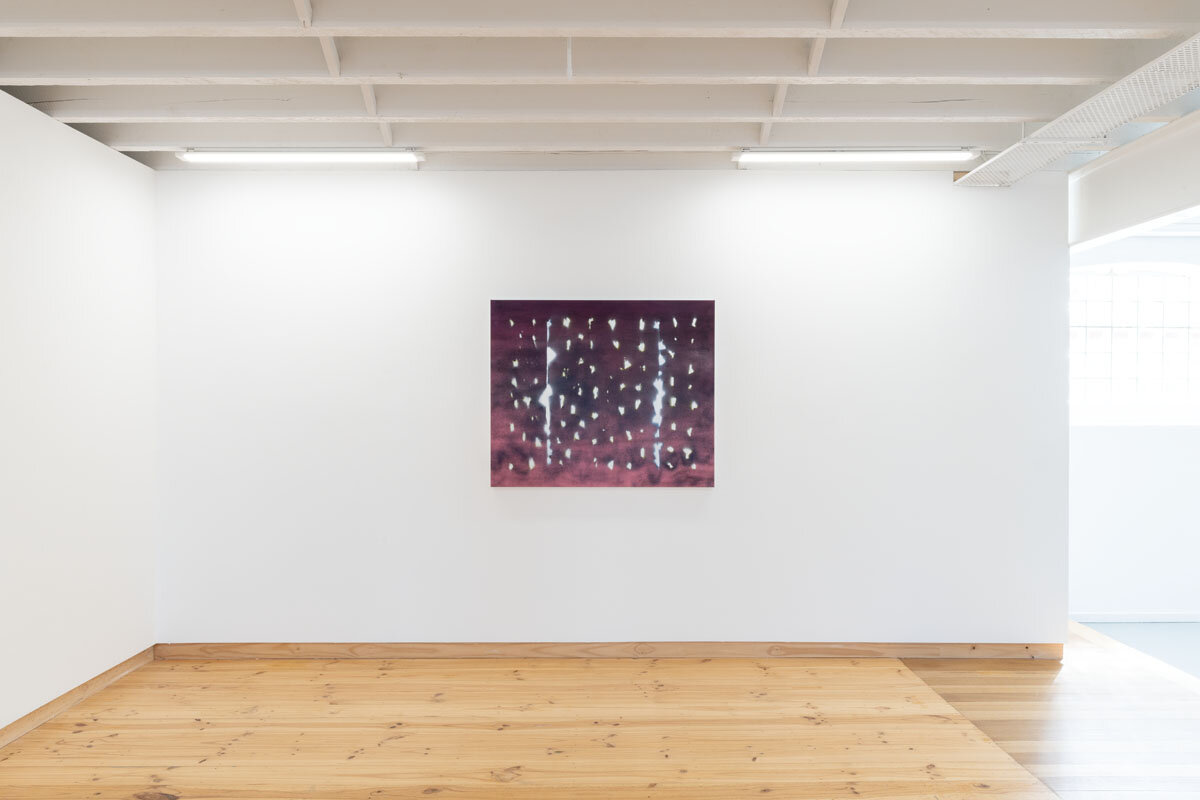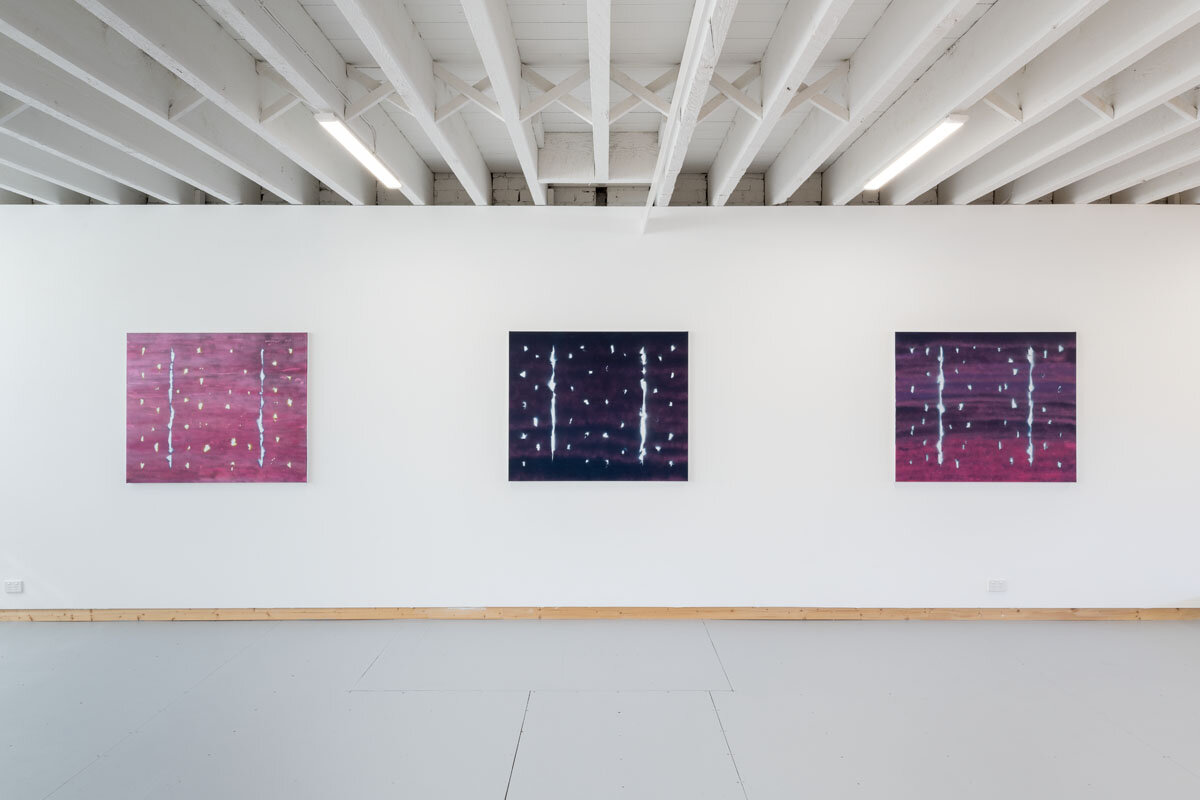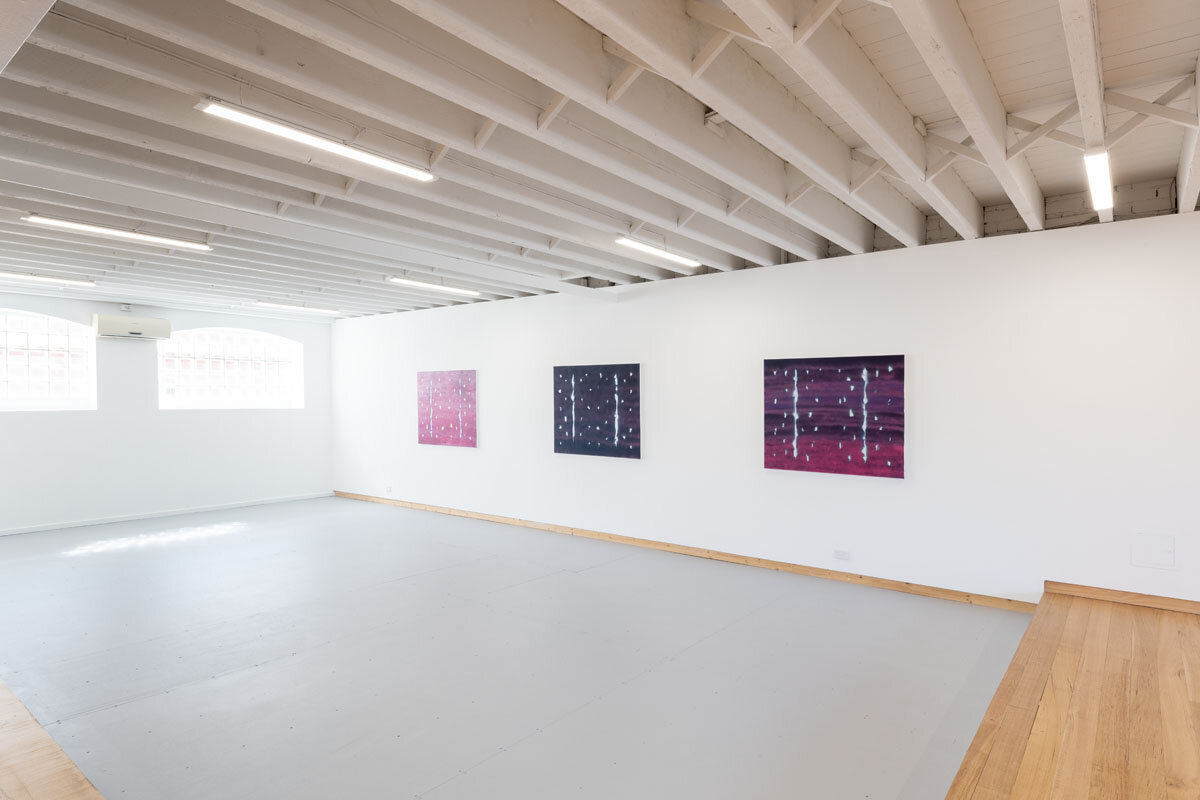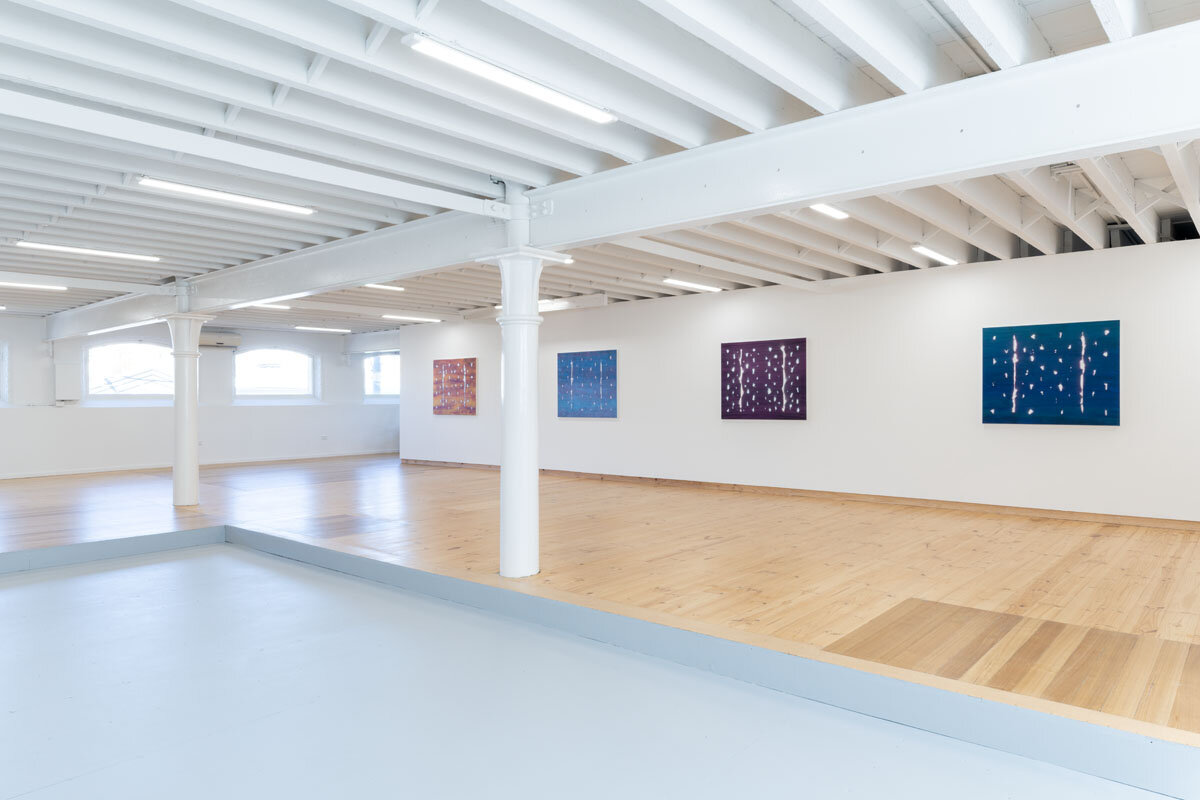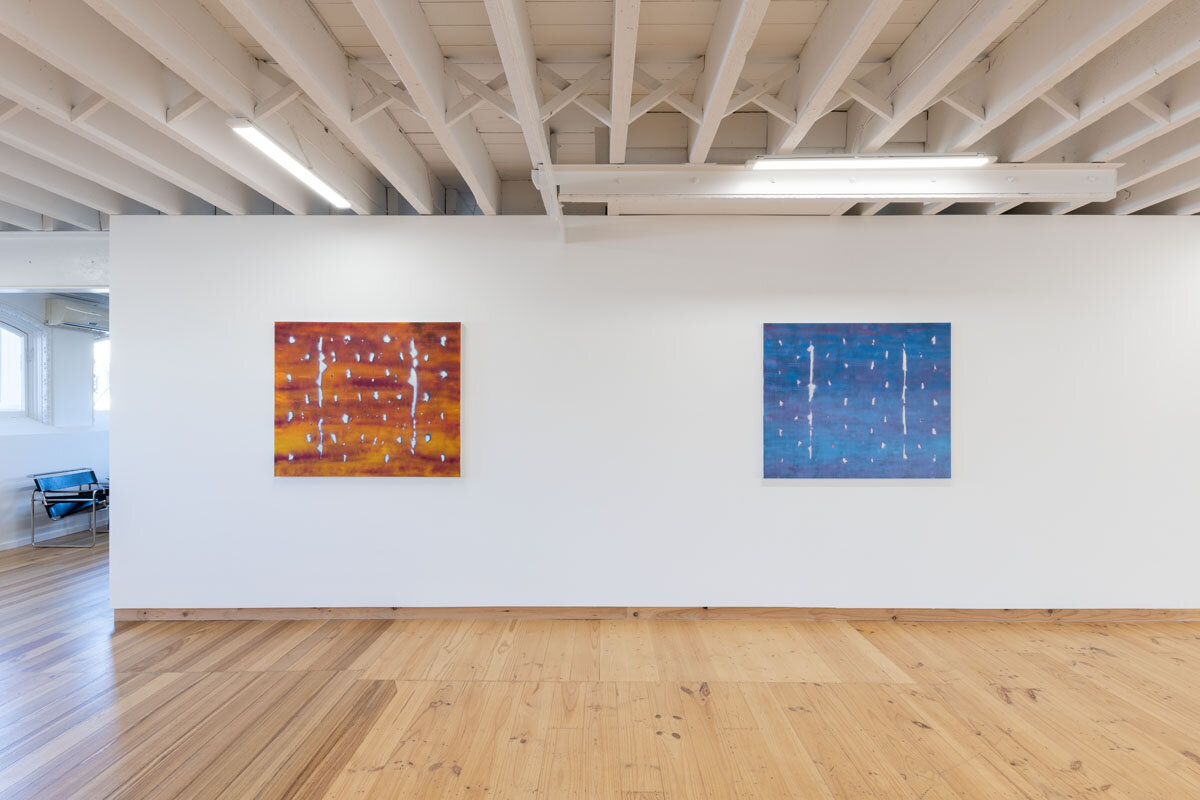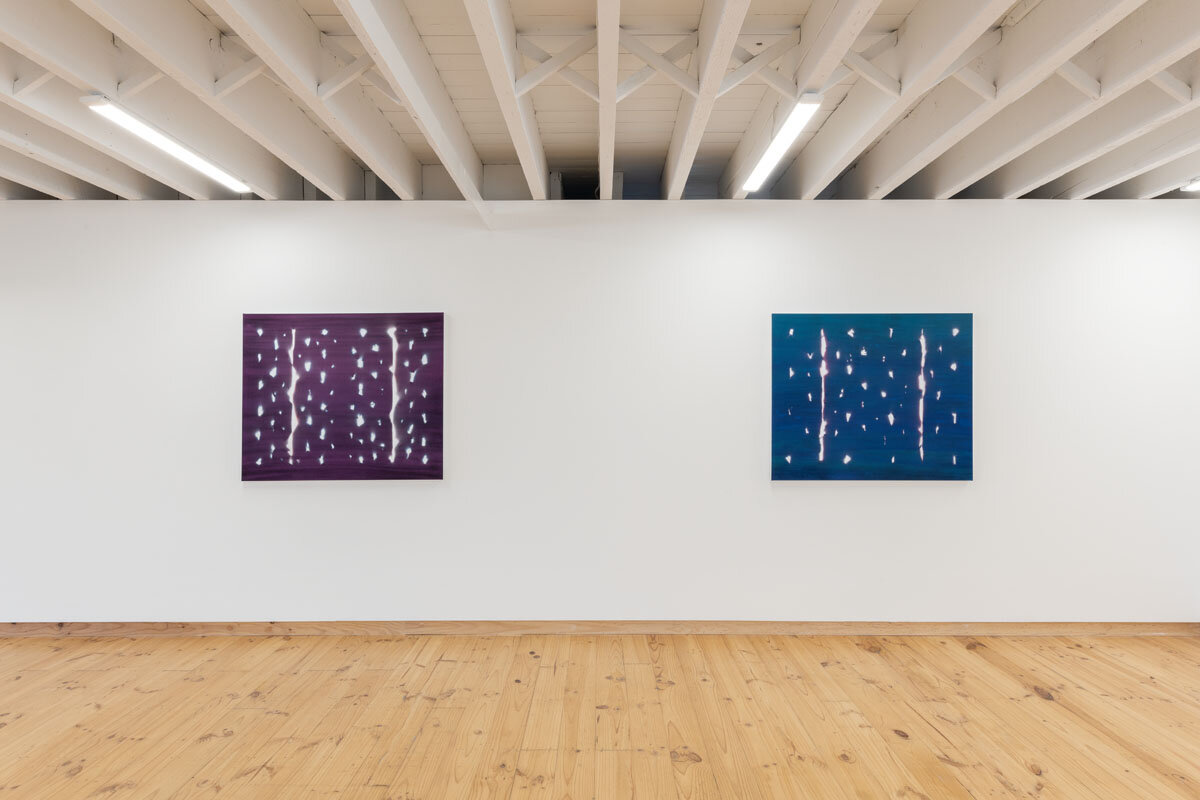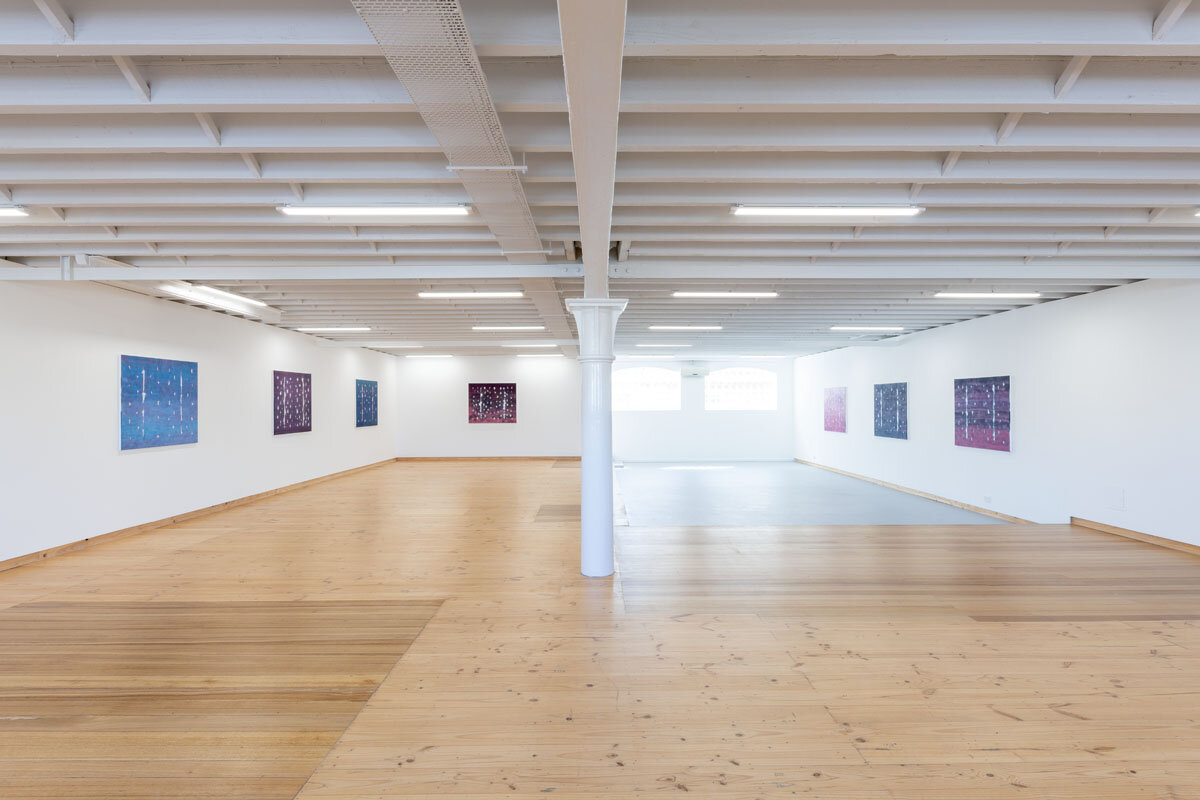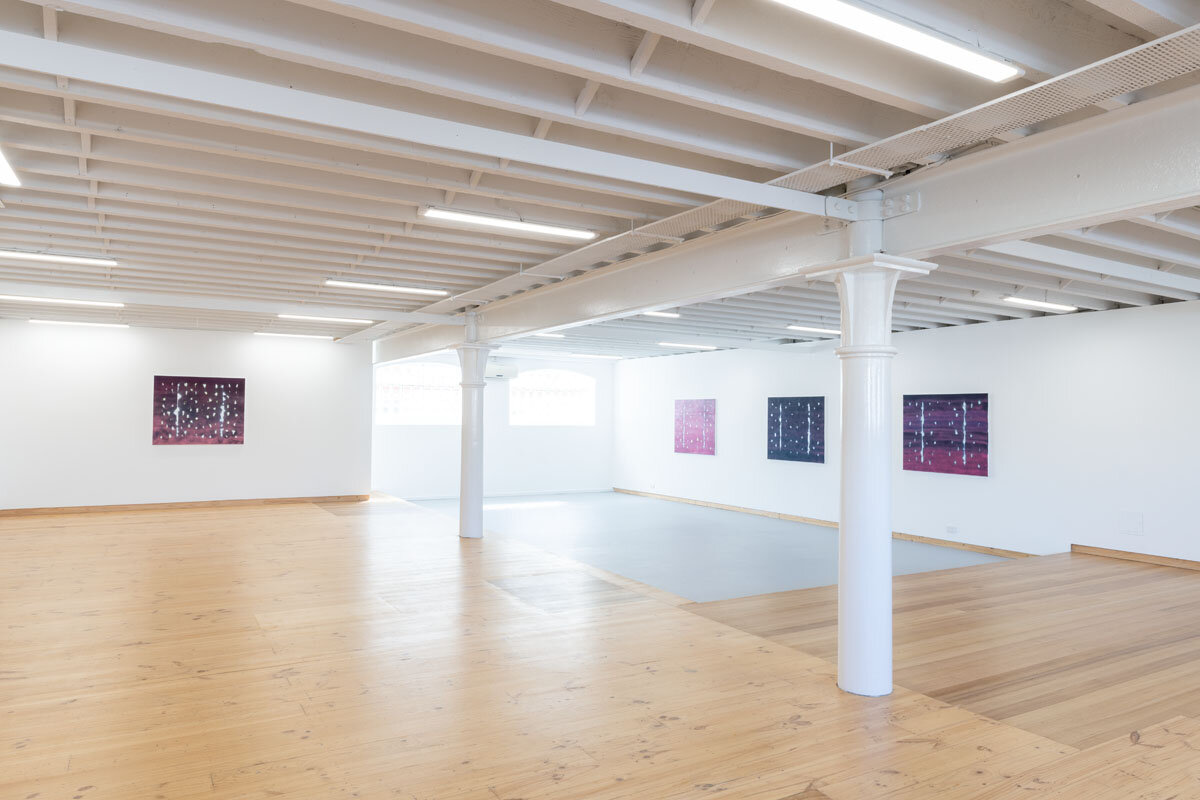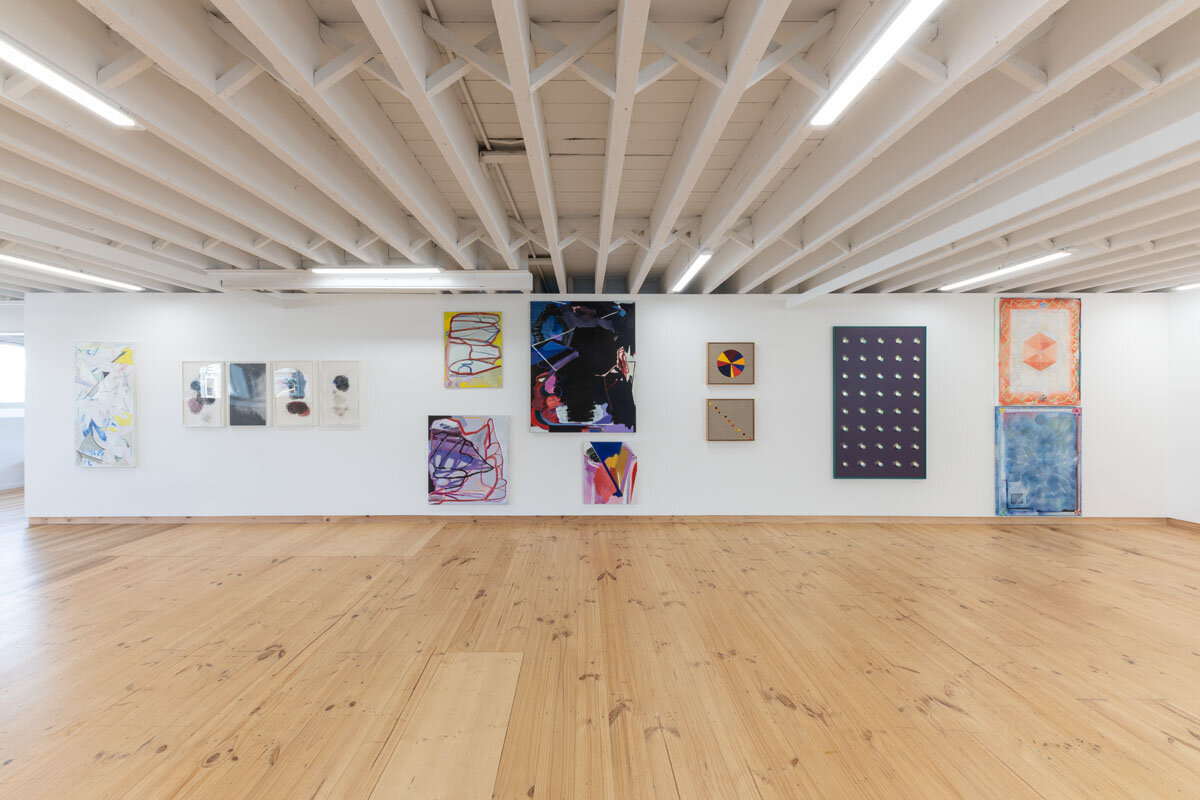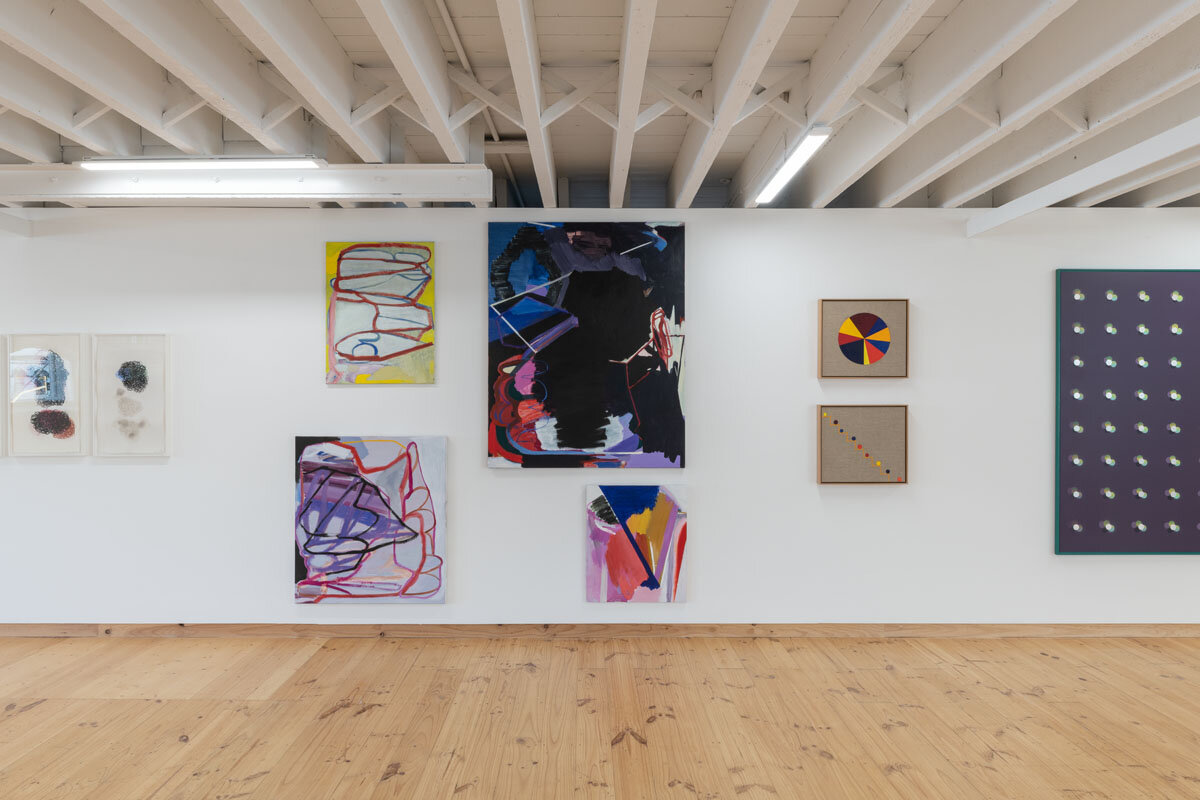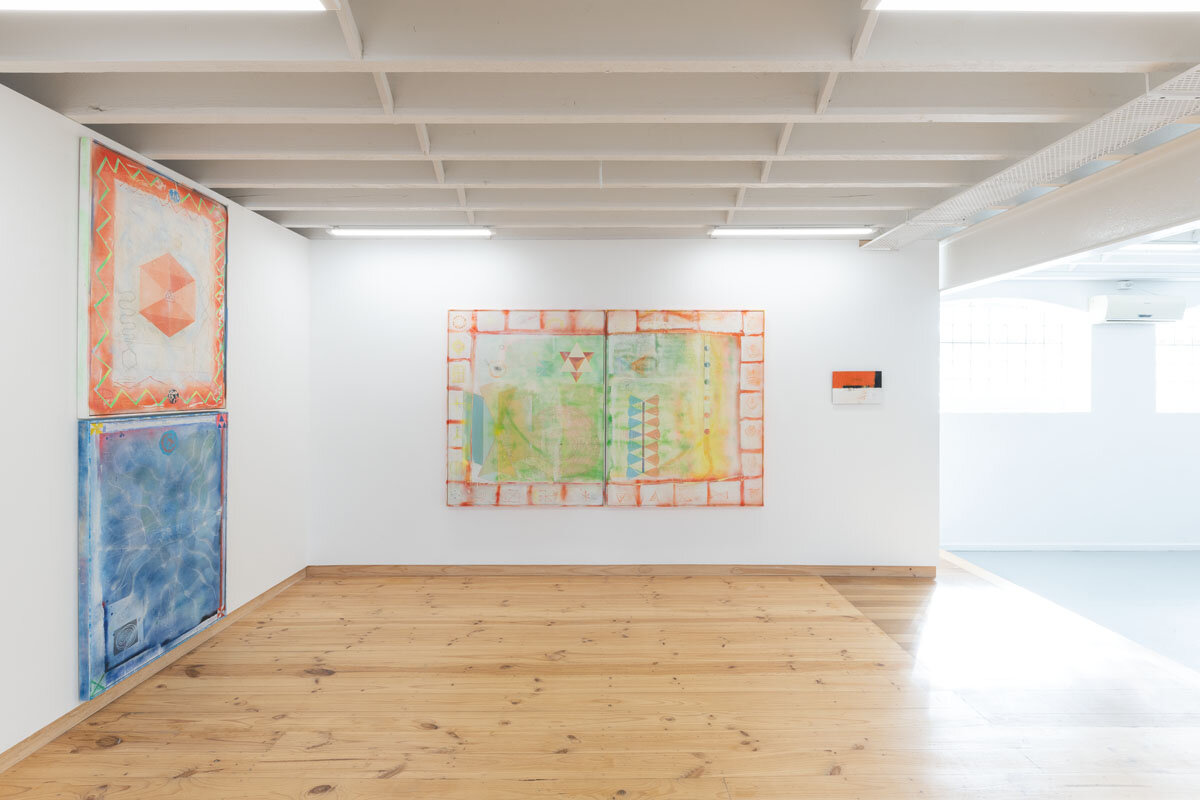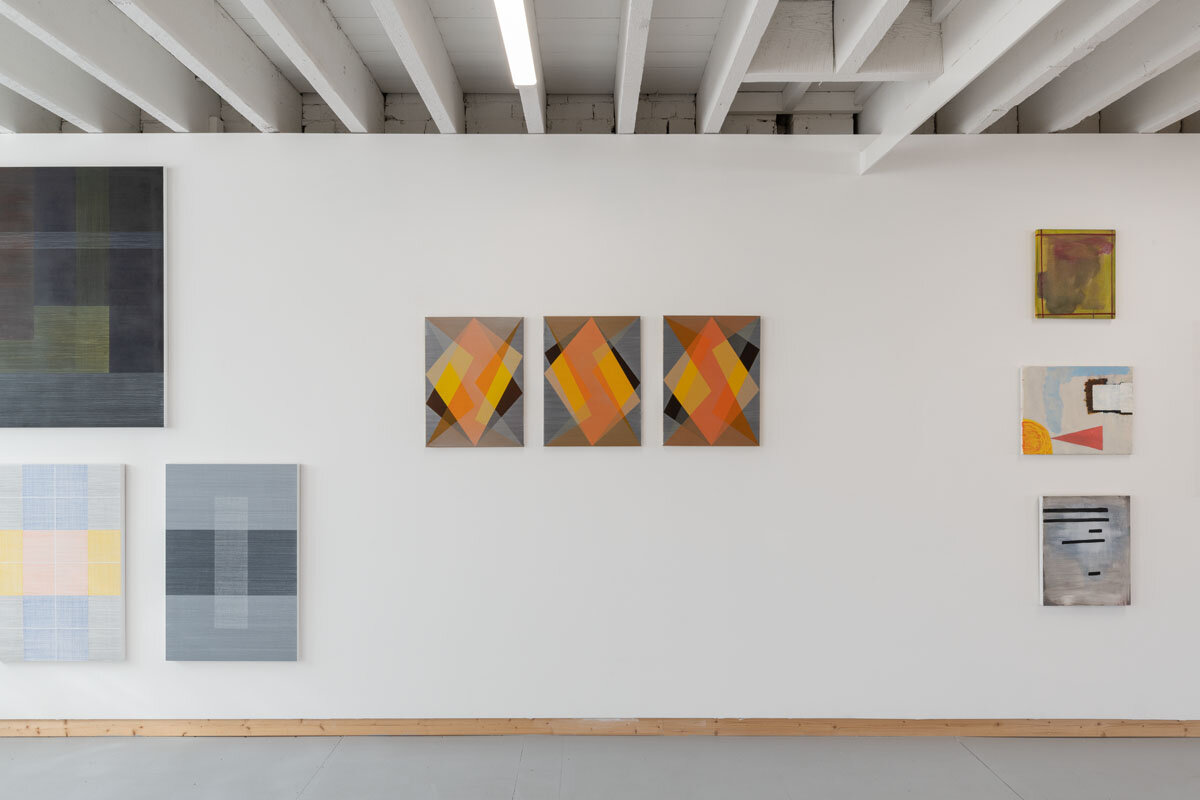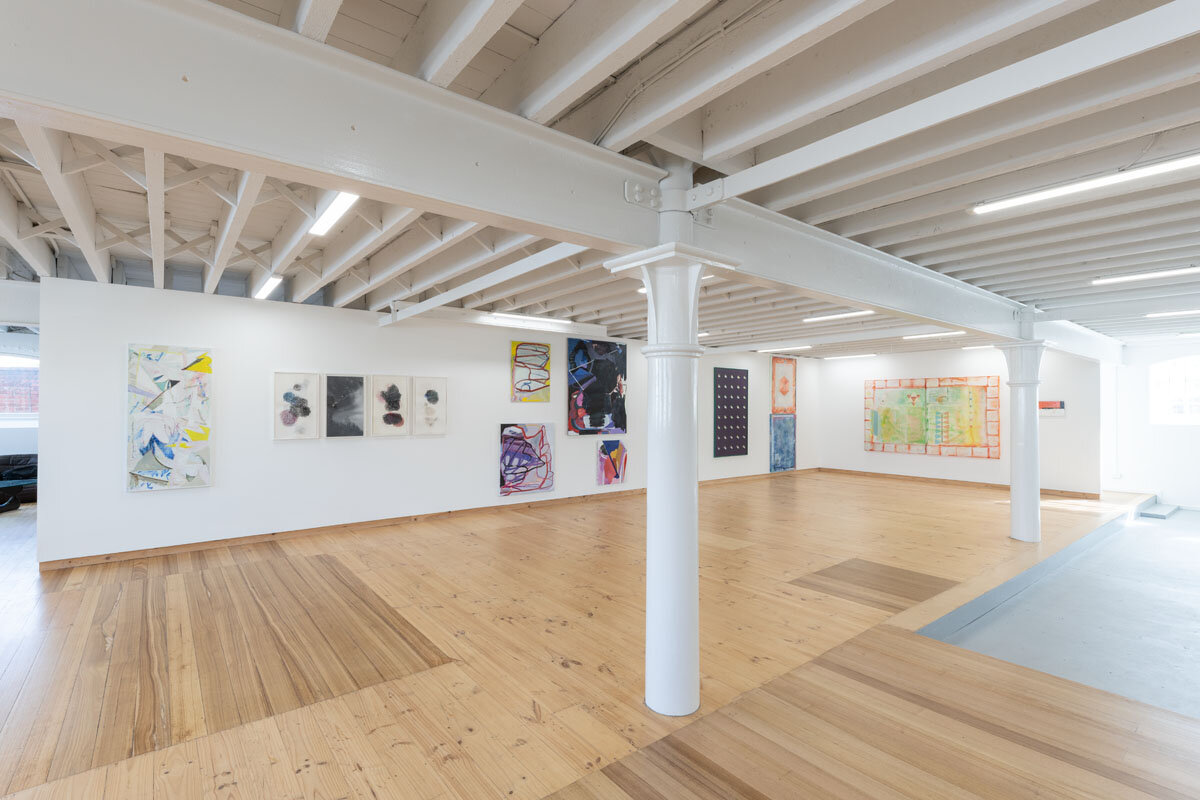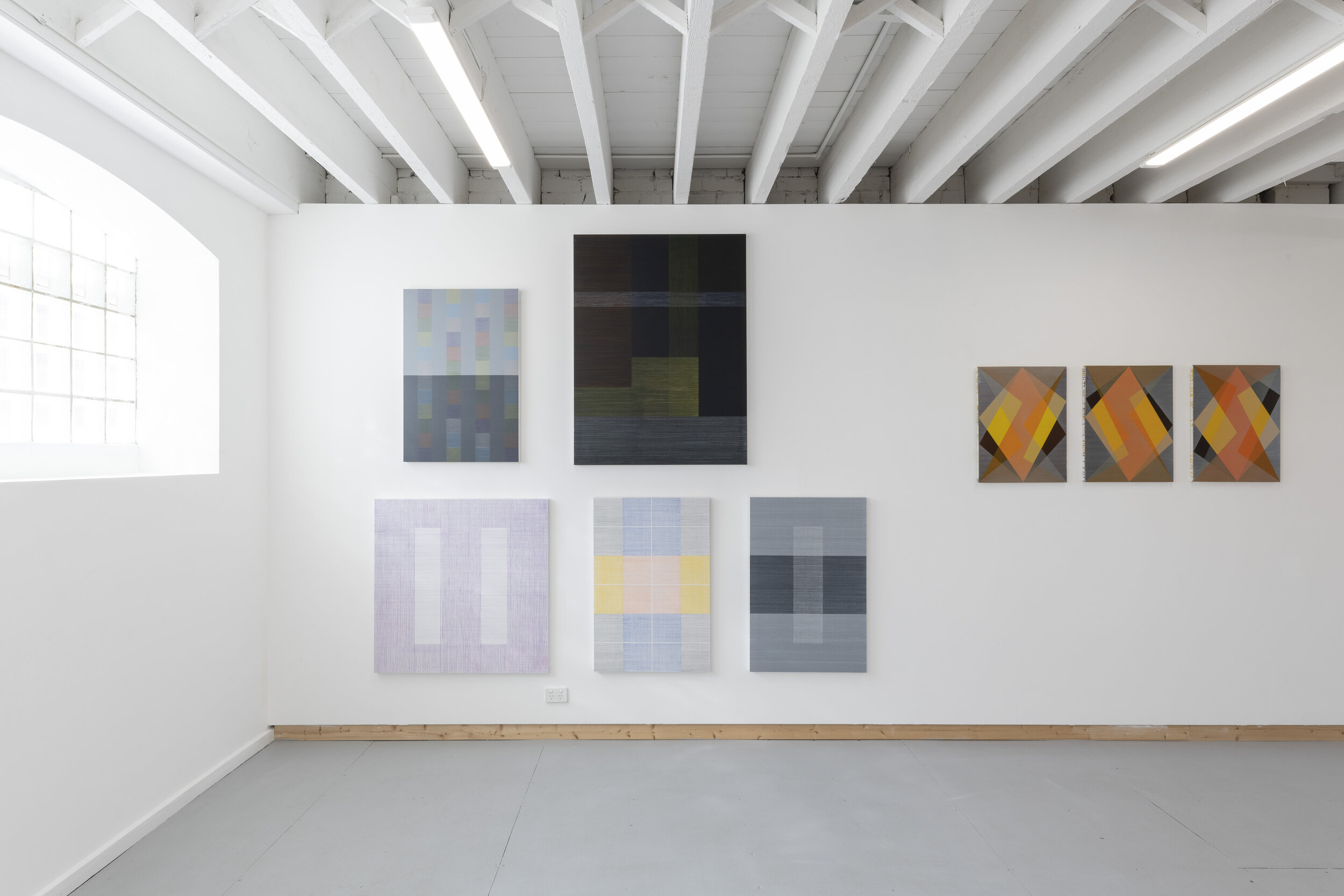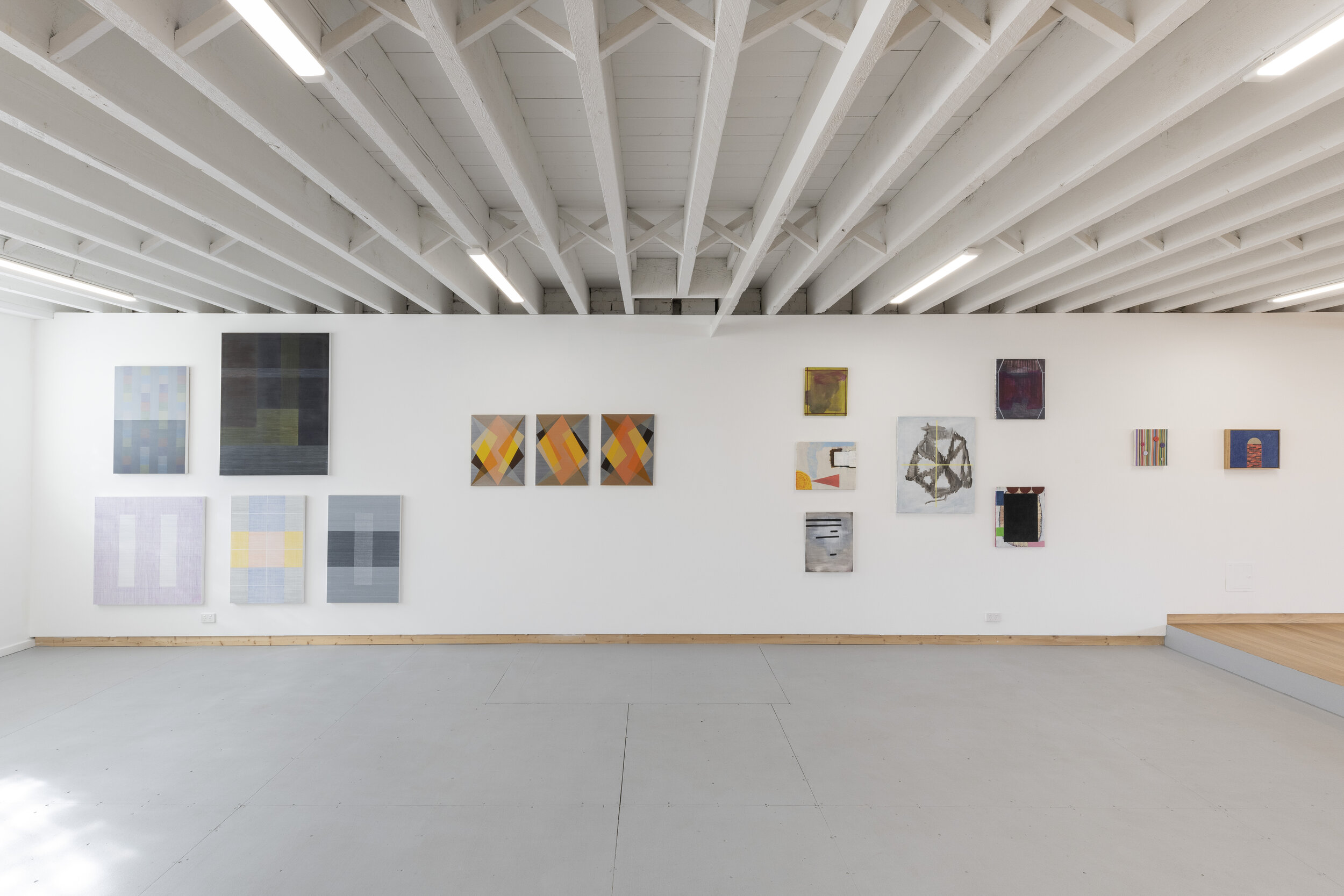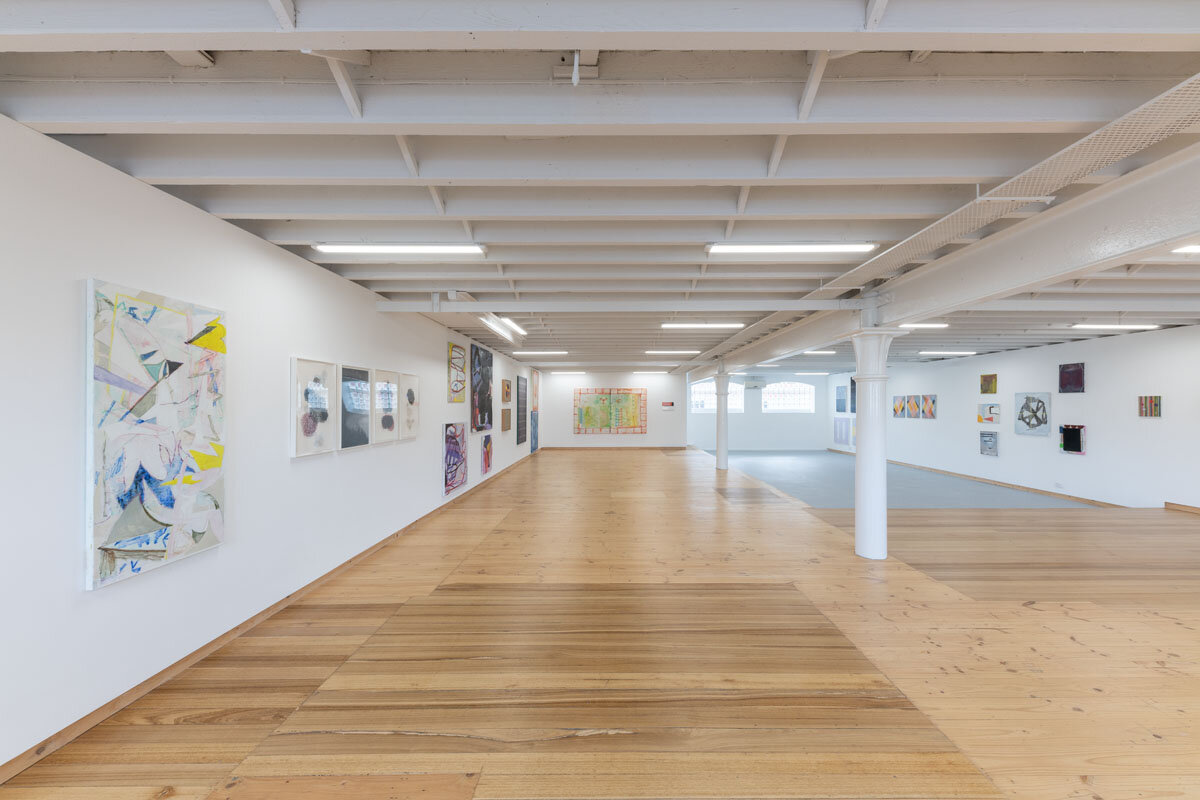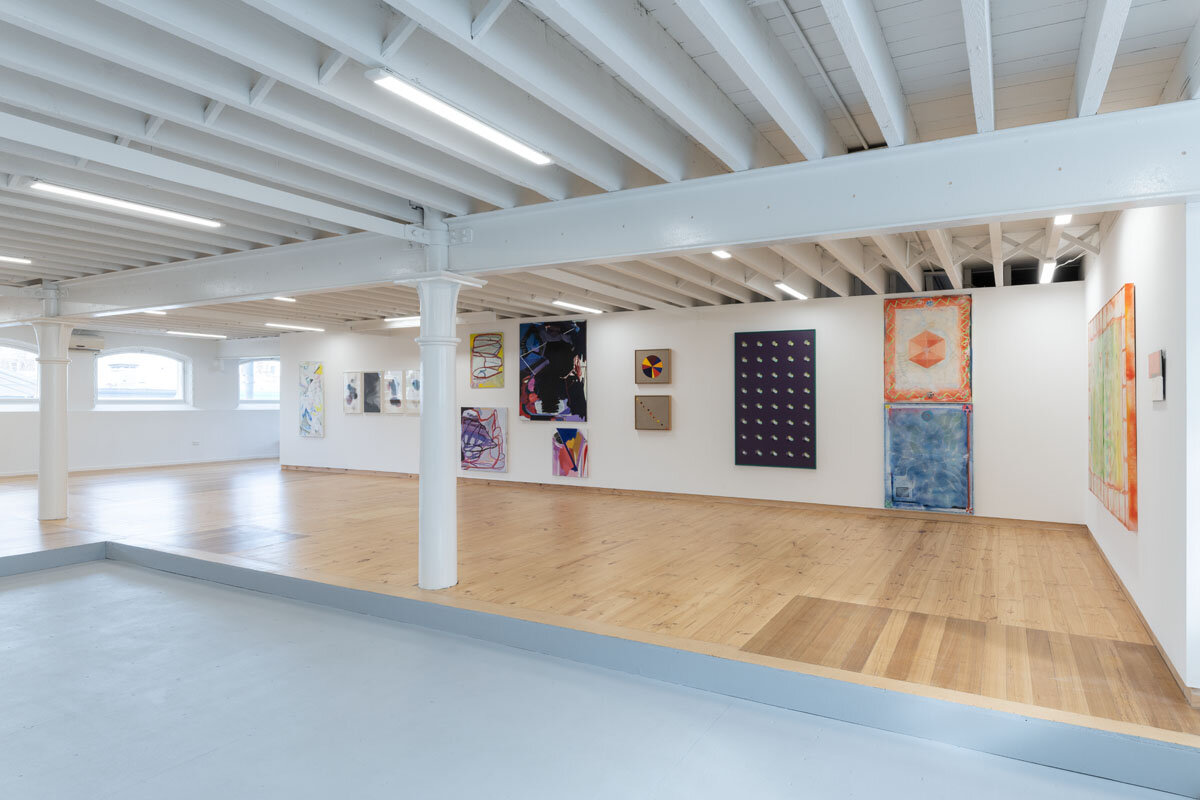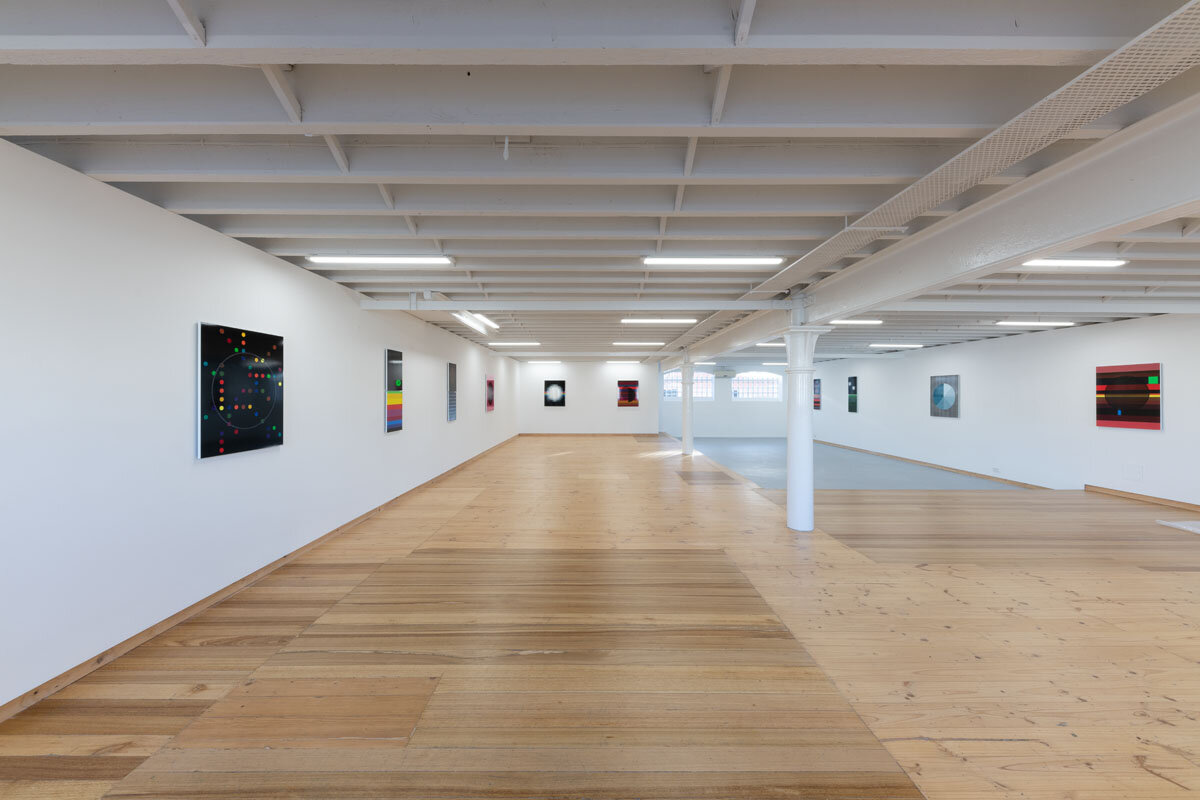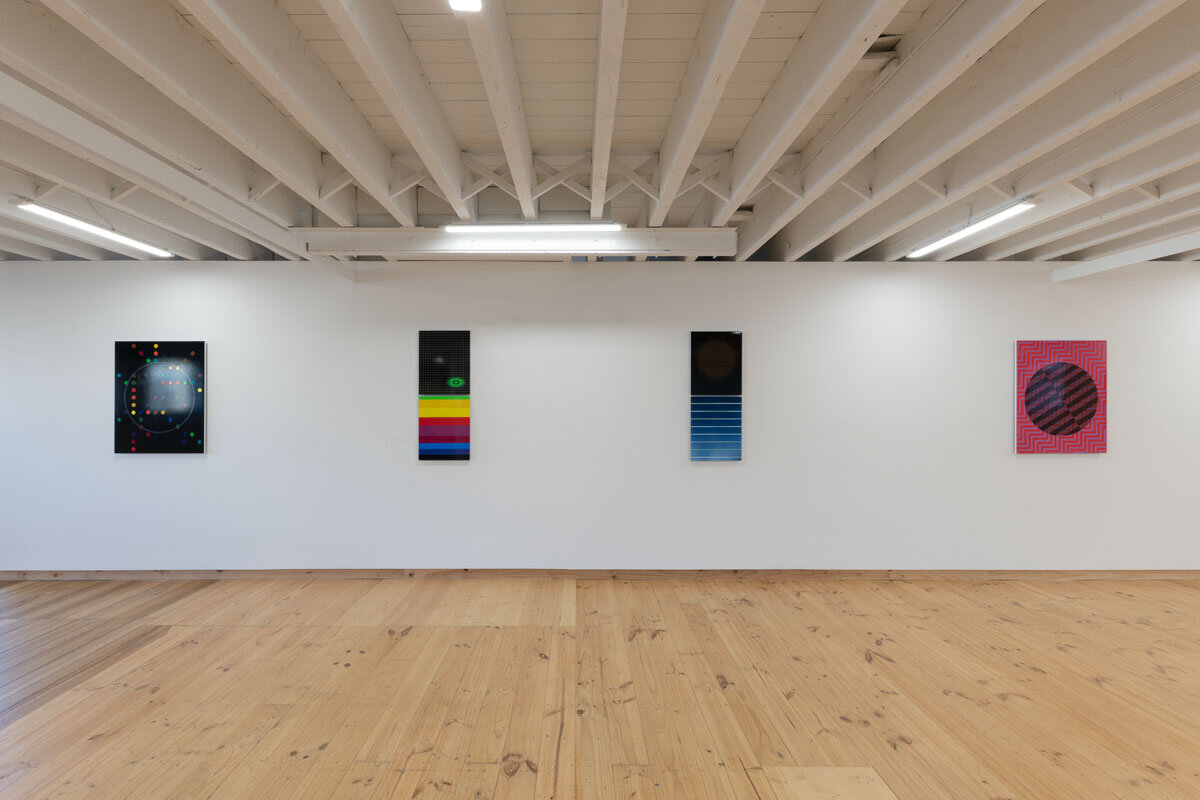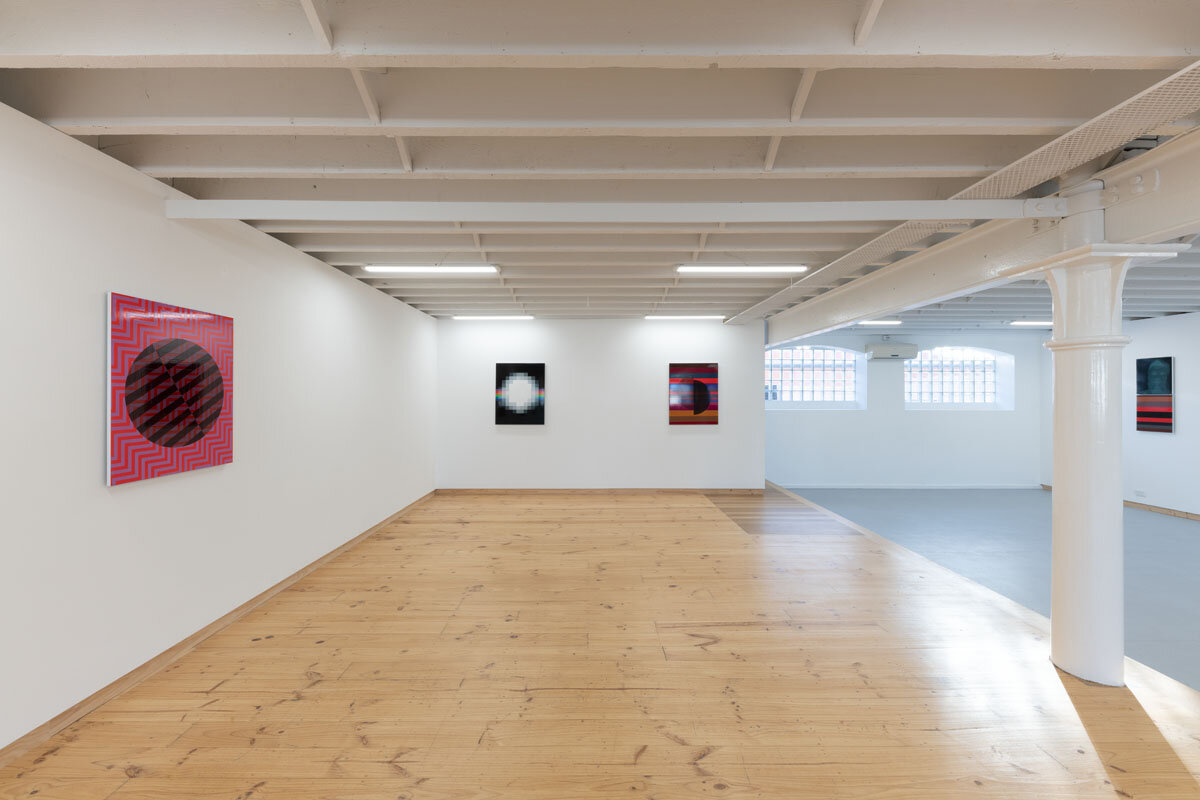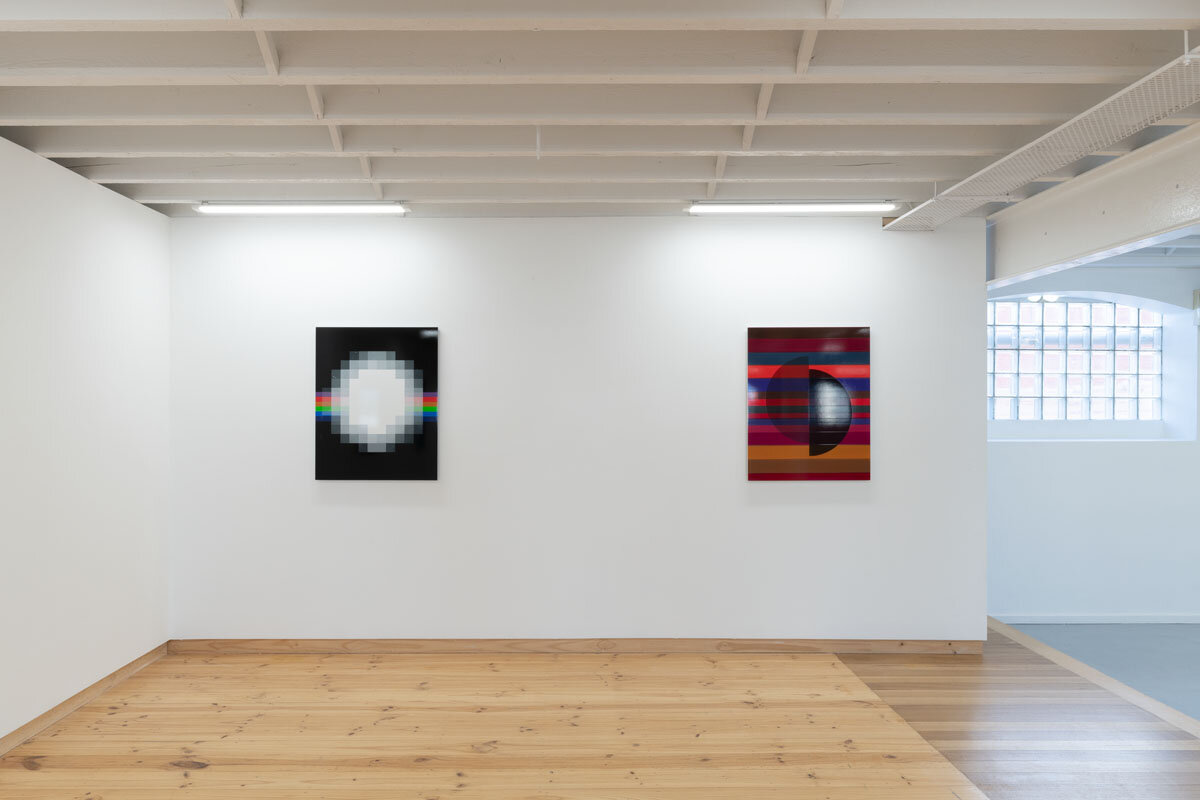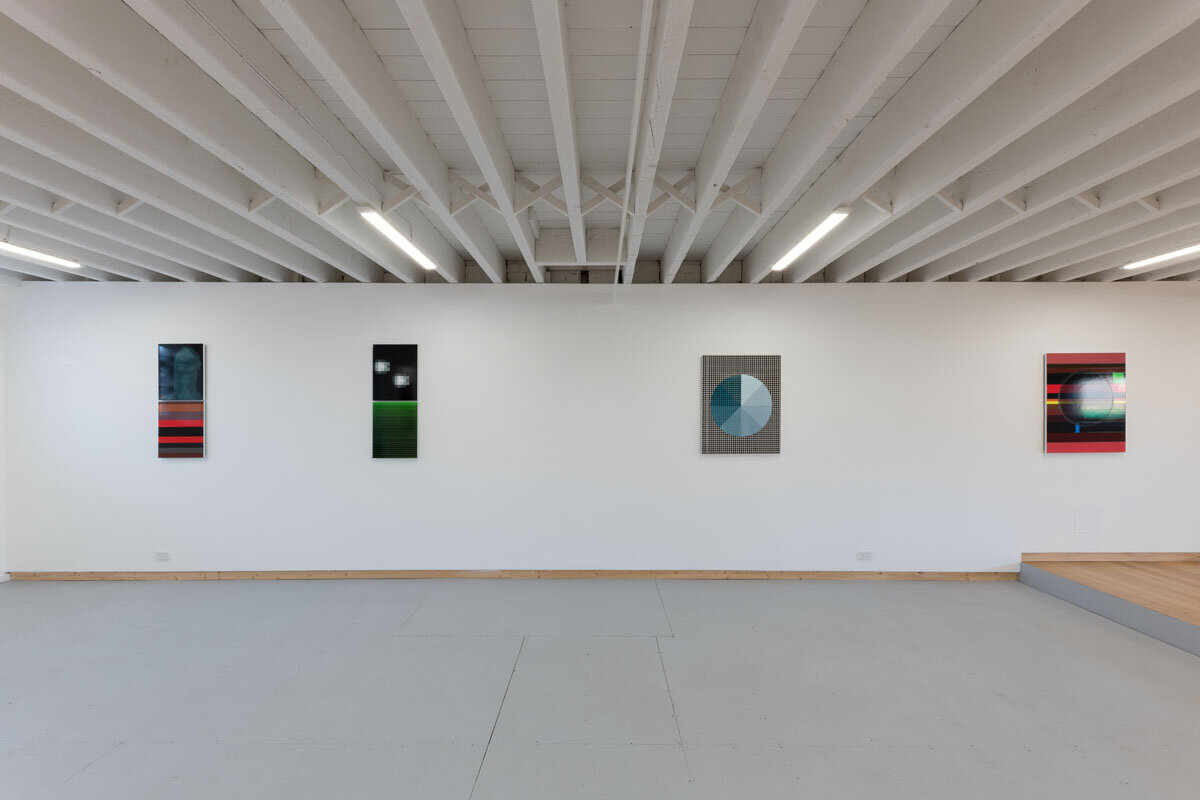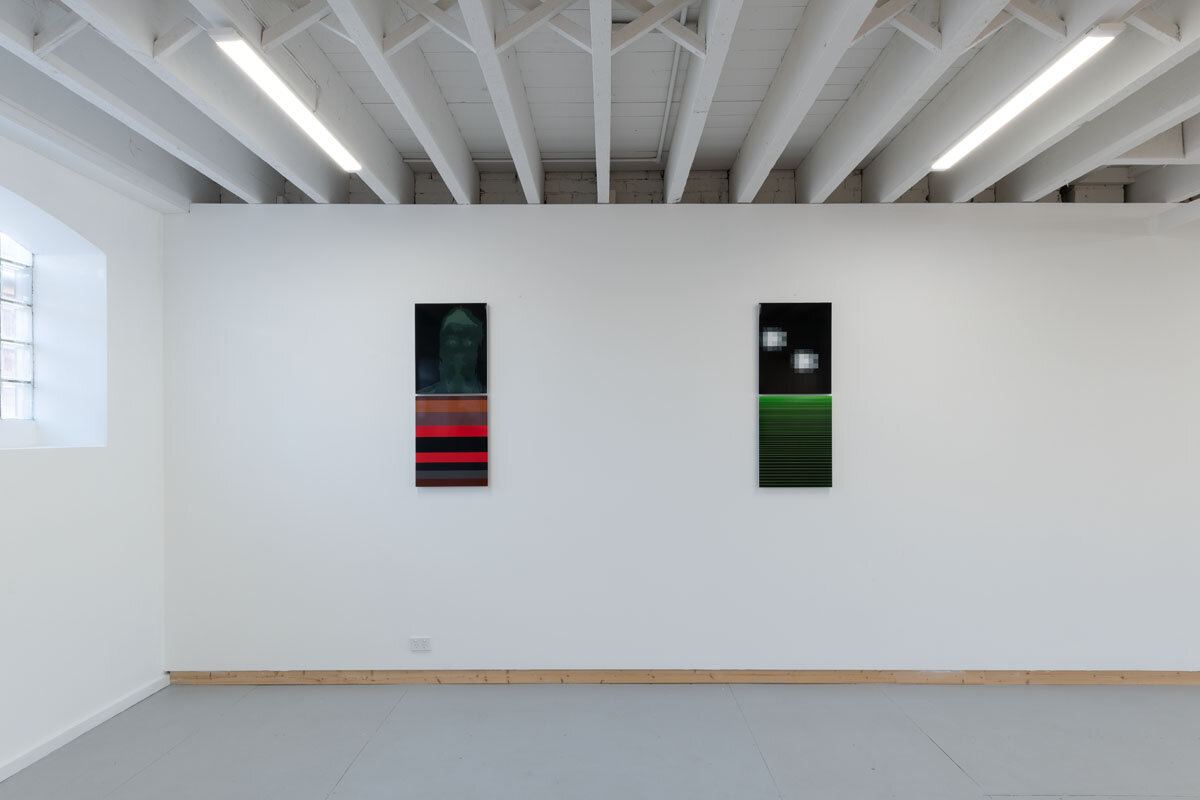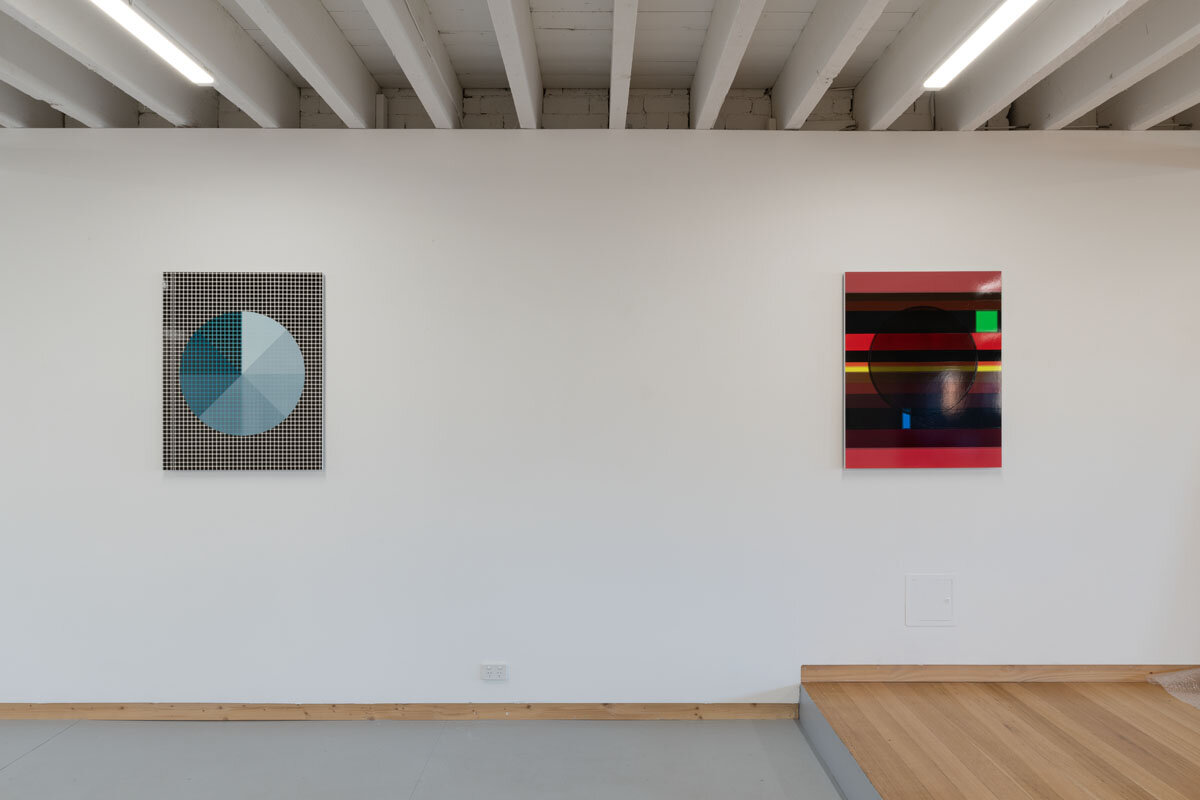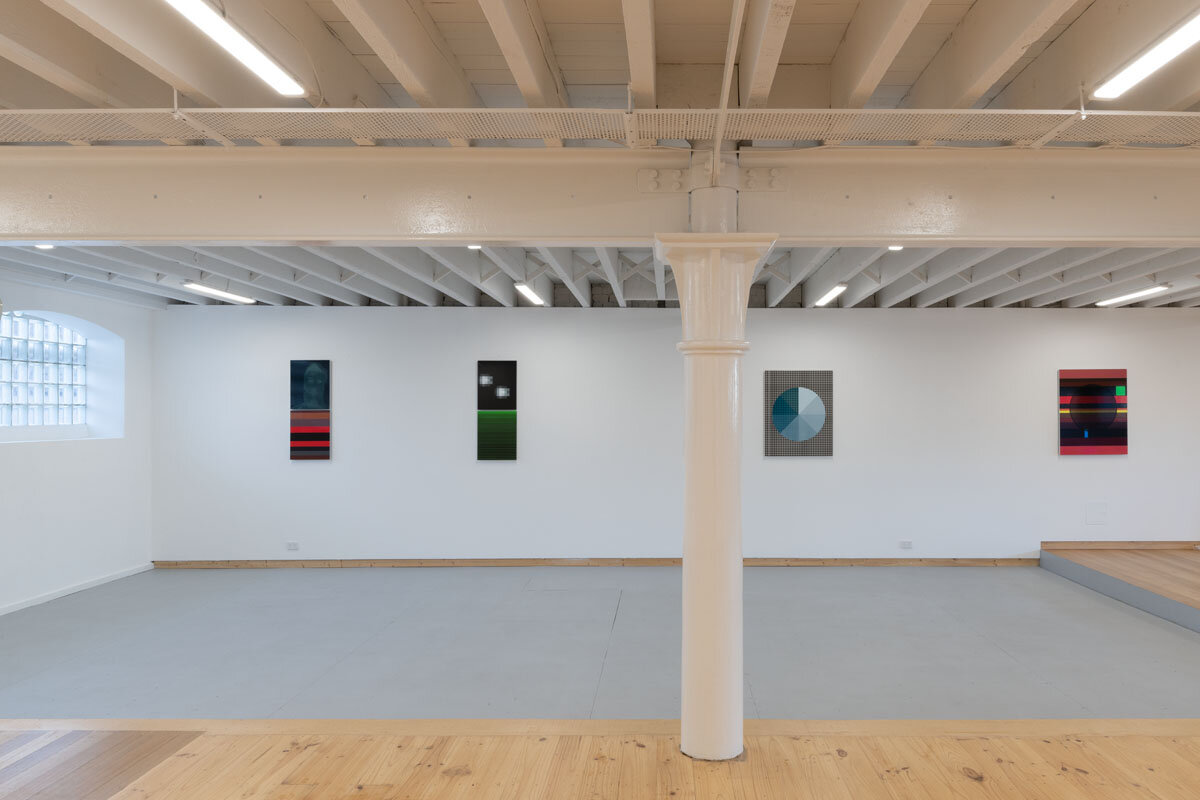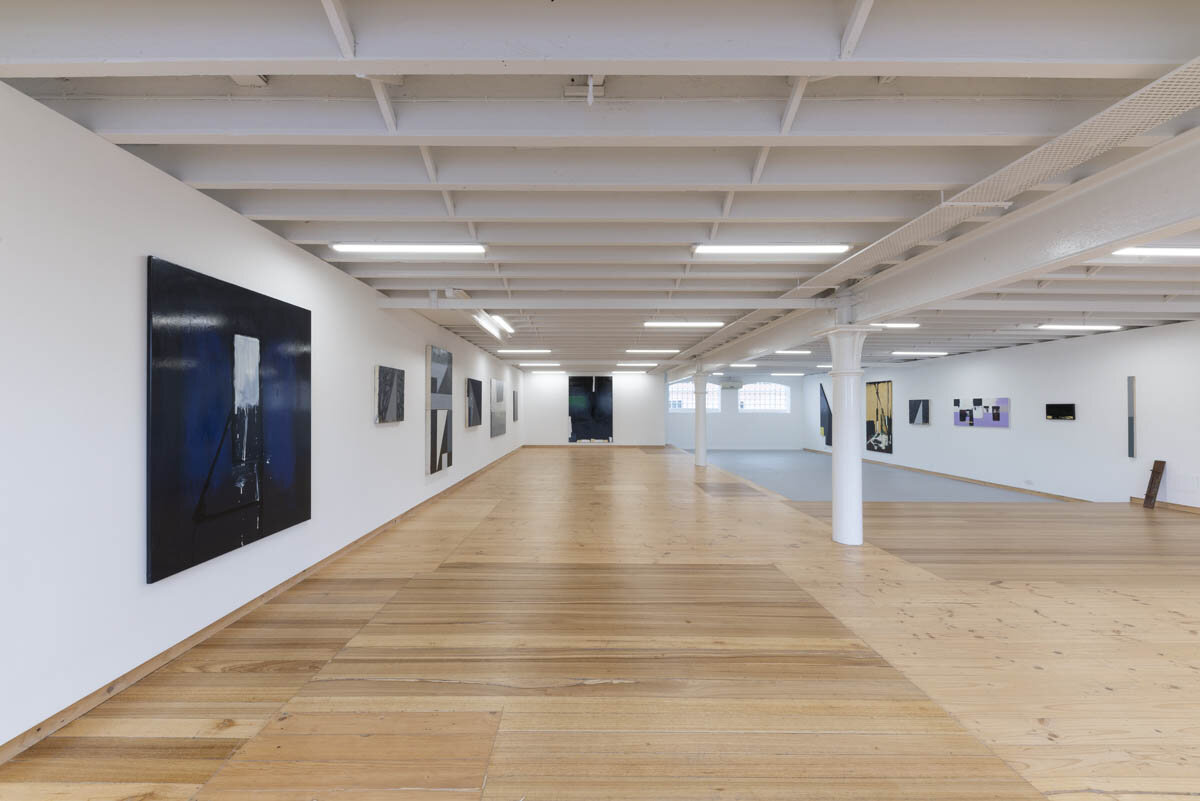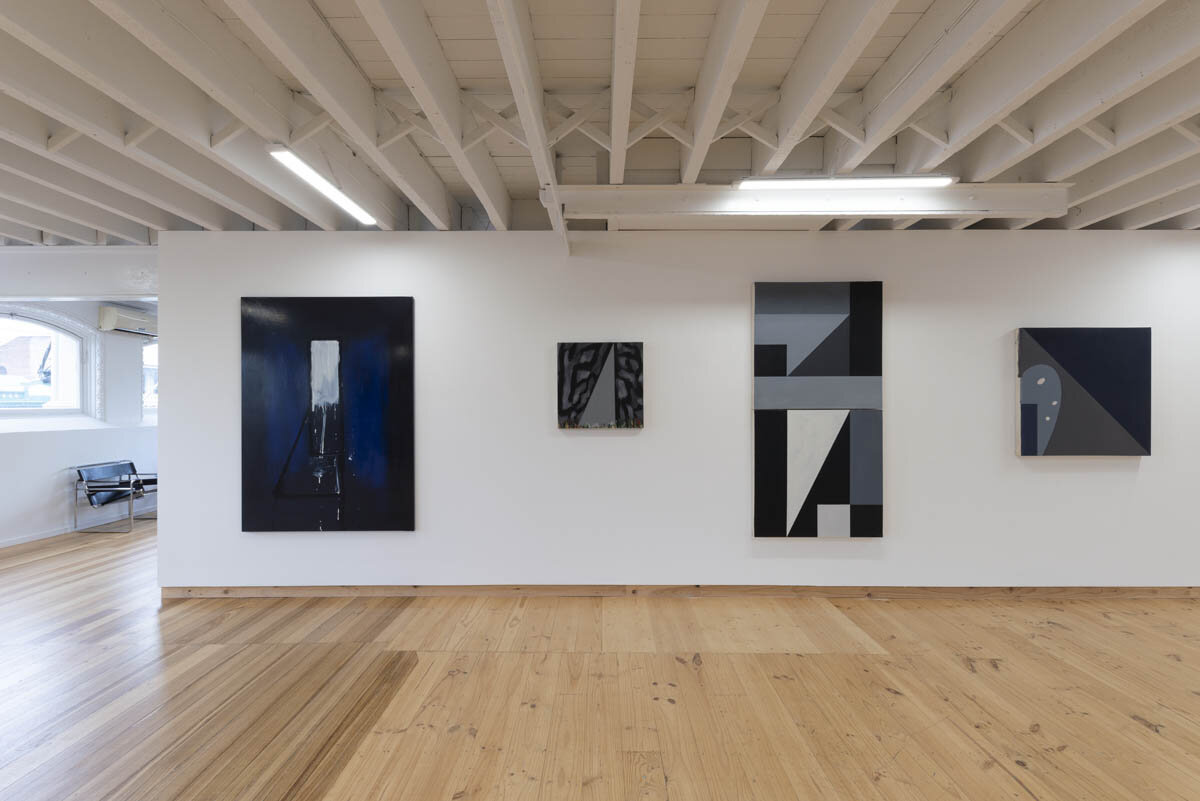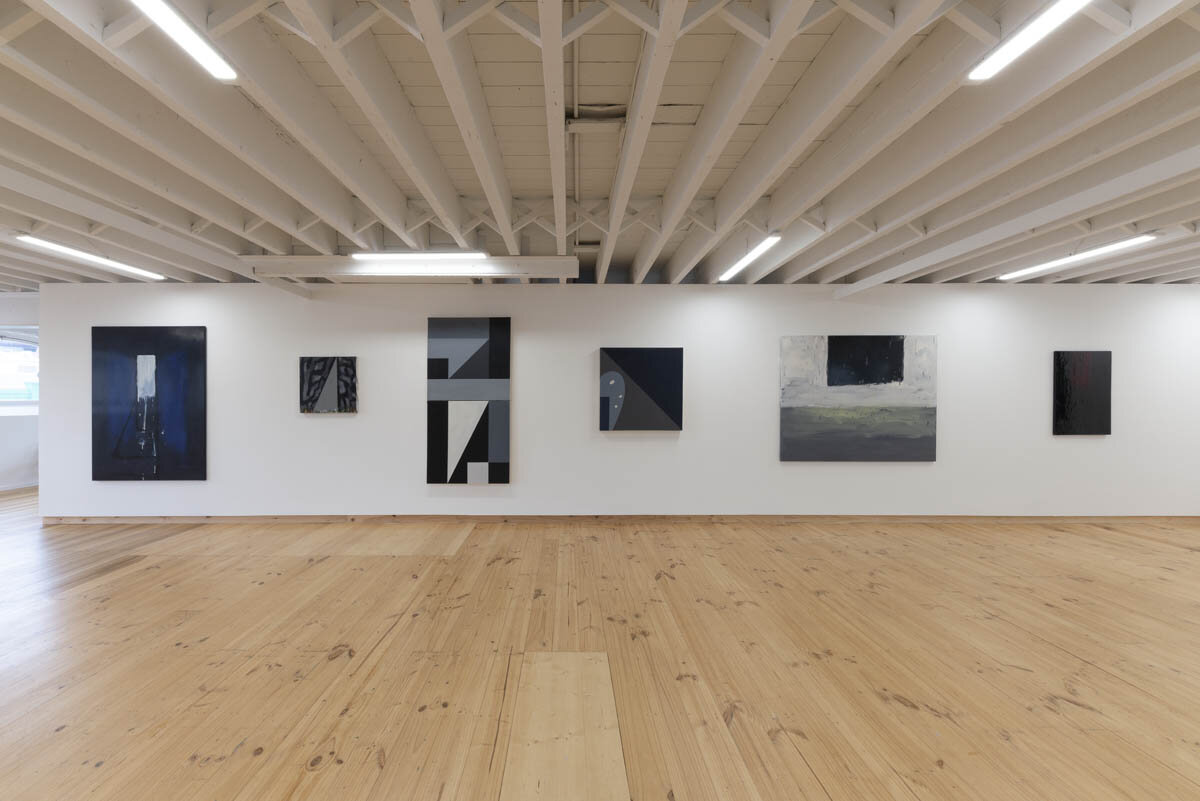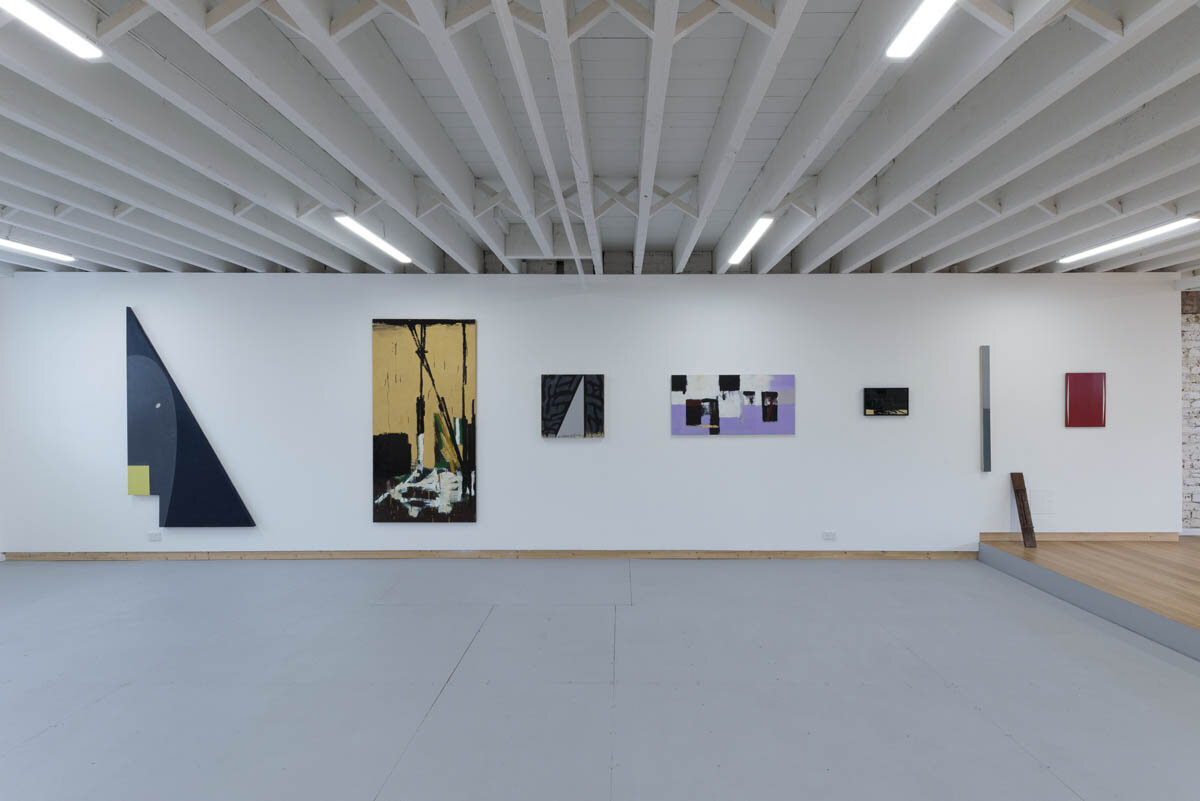Julia powles measuring the rain
Julia Powles
10.11.21 - 04.12.21
Installation images, Julia Powles; Measuring the Rain. Blockprojects, 2021. Photography: Simon Strong
Julia Powles’s exhibition Measuring the Rain takes its title from her father’s daily practice of collecting data for rainfall charts.
The science of meteorology has long fascinated Powles as she finds within it an embedded poetry: the desire to calculate the immeasurable; the impossibility of translating into numbers the enormity of natural phenomena. In dream analysis water often signifies emotion, and in this context measuring the rain takes on another meaning altogether, perhaps indicative of the difficulty of containing the enormity of our feelings. After her father’s death, Powles was left with years of paperwork to dispose of, correspondence that mapped the ordinariness of life, bills and receipts carefully filed away, as well as the years of meticulous rainfall data. In her sculpture Measuring the Rain Powles has taken her father’s accumulated paperwork and turned it into papier mâché disks, made by pressing the pulp between her hands, and then threaded together in the gallery to form a single stratified column.
The study of weather, or changes in the weather, can be found exactly and symbolically in other works in the exhibition. The Last Trickle of Melted Ice (2021) is a photograph Powles took on Deception Island in the Antarctic Peninsula. Moved by the politics of melting ice she chose to document not the glaciers but their puddles. The looping shape of the pools of water connect to the loops and curves in her drawings and paintings, a motif she repeatedly returns to. The series of fourteen framed drawings Sound Waves (2020) offer another interpretation of a scientific phenomenon. Here again we find an interest in the symbolism of science as the drawings illustrate not so much actual sound waves but the relationship of sound to memory. These drawings represent the looping, circling, echoing quality of thought.
Abstraction offers the opportunity to draw connections between divergent concepts. Materially the paintings in this exhibition are rich, offering passages of paint that suggest the gesture of abstract expressionism combined with the experimentalism of the early twentieth century. Imbued within these paintings is a methodology Powles refers to as ‘subjective abstraction’, where each painting is formed uniquely and without preconception, in conversation with the artist’s internal dialogue and in relation to coalescing themes and contents. In this sense, these paintings emerge as a sequence of uniquely discordant and irreconcilable narratives; problems the artist has set herself to solve.
The two orange and yellow suspended sculptures The Parent Traps (2021) are again made from the piles of paperwork Powles inherited from her father. Shredded and stuffed into tubes she has stitched together from her mother’s woollen blankets, The Parent Traps appear as costumes or large-scale puppets. The potential for the loop motif she so often uses in her paintings to also represent a trap has not eluded her, as the tile of the sculpture ambiguously implies. In the process of stitching, pulling looped thread through fabric, an obvious sense of time is embedded into her work. The Worst is Over So Don’t Worry (2021) declares a needlepoint tapestry made during the recent lockdown. Composed using remnants of wool the artist was given by a friend, the message is ostensibly hopeful. We do wonder however, given Powles’s sustained engagement with the psyche if there is not just a touch of irony.
ARTWORKS:
enquire.
eduardo santos: saudadeS
28.07.21 - 11.09.21
Installation images, Eduardo Santos; Saudades. Blockprojects, 2021. Photography: Simon Strong
“The Soul never thinks without a picture.” Aristotle
Santos is known for dense complex paintings that verge on sculpture. The arid cracks and patina generated by raw pigment and sand create surfaces that are haptic and mobile. His physical methods of buidling up the layers (or skins) of each picture is driven by the fluid movement of paint that seems to push at the chemical limits of movement and opacity. The gestation of each picture is gradual.Each piece takes time to accrete. Santos watches the paint as it bleeds. The work he leaves to dry each night often mutates by morning. Unguided by a controlling hand or contriving brush, the process feeds on itself.
The “Saudade” paintings explore proportion, both compressing and expanding in their scale. Like the lens that zooms from the astral to microscopic view, these works shift from the aerial to the subterranean. As a result, they can feel both weightless and encrusted. The collection of paintings is flamboyantly maximalist yet strangely self-contained. The monochrome works absorb light like a vacuum. They remind me of the terror of outer space. And though it seems literal to draw a comparison between pockets of negative space in the belly of a painting and the punctured holes of the ozone layer, the image is salient. Contemporary art with any real relationship to nature confront ruin.
Painted in the arduous and repressed cycle of isolation during the pandemic, these works stage a catharsis. Absorbed in an atmosphere of tension they answer the collective desire for release. In them l find a nostalgia for freedom. Physical, geographic and spiritual freedom. To express a very complex context Eduardo Santos looked to the concept of stasis and the conflicted desire it inspires. Memory stained by both elation and sorrow is roughly the English translation of the Portuguese word “Saudade”. The Fado song “Saudade” by Cesaria Evora speaks of an endless cycle of return, a state of longing hinged on distant. It is natural to mourn a place that is sealed off, partitioned by hard borders. The artist describes his recollections of Brazil like a strata, both compressed and visceral. Over years it has served as the atmospheric bedrock of intensely abstract paintings. Works that encircle and absorb the pattern of their own forms. Works that defy the weight of materiality, expanding beyond the sum of their parts.
Anna Johnson. 2021
BOOK YOUR APPOINTMENT to visit the gallery.
q&A: eduardo santos
Brazilian painter and photographer Eduardo Santos presents Saudades, his third and largest solo exhibition with Blockprojects. As the title suggests, it is imbued with a certain melancholy: a dreamscape expressive of Santos' longing for the topography and environs of his homeland.
The Portuguese word saudades can also imply a recollection of happier times, events that brought joy and pleasure, that we look back on with a certain pang. It is most closely translated in English as 'bittersweet', a feeling of wistfulness that many people can identify with under the present circumstances. Santos aims for a universal expression of feeling, to offer solidarity with the viewer, and provide artistic succour in these times of emotional pain, forced separation, and anxiety.
Can you tell us how long you have been working on these paintings, and the conception of the exhibition. Obviously the crisis situation we have all been enduring would have had an influence on your approach? The title seems to be both a bit nostalgic, and possibly an acknowledgement of loss at this time.
I have been working on this series since the beginning of the year. Our current situation [with the pandemic] definitely had a big impact on my approach, and I guess that's how my metaphor for these paintings was born.
I know a lot of artists decide on the title for the particular body of work after it's finished. For me, it all started with the realisation of where I found myself at this present moment in my life.
It was as though a single word could pinpoint my feelings, and trigger my senses. "Saudades" was the guide that I needed to help me hold onto the emotion and memory that was rising within me; it couldn't be more perfect. My narrative for this series of works has developed into something that I don't recall experiencing before.
As I executed the works, the unexpected was revealed; at the same time came a realisation that I have tapped into my own essence, my heritage. That perhaps the culture of the country in which I was born, and left when I was only eighteen years-old, was asserting itself after I have been abroad for twenty-nine years now.
The truth and meaning of "Saudades" is one that is difficult to translate into English. It is a feeling that is hard to explain. I hope that the viewer emerges from viewing my work with a better sense of what is important in their own life, and the connections that matter to them.
Your works have a timeless quality, and yet you must also respond to the world we live in, both as an artist, and as a fellow traveller on this precarious path of life. How do you resolve those tensions within your work, and do you find it easier depending on the medium you employ?
Artistic integrity is a factor from the moment I commence a work. I build my own frames and mount the canvas on board. My concept is that the work, literally, never has to leave its frame: that is its home, its foundation I have made for it. I’m a self-taught artist. I did study fashion and print design, but as I matured that passion dissipated, and I came to realise that I needed something more meaningful. I did not yet realise that I needed to express what was internal.
I never felt the need to study painting [formally]. From my earliest childhood days, I was an adventurous and curious child, and have never stopped creating since that time. Subconsciously, I think I knew that something that is so internal and personal [as creativity] cannot be taught by a teacher, right? It can only be discovered and expressed by the maker themselves.
Perhaps not going to art school has allowed me to experiment with a high diversity of material within my practice, and my curiosity about the unknown has resulted in an exploration of how materials interact. Possibly if I had not turned out to be a painter, I might have become a biologist! As you can see in my work, I have a thing for organic matter: oil, acrylic, and natural pigments are mostly what I use throughout.
From being a young man you have travelled widely, and absorbed influences from many cultures and traditions. You have lived in Australia since 2009, how has that influenced your work?
Different places where the sun shines high have always inspired me. I love travel and discovery, new cultures. The light of a place is very important for my wellbeing, and plays a big part in my work. I guess it's a doorway back to the place where I was born in the north of Brazil, and that is definitely why beautiful and bright Australia feels home to me now.
The creative consciousness is vast, and I believe everything is connected. Nature functions with one inextricable purpose: moving, going forward, and evolving. The energy of life, the cosmic energy that drives us all on, is present every single moment of our life. Always, with the same process of renewal: one strand of hair falls from your head to create space for a new one; a leaf falls from a tree somewhere else in a cycle that ushers in new growth. I think that is why sometimes a number of similarities can be found in the work of artists from very disparate backgrounds.
I don't plan, I never envisage what painting I'm going to create. I let things evolve, and the desire to discover the unseen is like a process of connectivity. When I feel this connectivity, it is like a sensation and a tingling running under my skin, emanating from the earth, the sand and rocks. It is a connection both to the sky and earthly matter that can't be completely represented.
One of the reasons I don't give a title to individual works is because I find it unnecessary, and it can impede the viewer's connection with my work. I love to see my audience free to see what they want, and find their own connection within their own experience. My work always connects somehow, or reminds people of something.
Your palette is quite limited in this body of work. Was that a deliberate choice to contrast the bright blue with the more subdued grey/black tones?
Initially, I thought this body of work was going to be monochromatic, more black-and-white, but as it evolved, and after I finished the first ten small black-and-white works, I felt that something was missing. As I dived deeper into my metaphor, there was no question that I needed to bring in the colours that most resonate with me about Brazil, blue and green. They had to come in for the work to feel complete.
You are descended from the Amazonian tribes of your native Brazil. You have previously spoken about the formative influence of your Grandfather, and his pottery making, on your art and the philosophy of your practice as an emerging artist. Does this remain a factor in your artistic maturation?
My maternal Grandfather 'escaped' his tribe as a child, or that is what he grew up believing. My family has a different theory: we think that he might have been kidnapped, or taken by a farmer. Back in those days, it was quite common for farmers to seize Indigenous Indians for forced work/slave labour on their farms.
It is a story that has been lost to us really, as he was never able to talk much about his childhood, apart from what he remembered about working on the land of this farmer. Later in his life my Grandfather became the owner of his own land. He did not have many possessions and built his first mud house by himself. He was incredible with his hands: he could make a basket out of coconut leaves in minutes.
I can't remember so clearly, but he used to take me to collect clay from the riverbanks for making cooking pots and water jars, caps and bowls. Many times my Mother would collect me from my Grandfather to take me home and I would be covered in mud. I can still taste the flavour of the mud, sometimes I can feel it on my skin and under my nails, the same sensation that I have when I paint.
My Mother was working full-time as a teacher, and had four children, so I spent most of my early years bouncing between the care of her parents and them looking after me. I don't know if I would have become the artist that I am today if I had not had that formative experience with them.
My initial love for fashion came from sitting and watching my Grandmother sewing. While I sat on the floor she would tell wonderful stories as I played with the fabric off-cuts that would fall on me. She was a dressmaker, also self-taught. Neither of them had any kind of school education, but the schooling they gave me was the best Art School that I could ever wish for. It had a magical and profound impact on me. Both my Grandparents were functionally illiterate, yet they instilled in me the belief that we are all capable of great things. I honour them in my artwork.
ARTWORKS:
enquire.
ROBERT DOBLE: THE FORGOTTEN WORLD
26.06.21 - 17.06.21
Installation images, Robert Doble; The Forgotten World. Blockprojects, 2021. Photography: Simon Strong
In this exhibition, The Forgotten World, robert doble continues to develop an aesthetic vocabulary that is uniquely personal yet universal.
ARTWORKS:
enquire.
JO WILSON: FORM WORK & TOM VINCENT: INTROSPECTION
26.05.21 - 19.06.21
Installation images, Tom Vincent: Introspection, & Jo Wilson: Form Work. Blockprojects, 2021. Images by Mark Ashkanasy & Tom Vincent.
SOLO exhibitions by
Jo WILSON & Tom Vincent
Both artists celebrate the power of imagery using traditional and found materials in a unique and experimental manner, which offers an intuitive and honest experience between the objects and the viewer.
Tom Vincent: Introspection.
”These works have arisen from a way of looking and observing in an attempt to gain an understanding of the nature of myself and the place we find ourselves in. Experimentation and discovery are key drivers to my work, and these are experiences that occur not outside of my body but rather inside my head with my eyes closed as a type of thought experiment or consciousness exploration.
I have been aware of a constant of movement, a constant marching of the natural systems we inhabit most of my life. A cycle or rhythm that at its core is an oscillation between on and off, open and closed. A cycle that, as much as we like to think it, we are not removed from. Through observation of these movements and rhythms of the world I became increasingly aware of the importance of stillness. Seeking to find stillness in a continuous ocean of waves and current has helped me observe what I see both with my eyes open and closed, gaining an insight into my own true nature. These works are made from a point of introspection past what I think I am. The waking, walking, talking and painting human being I think I am. But rather from the point of view inside, underneath the movement and flow at a point of stillness.”
Tom Vincent ARTWORKS:
Jo Wilson: form work
A plastic injection moulding factory in an outer south-eastern suburb of Melbourne seems an unlikely starting point for Jo Wilson’s refined sculptural works. It is this site however, where she maintains a studio and sources most of the elements used in her art, inspired by the sheen of tools and machinery, and the texture of wooden sandcasting moulds, which make up the patina of its industrial landscape. Established and operated by Wilson’s father, Bob, this particular factory is deeply embedded in her being – she has spent many days there over many decades, and in addition to registering the ingenuity and technical skill of its workers, its spaces also conjure up memories of a strong father-daughter bond.
The components Wilson used to make this body of work had been gathered over a number of years, removed from the factory context so that their material qualities – shape, size, colour and so on – could be considered independent of their traditional function. Having a reserve of pieces at home, she was able to work throughout the extended lockdown which Melbourne residents experienced last year. Using what was at hand, without the prospect of being able to add to it, her approach was more playful and she incorporated materials that might otherwise have been discarded. Wilson describes the process of making during this strange time as having a calming effect and there is something meditative in her hand-working of these pieces, from the graphite dust which is rubbed into timber surfaces until they take on the appearance of metal, to the carefully painted grids based on fragments of steel mesh found in the factory. In a series of white works, sheets of paper clay which record the impression of mesh and small pieces of embossed paper (both harking back to Wilson’s experience as a printmaker), embellish sandcasting moulds, creating serene minimal compositions. Particularly prominent in these works is Wilson’s sensitivity to texture, the smooth surfaces of the wall works contrasting against the totems, where the tactile, natural grain of the timbers is highlighted.
The materials and processes used to create these works are many and layered. The end result is simple however, pared back forms constructed from geometric shapes in a limited palette of grey, ‘Wilson Green’ (a bespoke colour mixed to the artist’s specifications) and white, alongside the varied tones of timber. Although the functional purpose of the individual elements Wilson uses is no longer apparent, she celebrates the detritus of industry, acknowledging the workmanship that went into their production as she transforms them into objects of beauty. Fundamentally abstract, these works are rich in meanings that subtly echo with memories of labour, family and creativity – what the artist terms ‘talismans of the past.’
KIRSTY GRANT
JO WILSON ARTWORKS:
enquire.
what: withdrawal to the forest
01.04.21 - 22.05.21
Installation images, what; Withdrawal to the forest. Blockprojects, 2021. Photography: Mark Ashkanasy
An exhibition of paintings by what.
what
it’s a simple story
I met him in Katoomba
he told me
he’d left Sydney
for the blue mountains because
it was too expensive
he wanted to paint in peace
i got it
he mentioned
Velázquez casually
i got it
like a writer mentioning
jane austen
like a songwriter mentioning
guy clark
i sensed serious intentions
mixed
with humility
no big man shit
no art theory blizzard
took him at his word
somewhere there
i saw his work
and dug it
then
on another trip to Katoomba
he painted me
red tones
i am in black pants
against a wall
it makes archibald prize
finalists
a good painting
should mention what what
looks like
it was a vital clue
he looks the way
you want an artist
to look - slightly terrifying
wild hair
beard
gentle manner
very inquisitive
in art and the stuff
around art that we will call
life
then
i see self-portrait
screams breakthrough
some tricks
routes
gifted painters
had not followed
what’s face
painted ever so fine
bleeding in and out
and in and out
of field of spectacular
colour
geometric/figurative mix
done
in
master style
then
i get to know
what better
ride in his SAAB
(another sign of genius)
and
play his classical guitar
knowing
he’d devoted years
to mastering guitar styles
to turn
again to
painting
sisters and brothers
this aint no
routine art career
monk-like
immersion
in what he loves
then he hands me the coat
telling me
his girlfriend is
Benedict Cumberbatch
fan from Sherlock
my favourite
tv show/actor of last
years
i
put on coat
what says
‘didn’t think i’d
have to tell you
how to wear it’
'no'
the coat
bought in blue
mountain op shop
lives on me
i pose
and pose
and pose and pose and pose
then
what sends me
finished portrait
on computer
i see
comparison
to self-portrait
also see
fantastic starlit
explosion
into new
territory (time + space)
that we shall call
outer stratosphere
or
modern psychedelic
I’m free in space
looking
ecstatic in space
i
am
beyond
comprehension
of my self
in painting.
witnessing
one
of the great
Australian pieces
of art
since…...
what tells me
he will enter
it
in Doug Moran Prize
and win
i am not so sure
painting a masterpiece
art prizes a gamble
it wins
so
what next?
don’t know
more immersion/ blue mountains
SAAB
guitar
coffee fetish
Velázquez
supreme application
pure intent
i’m watching
Robert Forster (Written on March 7/8 2020)
Robert Forster is an Australian singer-songwriter, guitarist and music critic and co-founded of an indie rock group, The Go-Betweens.
ARTWORKS:
enquire.
THE DIRECTOR’S CHOICE 2021: important australian & international works of art.
17.04.2021 – 28.04.2021
Installation images, The Director’s Choice 2021: Important Australian and international Works of Art. Blockprojects, 2021. Photography: Angela McKinnon
This group exhibition features a selection of abstract and figurative paintings, works on paper and sculpture by important Australian and International artists.
ARTISTS:
Tony Bevan,
James Clayden, Adam Cullen, Robert Jacks, John Olsen, David Thomas, Tony Tuckson, Ben Quilty, Brett Whiteley, Ken Whisson, Fred Williams.
SELECTED ARTWORKS:
David Thomas: Moving Times
03.03.21 - 03.04.21
Installation images, David Thomas; Moving Times. Blockprojects, 2021. Photography: Christo Crocker.
An exhibition of paintings and photopaintings by David Thomas
This exhibition includes large paintings, primarily monochromatic in nature, large scale photopaintings from the ongoing Impermanences Series; and smaller photo paintings from the Water/Wash Series.”
Please see the accompanying publication “David Thomas: Moving Times”, available for purchase from the gallery.
BOOK YOUR APPOINTMENT to visit the gallery.
ARTWORKS:
enquire.
Neil Keith Baker: A Coarse Correspondence.
03.02.21 - 27.02.21
Installation images, Neil Keith Baker; A Course Correspondence. Blockprojects, 2021.
Neil Keith Baker was born in Luton, England. He gained a BA (Hons) in Fine Art from Norwich School of Art and Design, in 1999. After a period of independent practice he returned to study at The Slade School of Art, London where he completed an MA in Fine Art in 2007.
BOOK YOUR APPOINTMENT to visit the gallery.
ARTWORKS:
enquire.
Ross A. Waterman: Nick Cave Shot live 1983 - 2007
Re-OPENs 13.01.21 - 23.01.21
Installation images, Ross A. Waterman; Nick Cave Shot Live 1983 - 2007. Blockprojects, 2020.
Blockprojects is proud to present, a series of photographs by Ross A. Waterman, documenting singer, songwriter, screenwriter and composer Nick Cave. Nick Cave is best known as the lead singer for Nick Cave and The Bad Seeds.
BOOK YOUR APPOINTMENT to visit the gallery.
ARTWORKS:
enquire.
HOW SOON IS NOW
12.08.20 - 12.09.20
Installation images, How Soon is Now. Blockprojects, 2020.
Blockprojects is proud to present, HOW SOON IS NOW,
an exhibition featuring fifteen contemporary artists who explore the mystery of abstraction.
ARTISTS:
Darren Munce
Julia Powles
Eduardo Santos
David Thomas
Tom Vincent
David Wallage
Peter Westwood
Neil Keith Baker
Merric Brettle
James Clayden
Dandan Dai
Robert Doble
Marc Freeman
Kyle Jenkins
Jason Haufe
enquire.
THE DIRECTOR’S CHOICE 2020: LEADING AUSTRALIAN AND BRITISH ARTISTS
09.06.2020 – 11.07.2020
Installation images, The Director’s Choice 2020: Leading Australian and British Artists. Blockprojects, 2020.
This group exhibition features a selection of abstract and figurative works by important Australian and International artists.
ARTISTS:
Tony Bevan,
James Clayden,
John Colburn,
Adam Cullen,
Sydney Nolan,
Albert Tucker,
Gareth Sansom,
Peter Walsh,
what.
SELECTED ARTWORKS:
JAMES CLAYDEN: PAINTINGS - DRAWINGS - GROUPINGS
10.03.20 - 11.04.2020
Complex Translation by Adrian Martin
Art, a wise person once said, is a matter of the “complex translation of the seen and the felt to a series of visual marks on a flat surface”. That’s a mystery you can contemplate forever. For such translation has nothing to do with verisimilitude, copying, faithful reproduction. Things change, transform along the line between the seeing & feeling, and those marks laid upon the flat, layered surface.
The original impetus – that landscape, object, face, moment, flicker or flare – can be lost altogether, beyond recognition in its eventual rendering. That doesn’t matter, in the end. It is what arises, what we – both artist and spectator arrive at, which counts.
James Clayden can sometimes seem like an abstract painter. But I never, personally, find his work (whatever media he uses) to be entirely abstract. There is always the trace – sometimes evident, at other times faint – of what, in the world, inspired him to begin his complex translation.
We sometimes see a line, a shape, a nose, a post, a fence railing. Maybe that’s what they are, maybe not. The nomination doesn’t matter. What matters are the visual marks, the marking, the intensity and process of that.
Edward Colless writes: “It is something else – that com- motion of vague and fleeting sensations … I loiter among vagrant, half-formed perceptions, bewitched”.
It seems to me that James begins from something at once very concrete (a sight, a sense-impression), and some- thing cloudier: a feeling, an association, some obscure reminiscence that has been sparked within him. It is all those things at once that he seeks to translate. Not to disentangle them, necessarily, but certainly to convey them to the canvas, page or screen. Maybe he himself is not always completely sure what this process is all about. But it drives him.
Sometimes, I feel, with a sharp pang, that I grasp some- thing very specific in his pictures. Maybe a person I know (who we both know), a film scene that I too have seen, a precise location where I have stood and viewed something from that very same angle. There are place names indicated in the titles: Hampstead Heath, Primrose Hill. Have I ever been there, or are these pictures just making me imagine it was so?
I never attempt to verify any of this with James, because I may be entirely dreaming it. But what’s important is that his art can incite this game of fleeting projection and recognition.
The fleetingness is what matters. The dissolution and rebirth of the trace. The loss of a stable, consensus referent; but also the finding of a personal point. Just for a moment, before it vanishes again. The complex translation that takes the artist down one path, and the spectator along another, around the same work.
There is truly a hallucinatory aspect to immersing your- self in James’ work; that’s certainly my experience of it, at any rate. Dark patches, shadow, pools of night. Outlines are blurred, and are plunged into amorphous masses. The tops of trees shimmer and dissolve into each other. Square objects – they could be anything – rise out of the ground, but also disappear into it. Faces are creased, folded, their features unaligned.
The eternal mystery of the horizon: is it a thing, existing in itself, or just the interval between other things, land and sky, earth and clouds? The horizon is the line that is not a line; yet what work it can do inside an image.
The hallucination can be three-dimensional, 3D. Layers and smudges on that surface. “The skin of another”– where skin is translated by folds and swathes of coloured paint. Depths emerge but then find themselves, once again, brutally flattened, cancelled. James is always fighting with the flatness, resigning himself to it, then making it “pop”, somehow, in and for our eye.
The incessant movement in his film and video work is never far away from his paintings, drawings, and other as- semblages. Yet his films and videos, too, wage war, stage a dance, between the flatness & stasis of abstraction and the fullness of actors in space – a space of theatre, of mise en scène, another medium in which he works and plays.
James is often involved with the telling of stories in his work. But the stories are cryptic. Suggested, elusive, allusive. Memories crossed out, but still visible, struggling to be seen and heard. Ghost paintings. A vertigo of the visible; an inaudible, murmuring soundtrack.
I experience a kind of synaesthesia from James’ art. While I stare, I am hearing the sway and rustle of those trees; and also the scratch and bustle of his own painting- drawing tools. Things are returning to me – even if they are not the same things that James himself began from. Voices speak, whispering poetic fragments in my head.
Ruins of texts, of the sensations and feelings they gave me, once upon a time. Shakespeare, Cassavetes, Sondheim: I know they are all, somewhere, in James’ neural memory banks, and sometimes also in mine. But convergence and divergence are the same, ultimately, in this game. He can start from a mountain and end at a movie; I can go in the opposite direction. The translation shuttle is two-way, and eternal.
Art, the reception of art, is the crowded, suddenly fro- zen, eternal moment in the middle, in medias res. We are caught between things and feelings, objects and their metaphors, memories and their stories. Stranded between the host language and a newer language to come. A series of visual marks on a flat surface returns us to the seen and felt not the original thing seen and felt, but something else, something that is coming into being.
Something stirring in the darkness and in the light; something flitting between the lines and the outlines. The marks made on our bodies, and our hearts.
James Clayden’s art, in all its forms and manifestations, is the art of infinite suggestiveness.
Adrian Martin is an associate professor at Monash University, and a film and arts critic.
SELECTED ARTWORKS:
DOBLE & STRONG: THE INEVITABLE
11.02.20 - 07.03.2020
Blockprojects Gallery is pleased to present Doble & Strong, The Inevitable.
An exhibition celebration 10 years of artistic collaboration.
DARREN MUNCE: TIMING & LIGHTING
12.11.2019 - 07.12.2019
“…..it could just pass me by, you miss that song, you miss the timing, timing is everything - timing and lighting.”
Lyric from the song Timing & Lighting James Place, from the album Still Waves To A Whisper, 2019
GEORGIA BIGGS: RIGHT UP UNTIL. JARRYD COOPER: SIGHTSEEING IN THE WHOLE SHEBANG
16.10.2019 - 12.11.2019
Blockprojects Gallery is pleased to present a duo exhibition of works by Georgia Biggs and Jarryd Cooper.
STEVEN ASQUITH: ETHEREAL VARIATIONS: 2 RIPS & PUNCTURE MARKS
17.09.2019 - 12.10.2019
Steven Asquith’s new exhibition Ethereal Variations: 2 Rips & Puncture Marks continues his investigation of minimal abstraction that began in the 2017 Ethereal Puncture Marks series. Asquith’s new sequence of works are stripped back, uniform compositions of urban decay and the landscape.
Using stencils and acrylic spray paint, each composition is defined by two vertical slashes and an arrangement of puncture marks that appear to pierce the surface of the canvas. The interplay between the marks produce distinctive configurations through the repetition of materials and form. A luminous white haze spreads across the canvas creating an illusion of space, revealing an otherness behind the flatness of the painting.
The surface appears torn or distressed in parts—like it has been run over by a truck leaving tyre marks imprinted. Perhaps more contemporarily, the viewer is conditioned to the artifice of gazing at a digital screen while images render in and out of focus in front of their eyes. Where does the glare emerge from? Is it a tear in the fabric of our perception of reality or a reckoning of something else beyond
Other means of repetition and materiality emerge. Asquith samples the techniques of graffiti that he distinctively combines with elements of painterly abstraction. Like graffiti and hip-hop culture which sampled and echoed society, Asquith alludes to not only its history, and that of painting and abstraction, but also the current geo-political climate and the 24-hour news cycle.
The tonal variances of pink, purple, violet, orange and blue evoke skyscapes that transition in a twilight haze from dawn to dusk. The ominous skyscapes of toxins, gases, and exhaust fumes are a nod to fossil fuel-based economies and their effect on global warming. These paintings pose questions and suggest a dystopian vision of a scorched earth a few hundred years (or perhaps sooner?) into the future.
Aneta Trajkoski
CANTO
31.08.19 - 14.09.19
Installation images, Canto. Blockprojects, 2019.
Blockprojects is proud to present, HOW SOON IS NOW,
an exhibition featuring fifteen contemporary artists who explore the mystery of abstraction.
ARTISTS:
Justin Andrews
Neil Keith Baker
James Clayden
Will Cooke
Jordan Grant
Denise Green
Melinda Harper
Julia Powles
Tom Vincent
David Wallage
what
enquire.
MERRIC BRETTLE: HYPNAGOGIC BLINK
23.07.2019 - 17.08.2019
In this new body of works titled, Hypnagogic Blink, Merric explores the relationship between hand-painted and digitally-created mark-making. In order to do this, he employs various visual art computer programs, spray paint and a variety of material and conceptual digital image-making techniques.
Employing these materials and methods Merric explores his mark making as he translates found and constructed digital images into material objects. This kind of practice allows him to explore the qualities of the ‘screen’ yet still insert ‘himself’ into the art object.
When looking at these works, Merric would like the viewer to consider two aspects in particular. Firstly he would like them to consider his ‘marks’ in for example the care of his construction, the layering of paint, and the small mistakes or human ‘glitches’ in the fabrication process. Secondly he would like them to contemplate the patterns he created in these abstract images and the way that they may have meaning in themselves. The reason behind these requests he explains,
“…is because it is behind these marks you will find me and behind these patterns you will find the way that I see the world.”
ROBERT JACKS & JAMES CLAYDEN: WHAT IN THE WORLD
28.05.2019 - 22.06.2019
Blockprojects is pleased to present, What in The World, an exhibition of paintings by two of Australia’s most pre-eminent painters of our time, Robert Jacks and James Clayden. The exhibition features paintings from the late 1960s to mid-2000.
